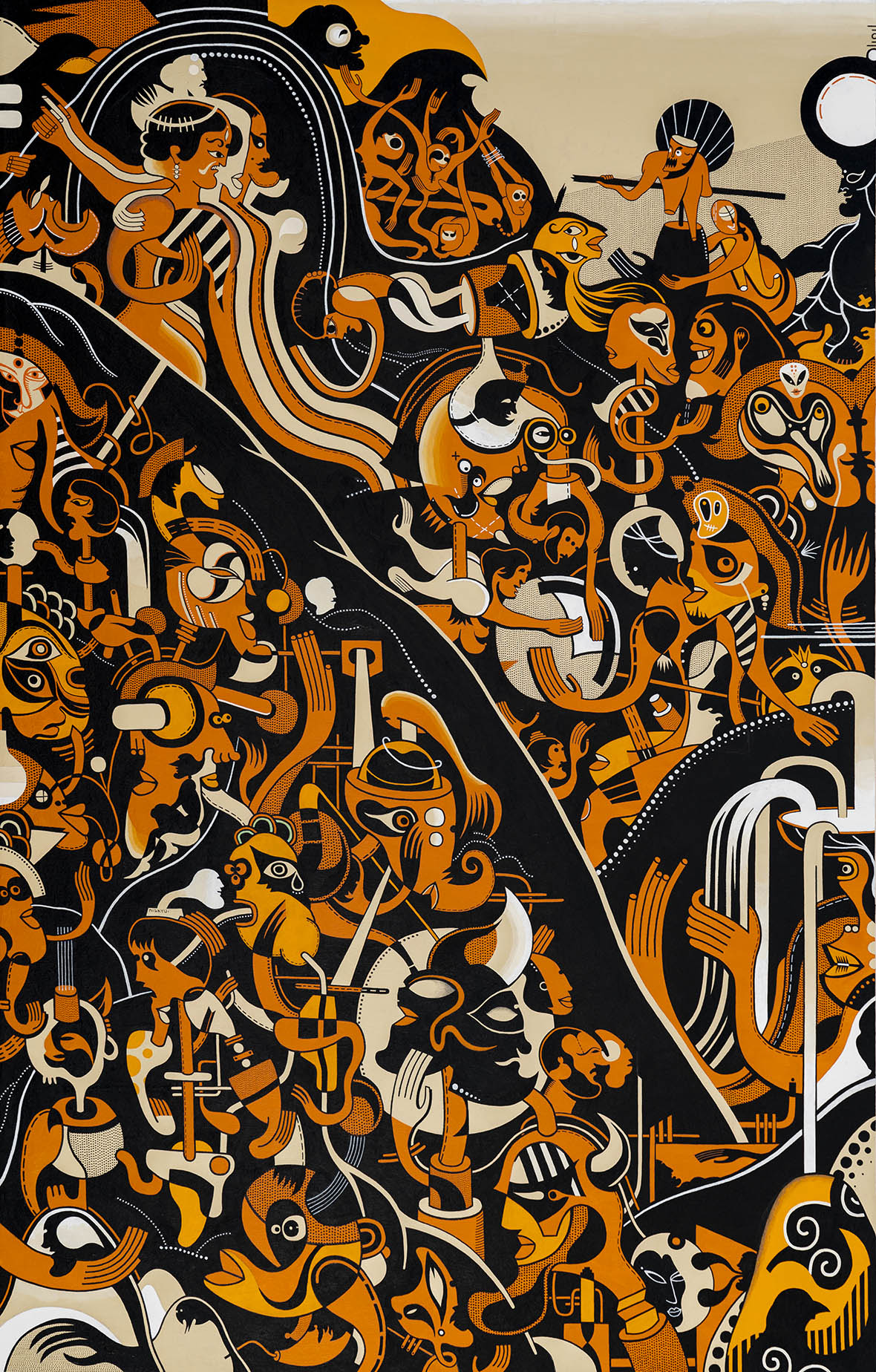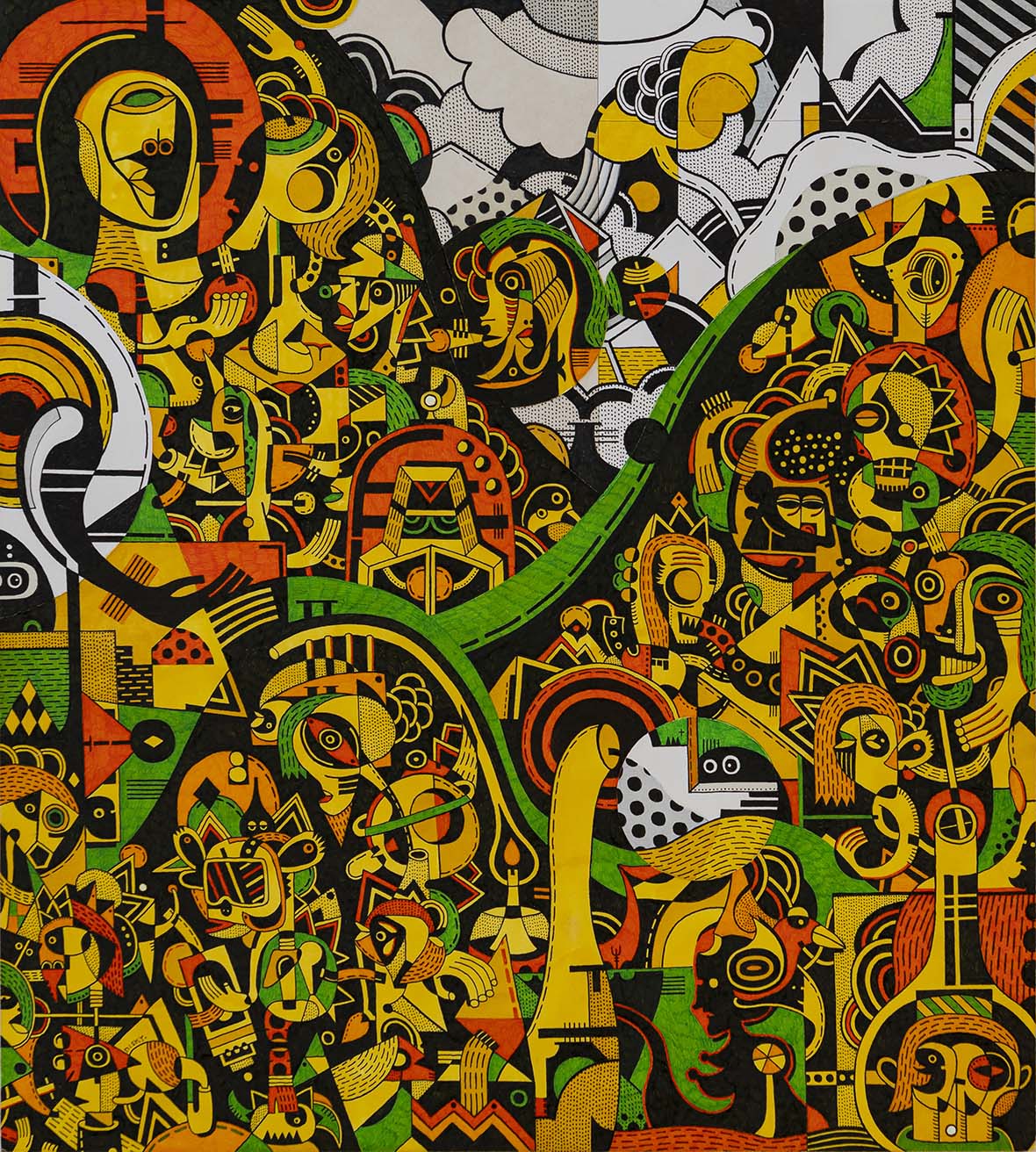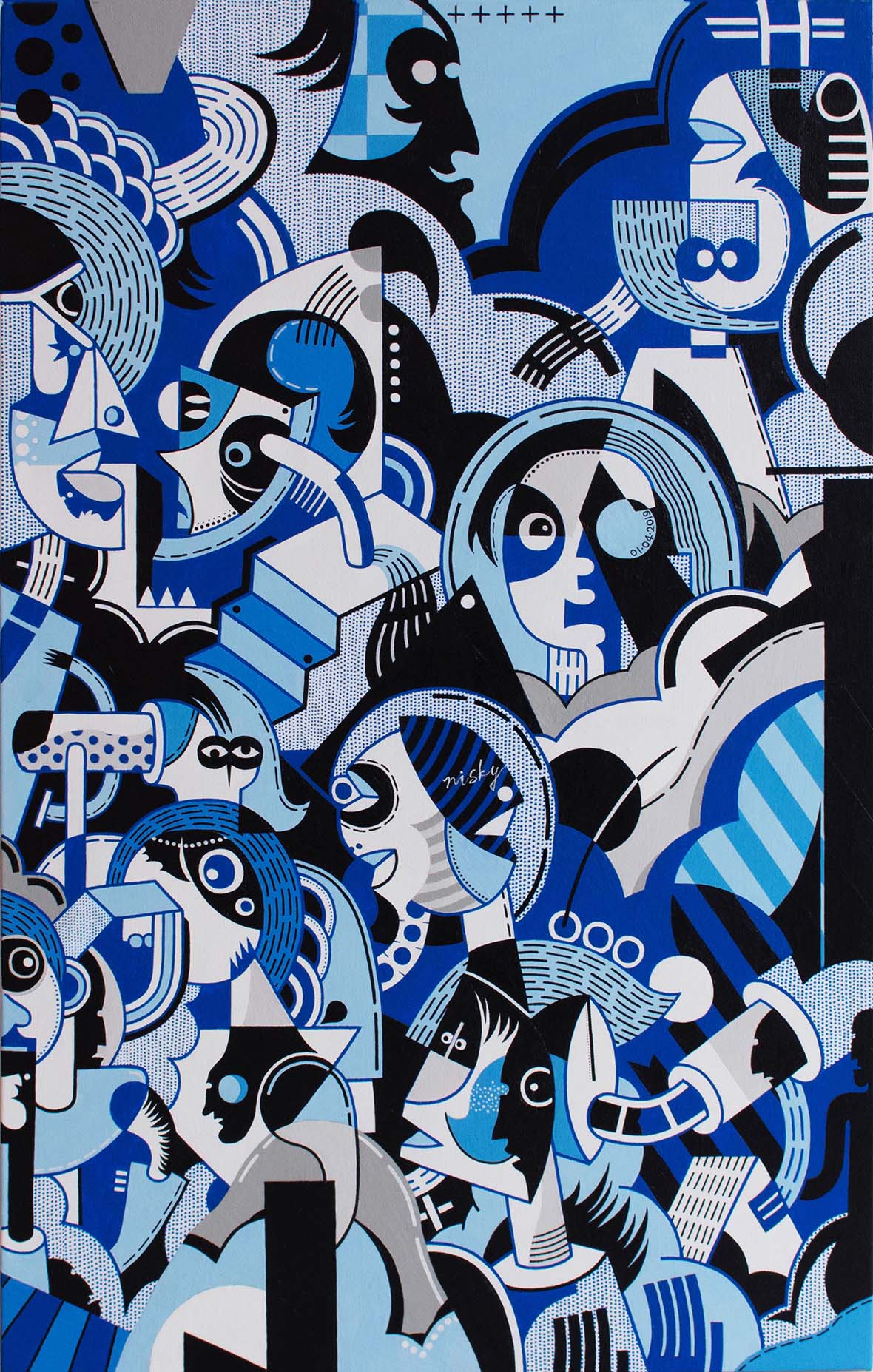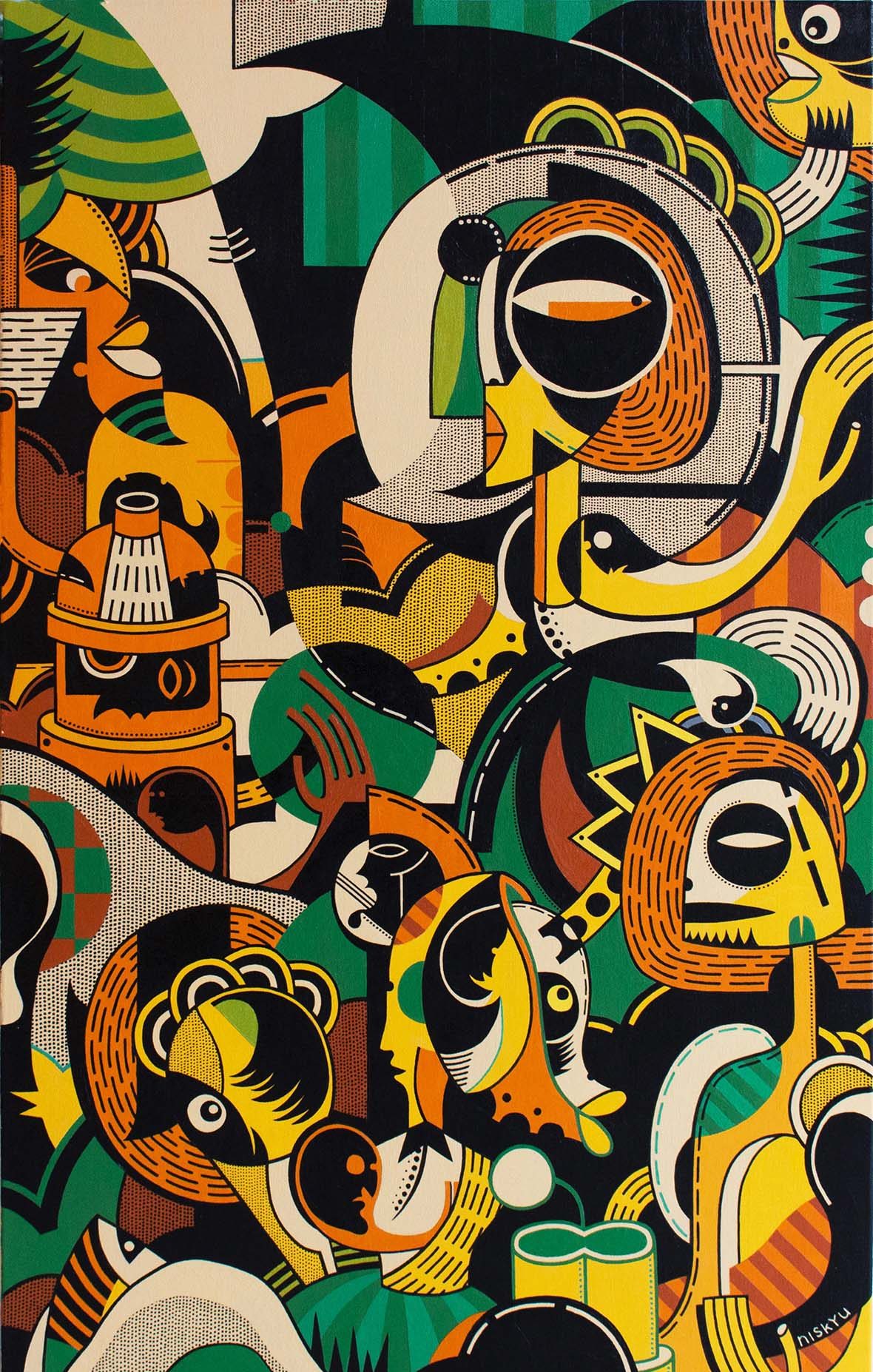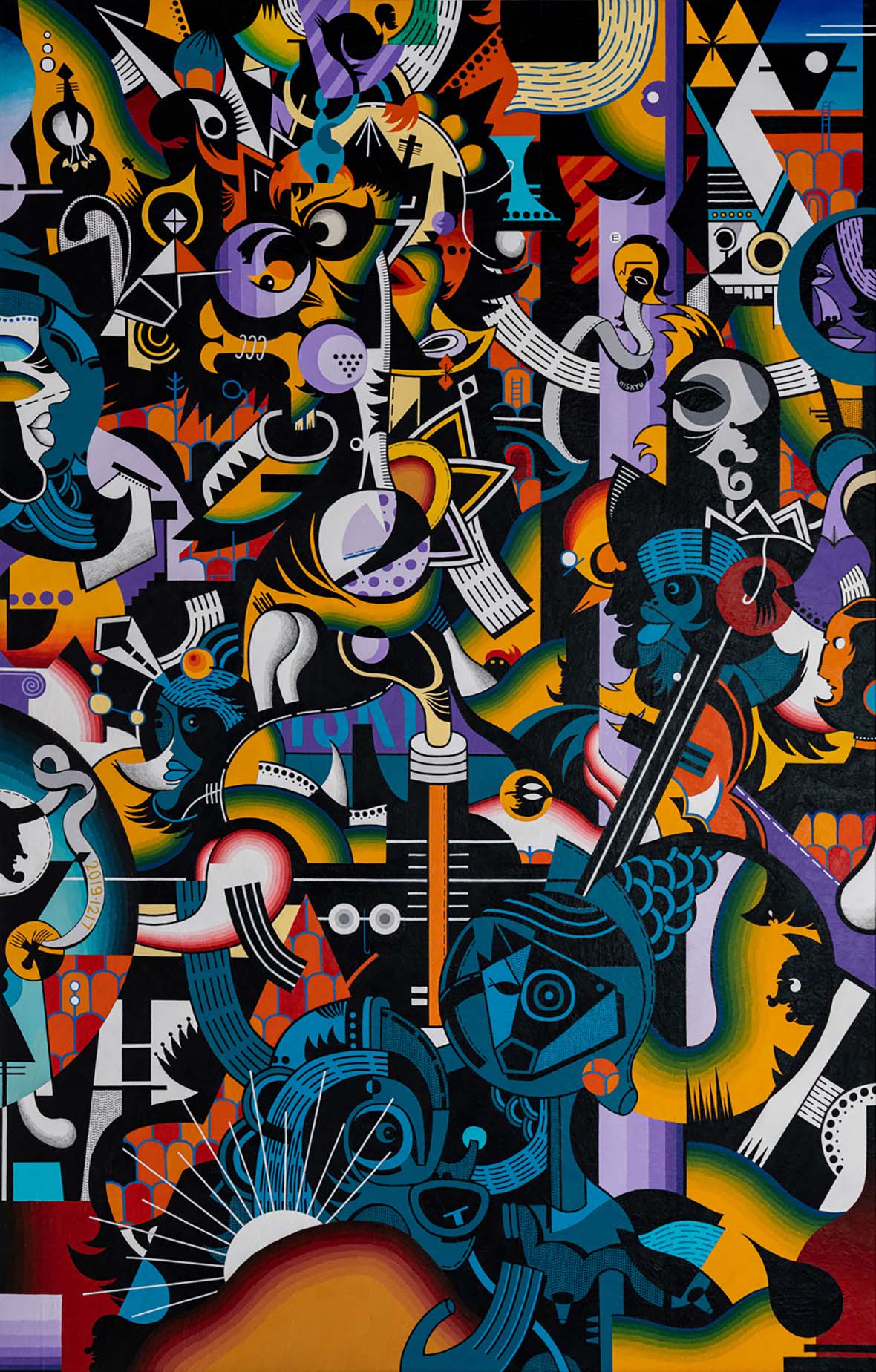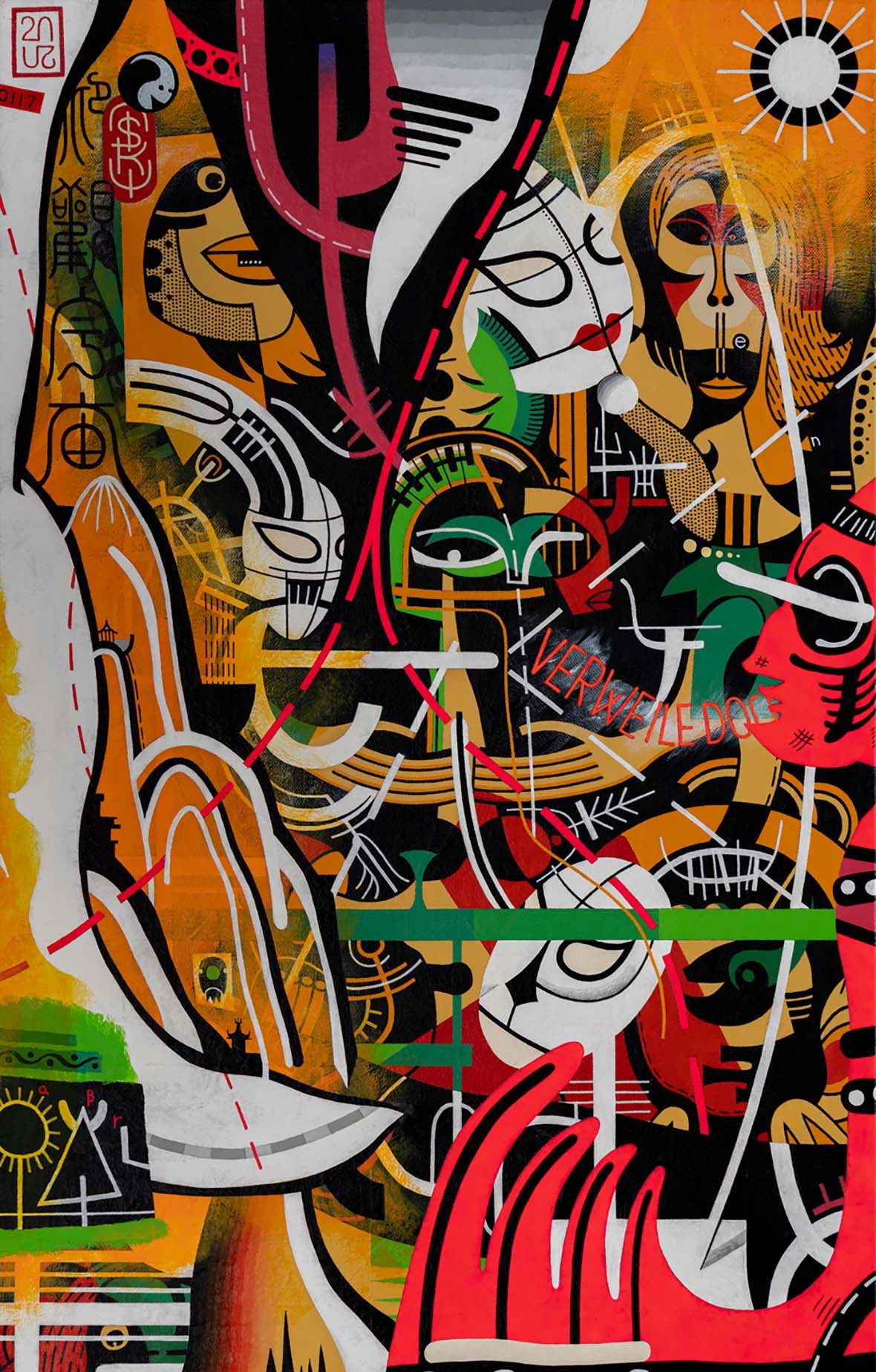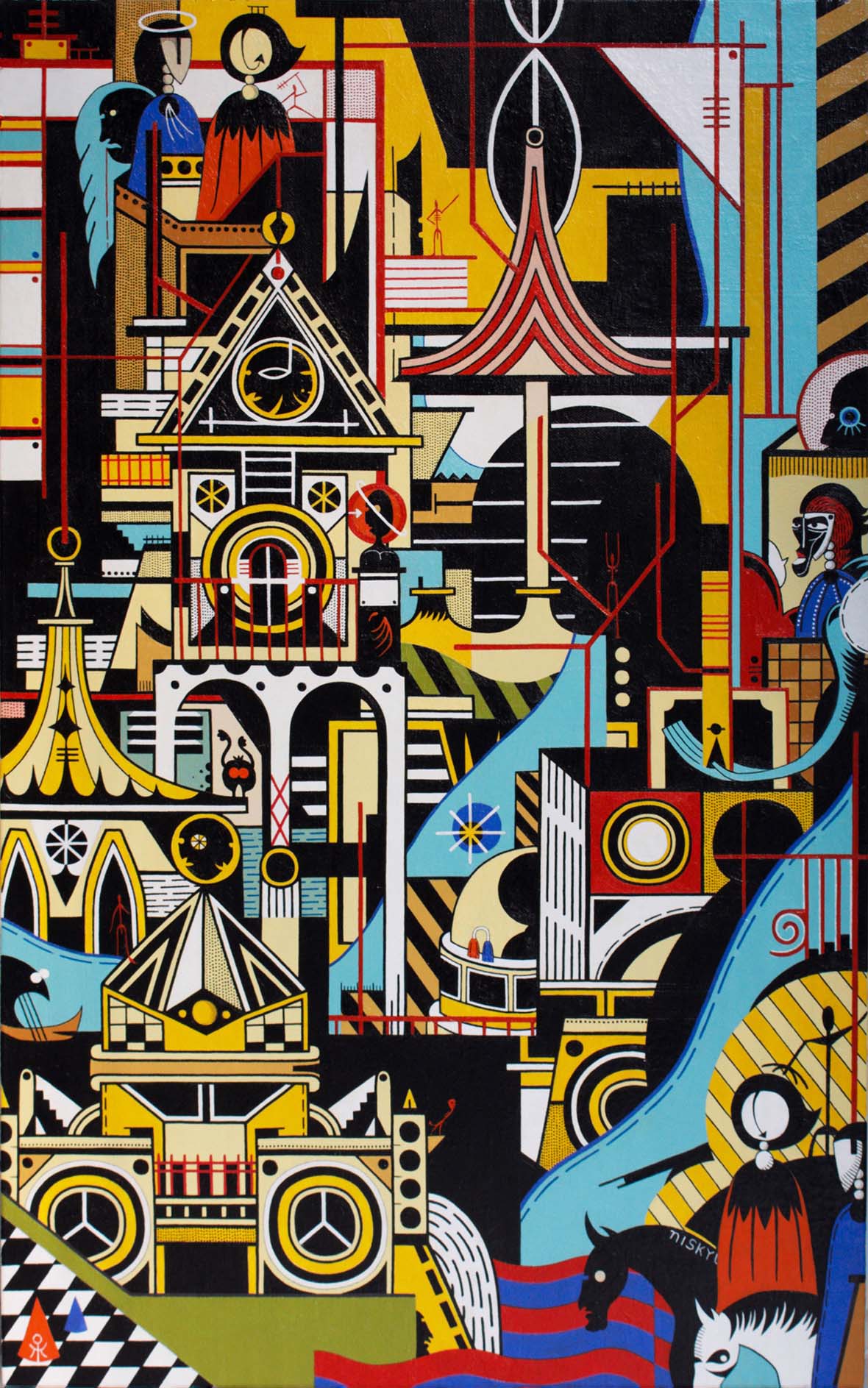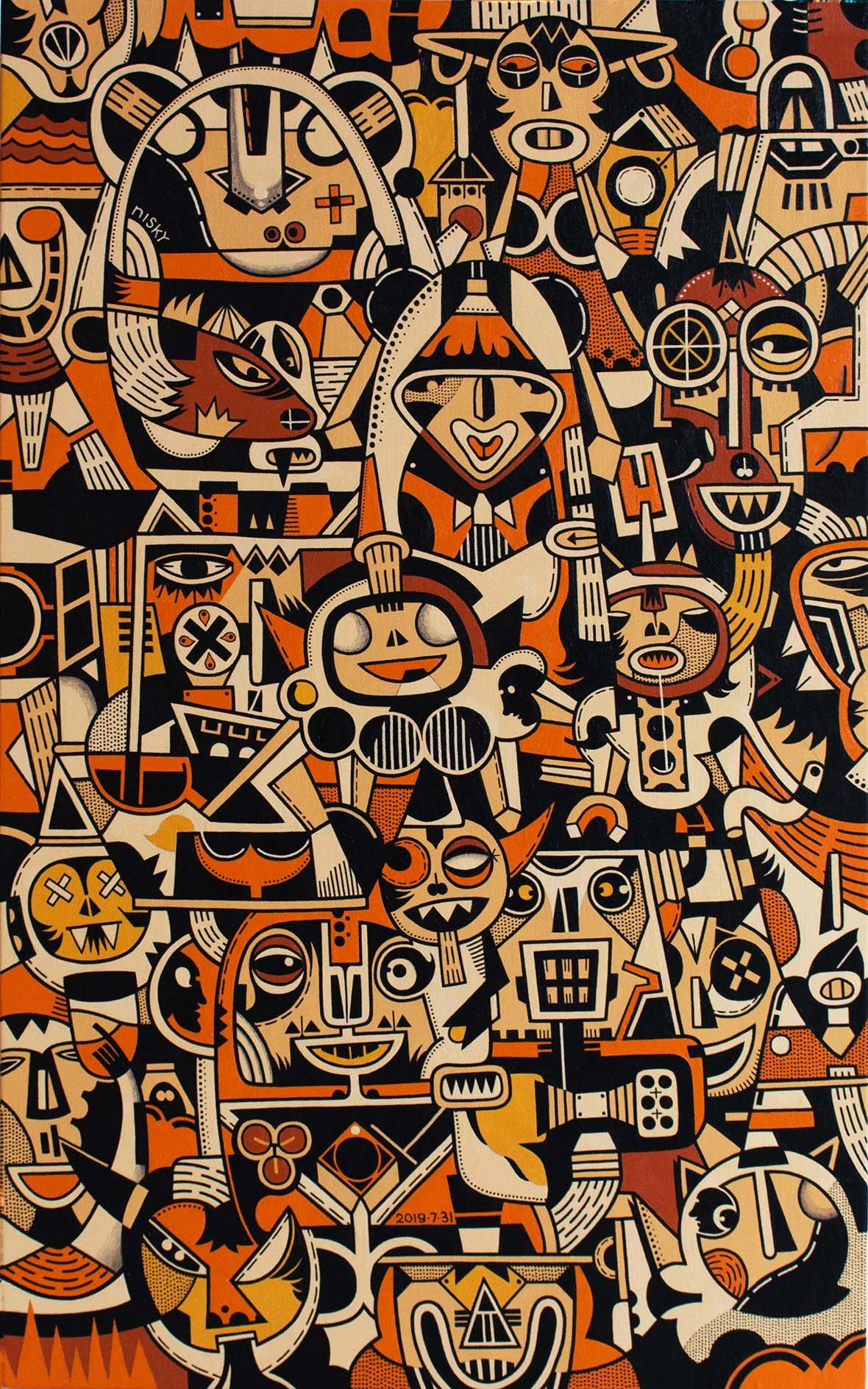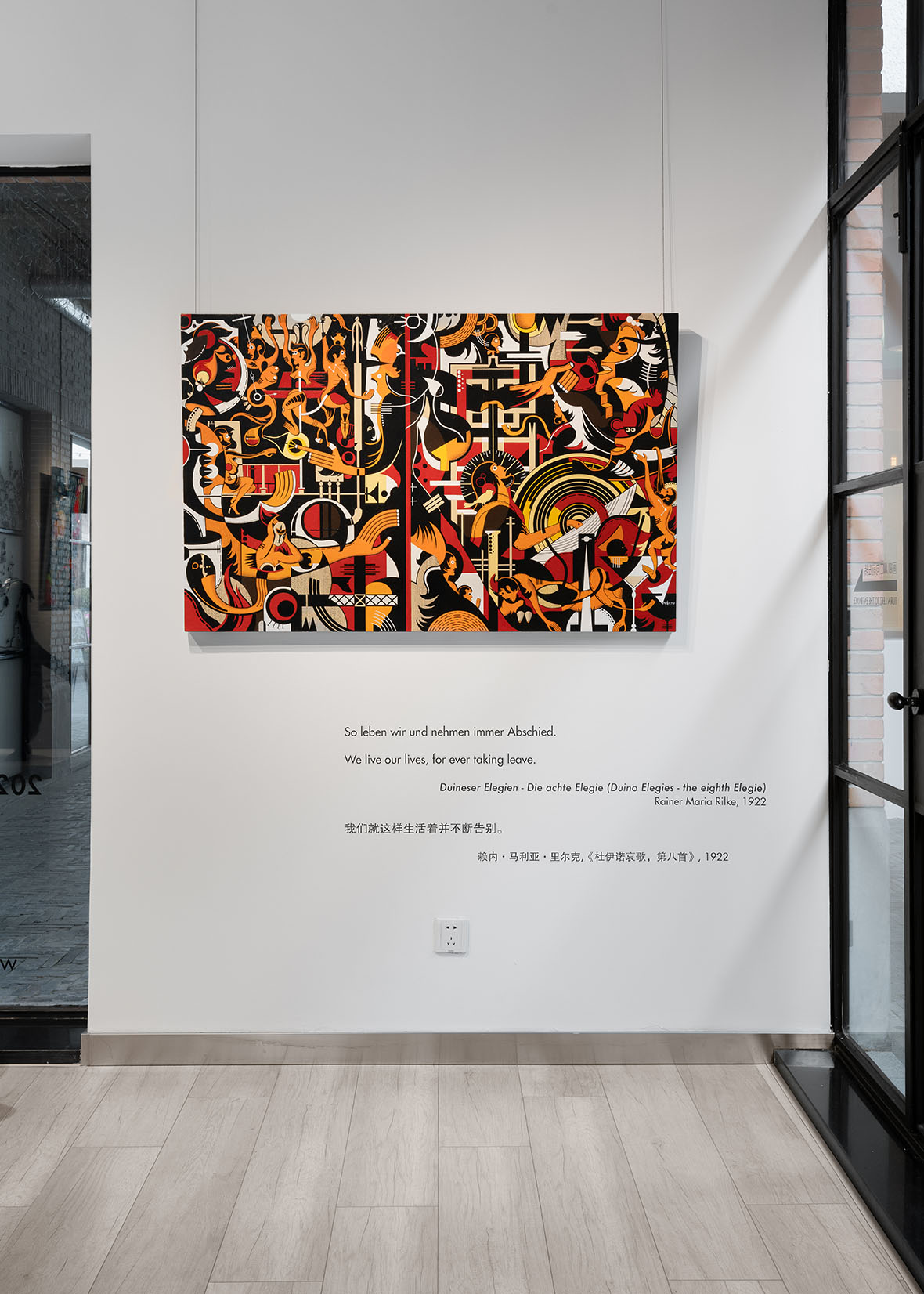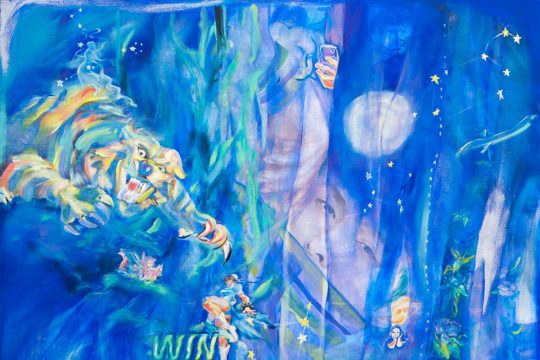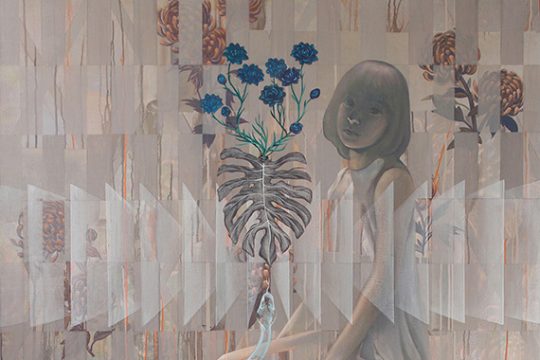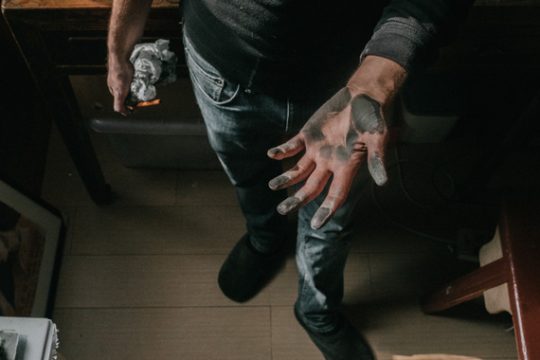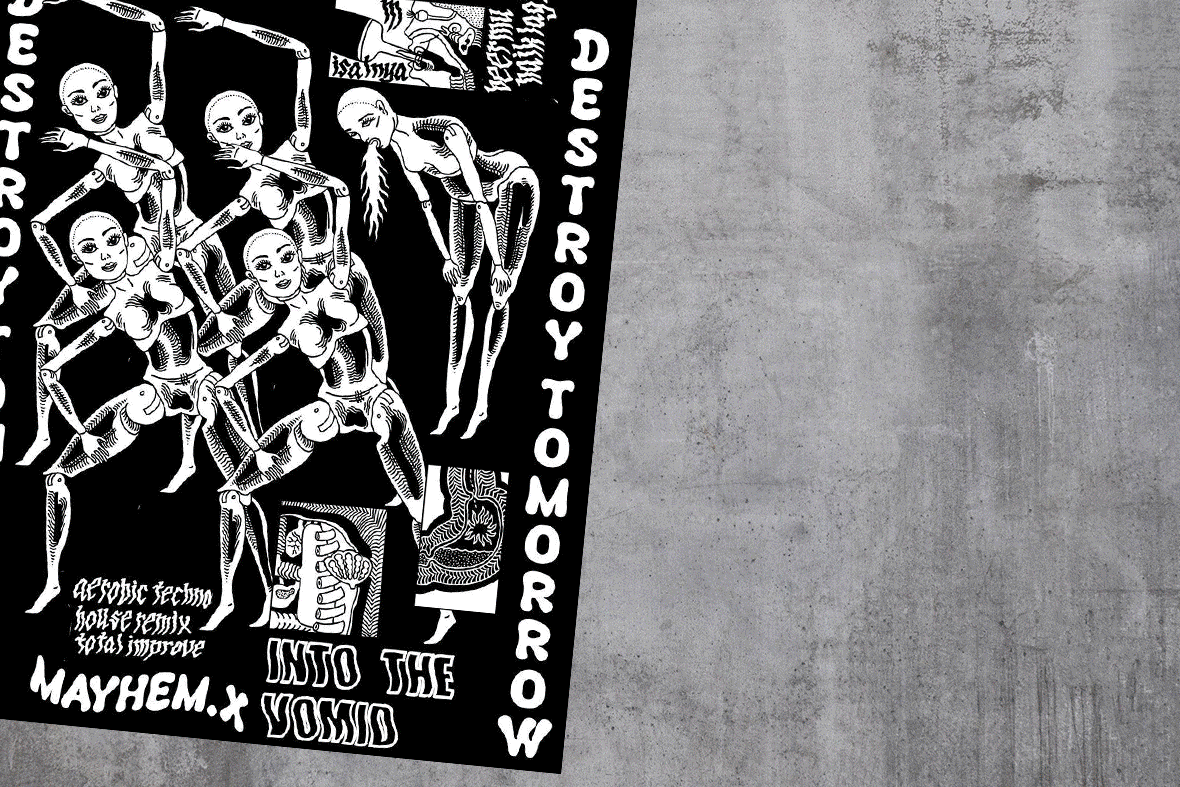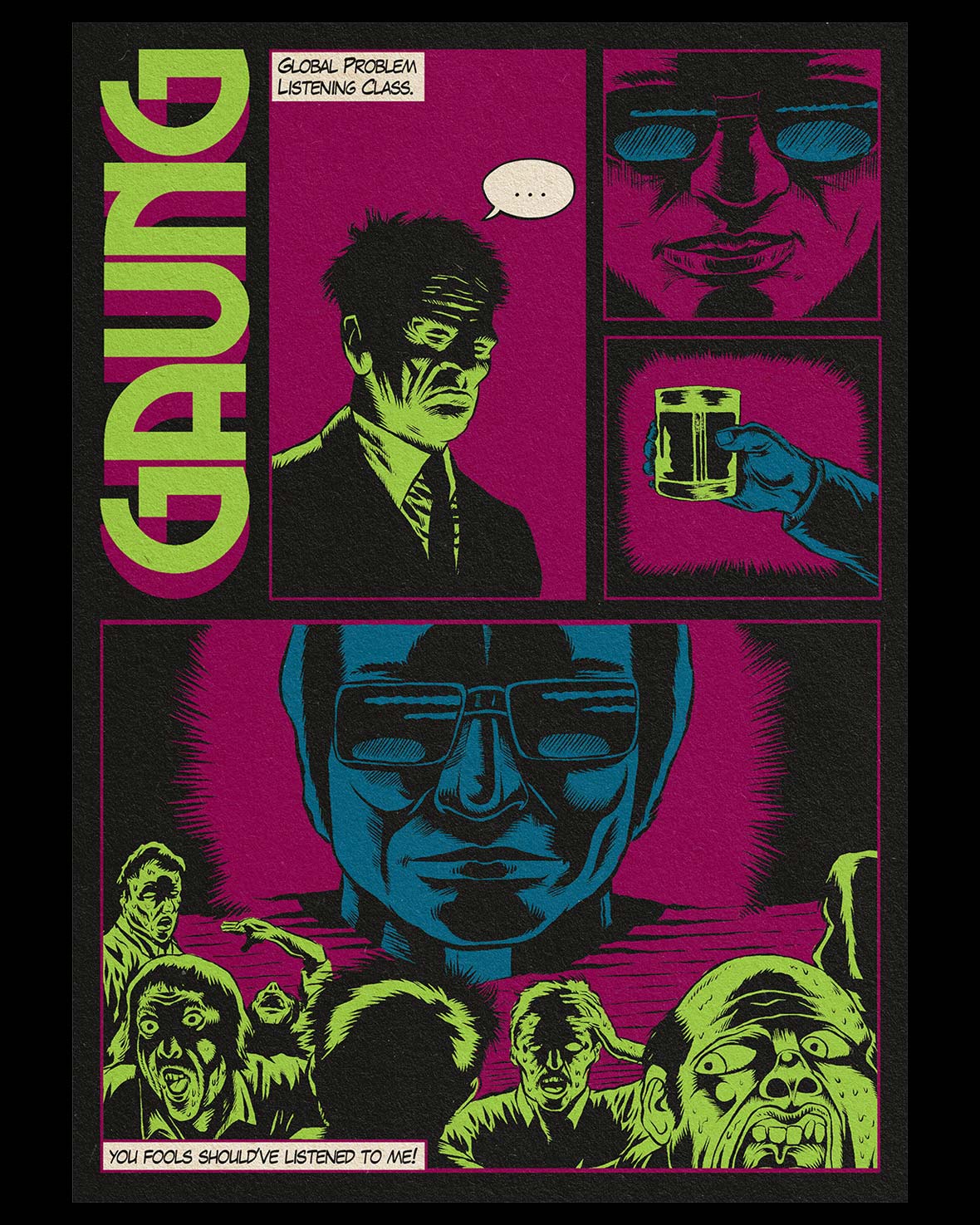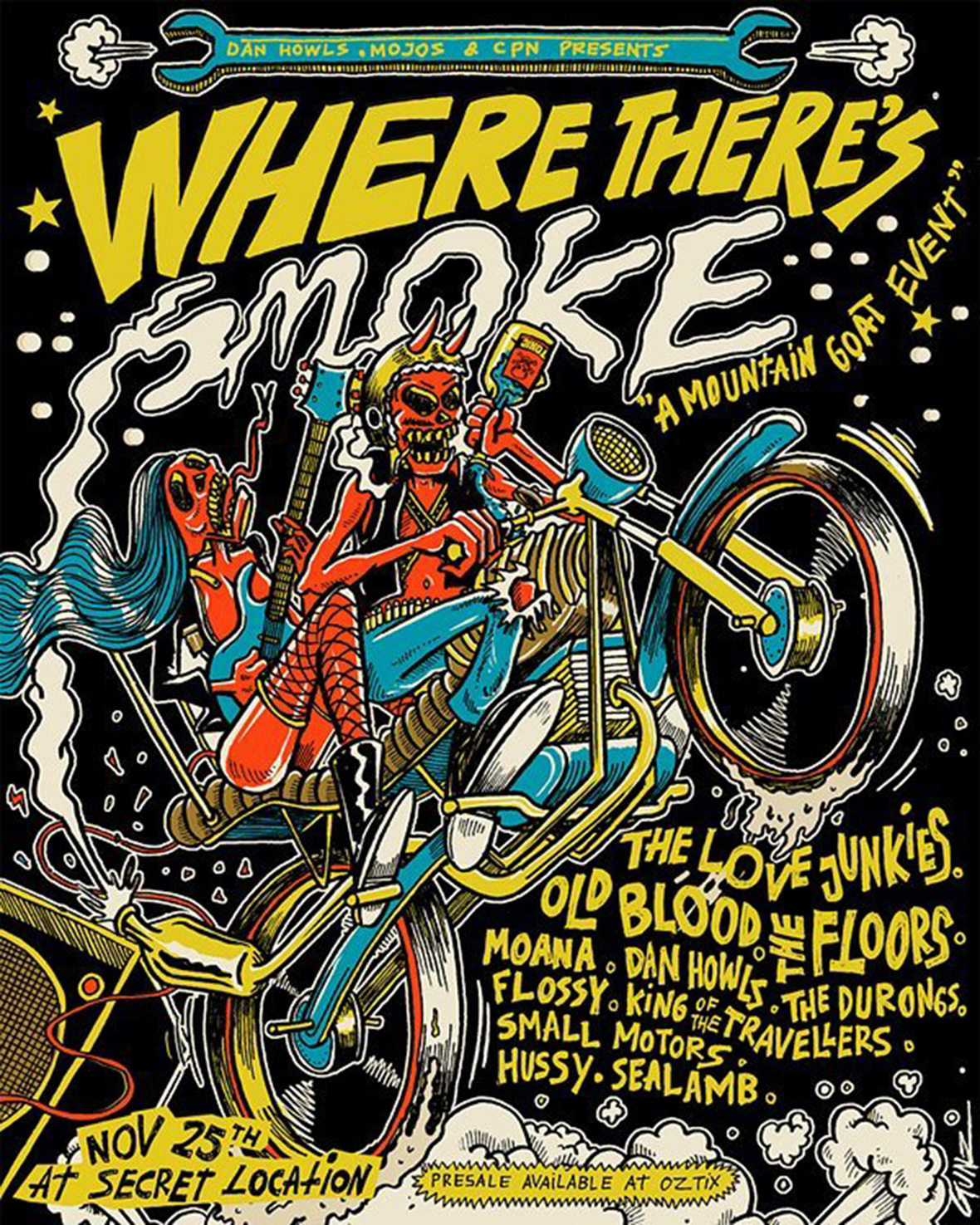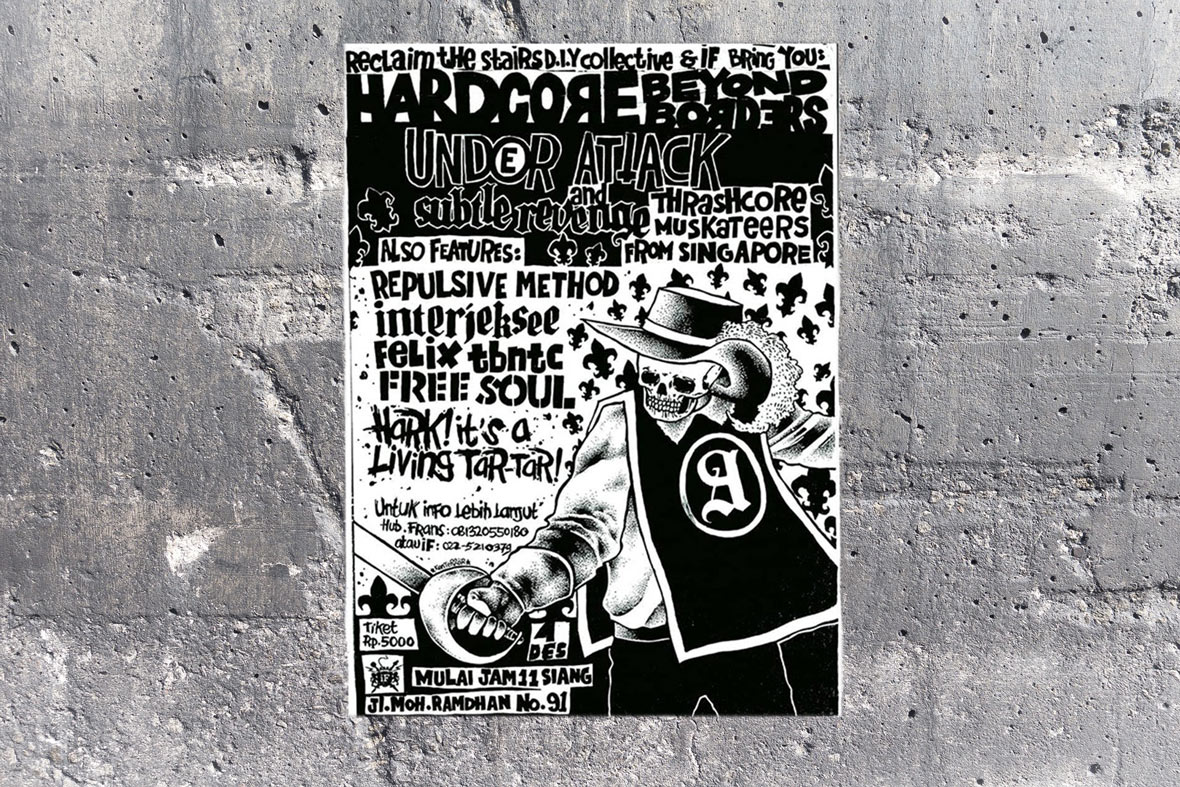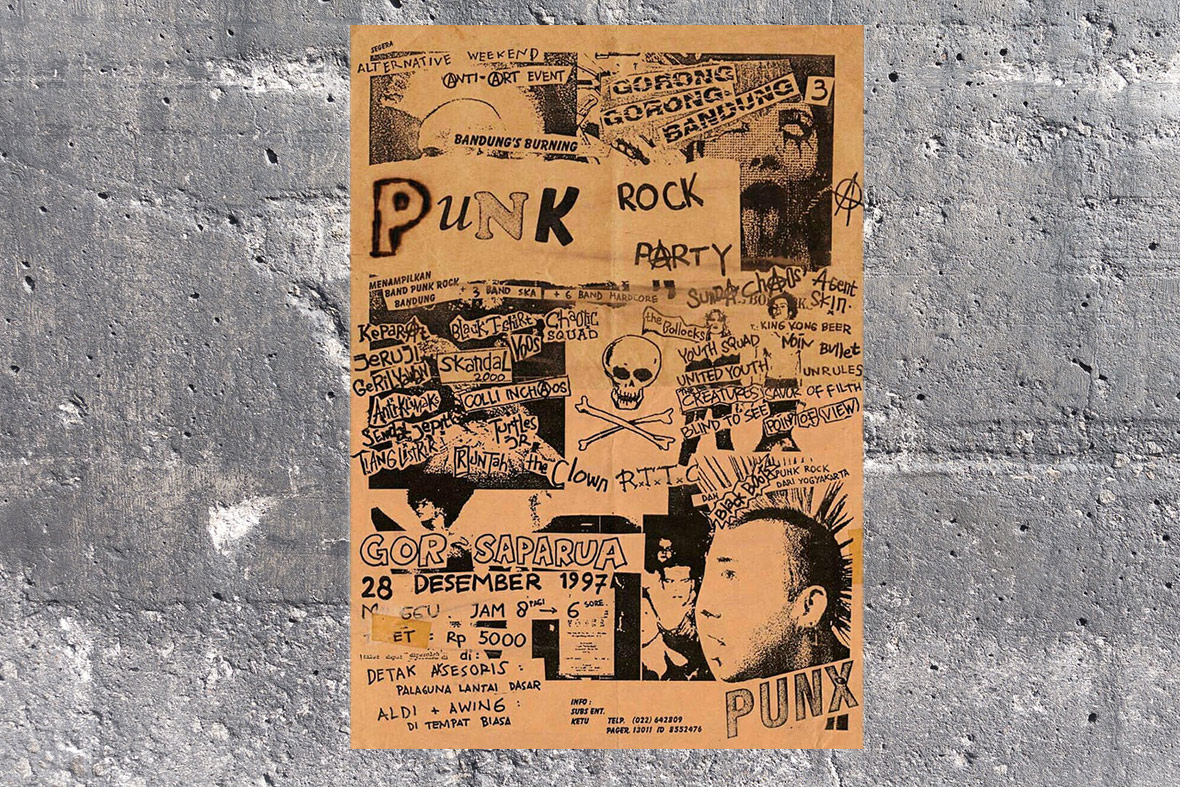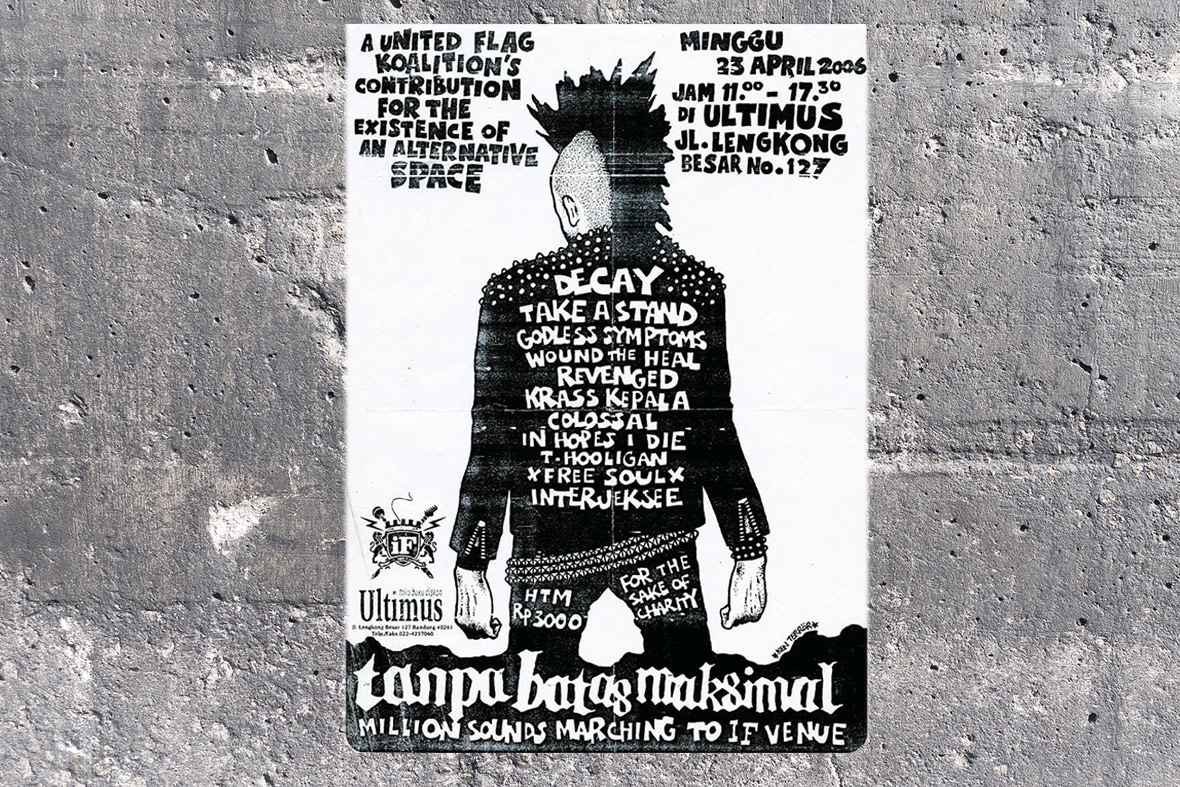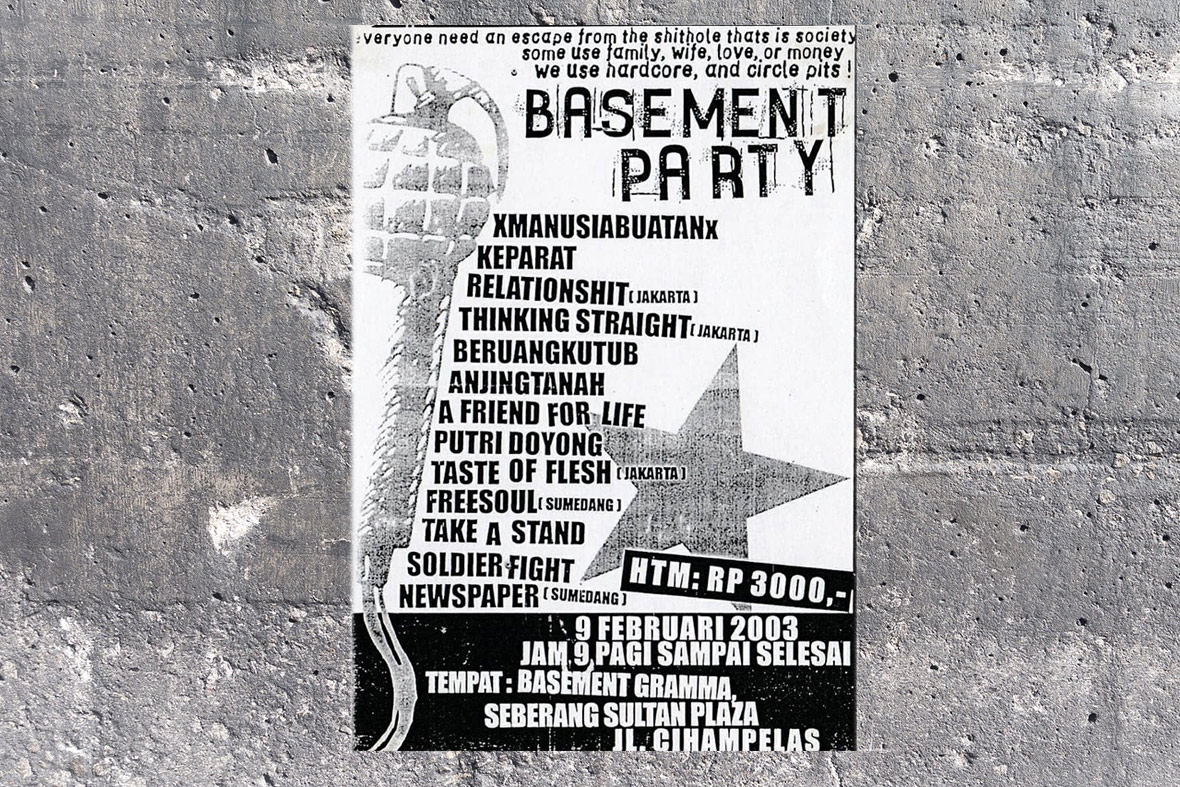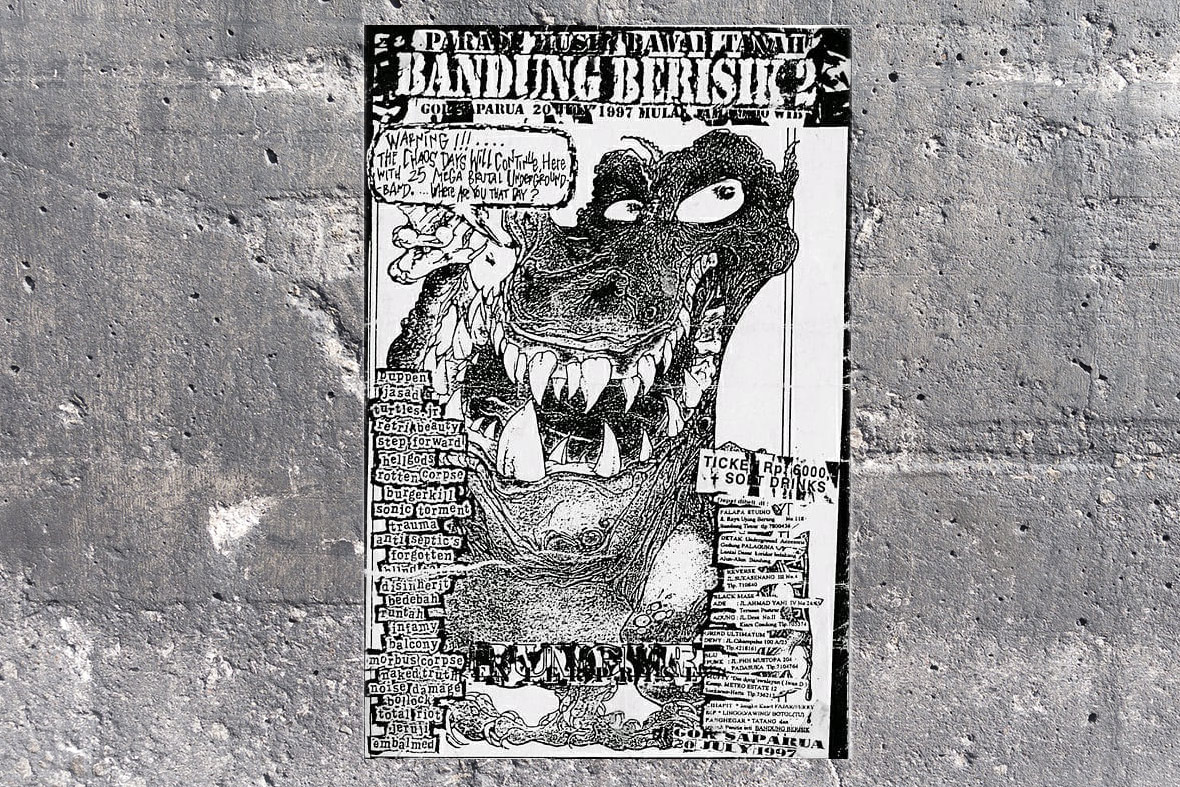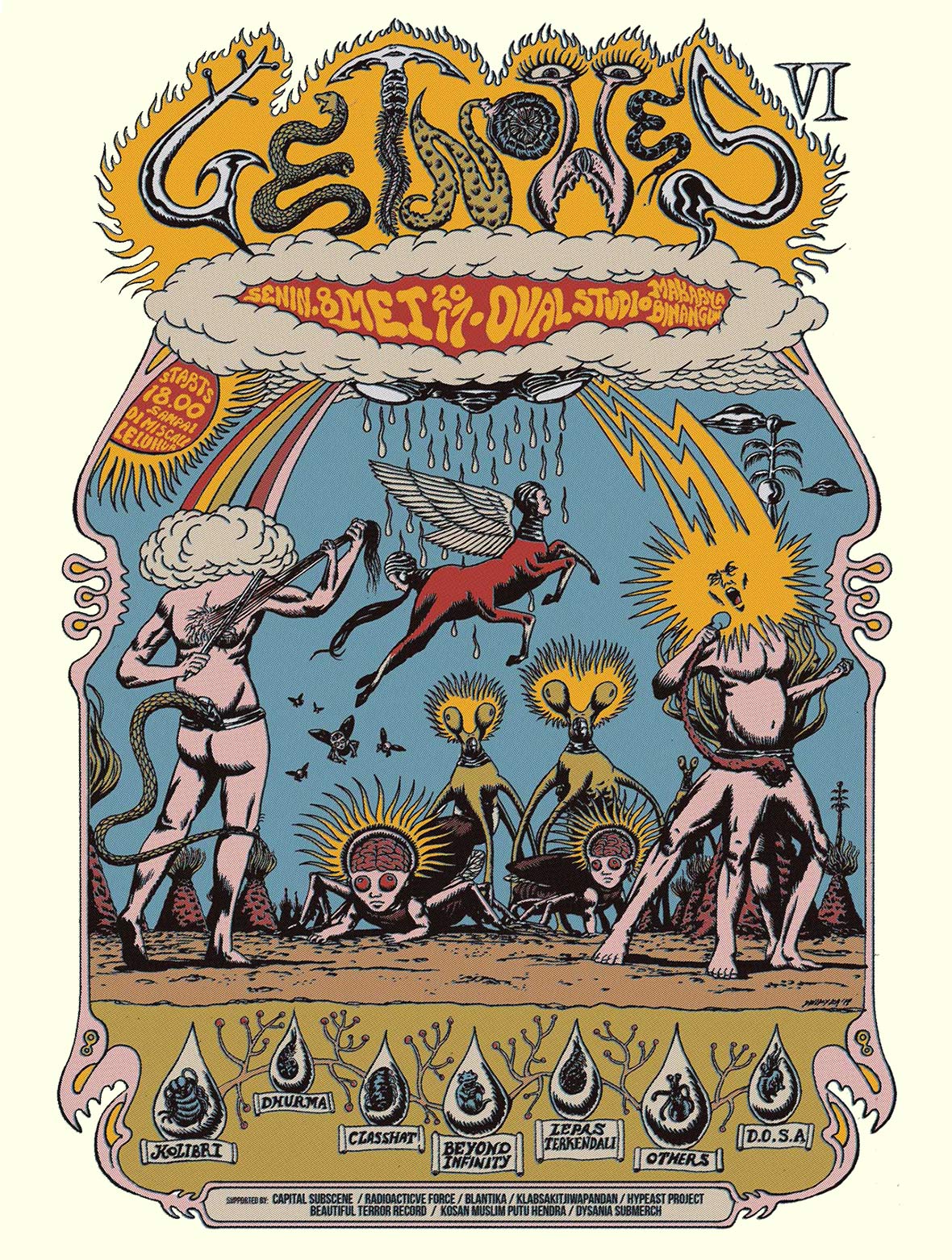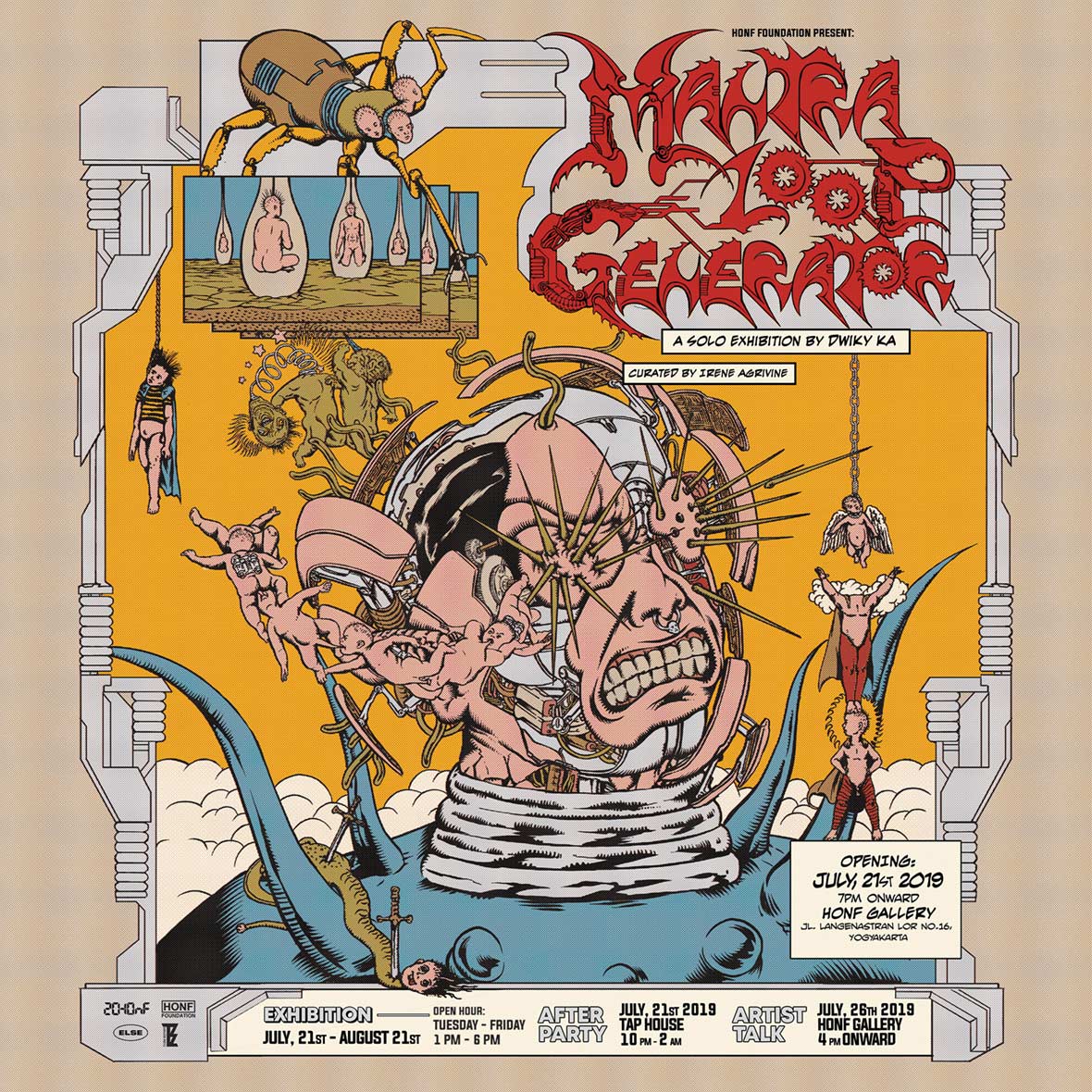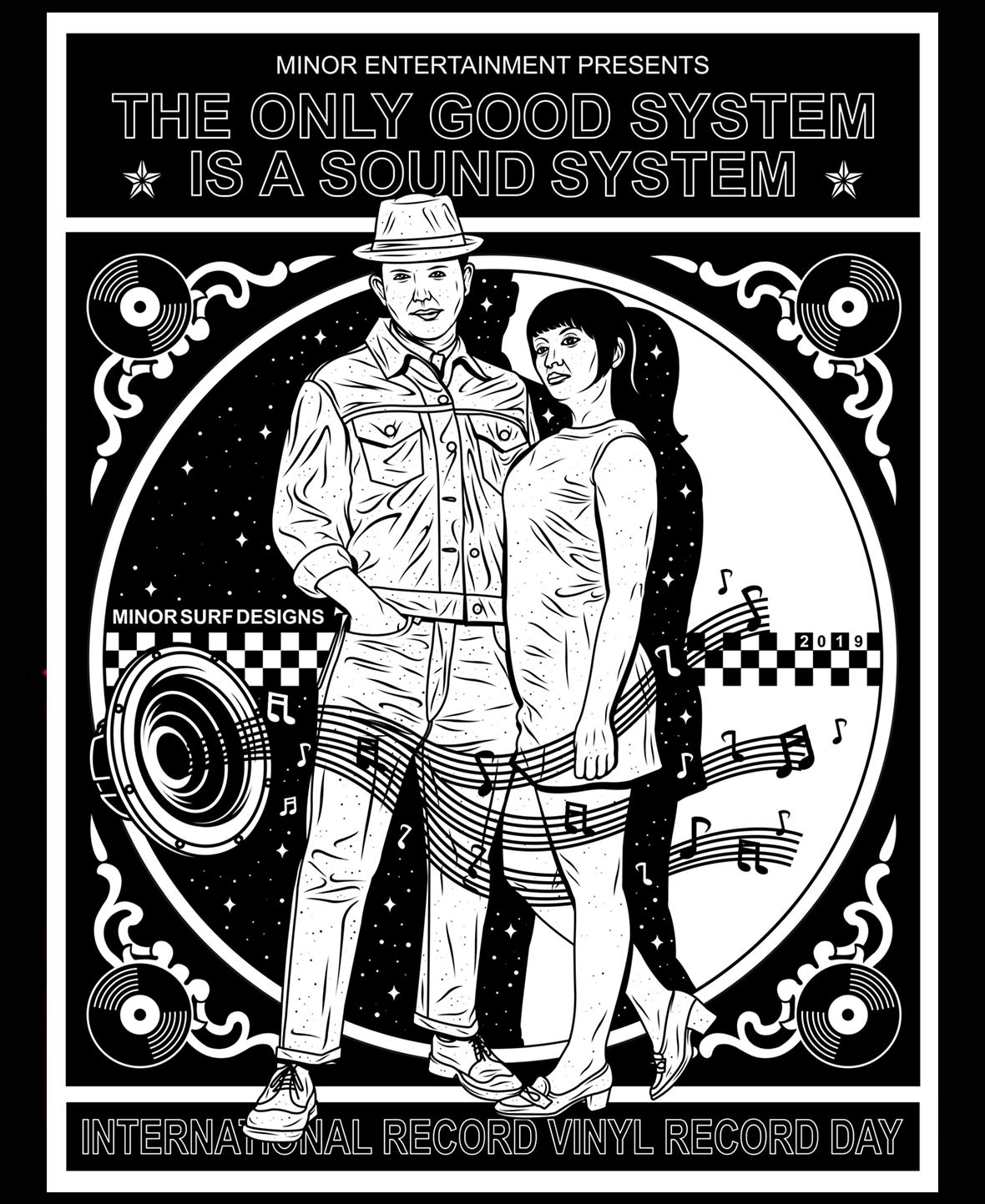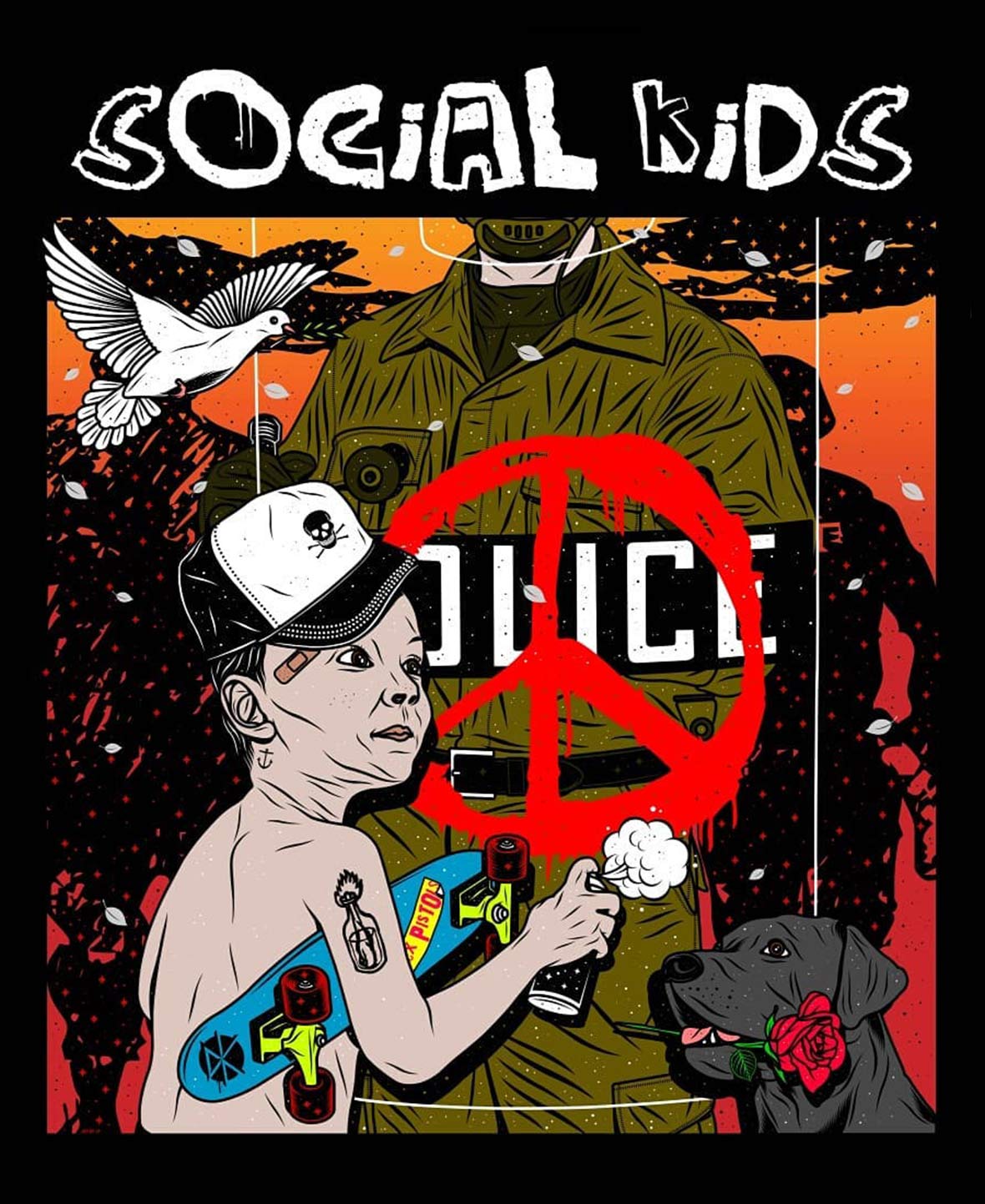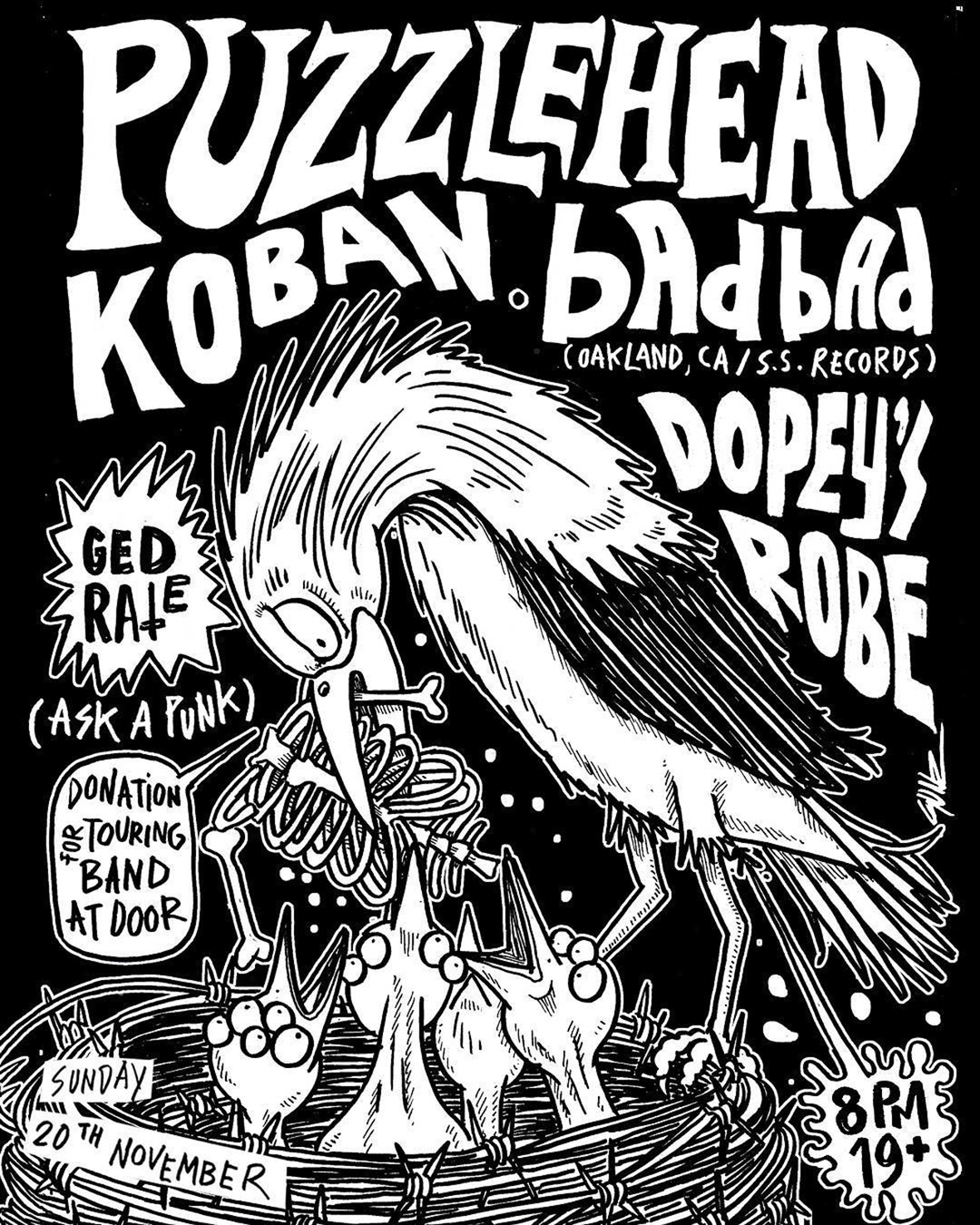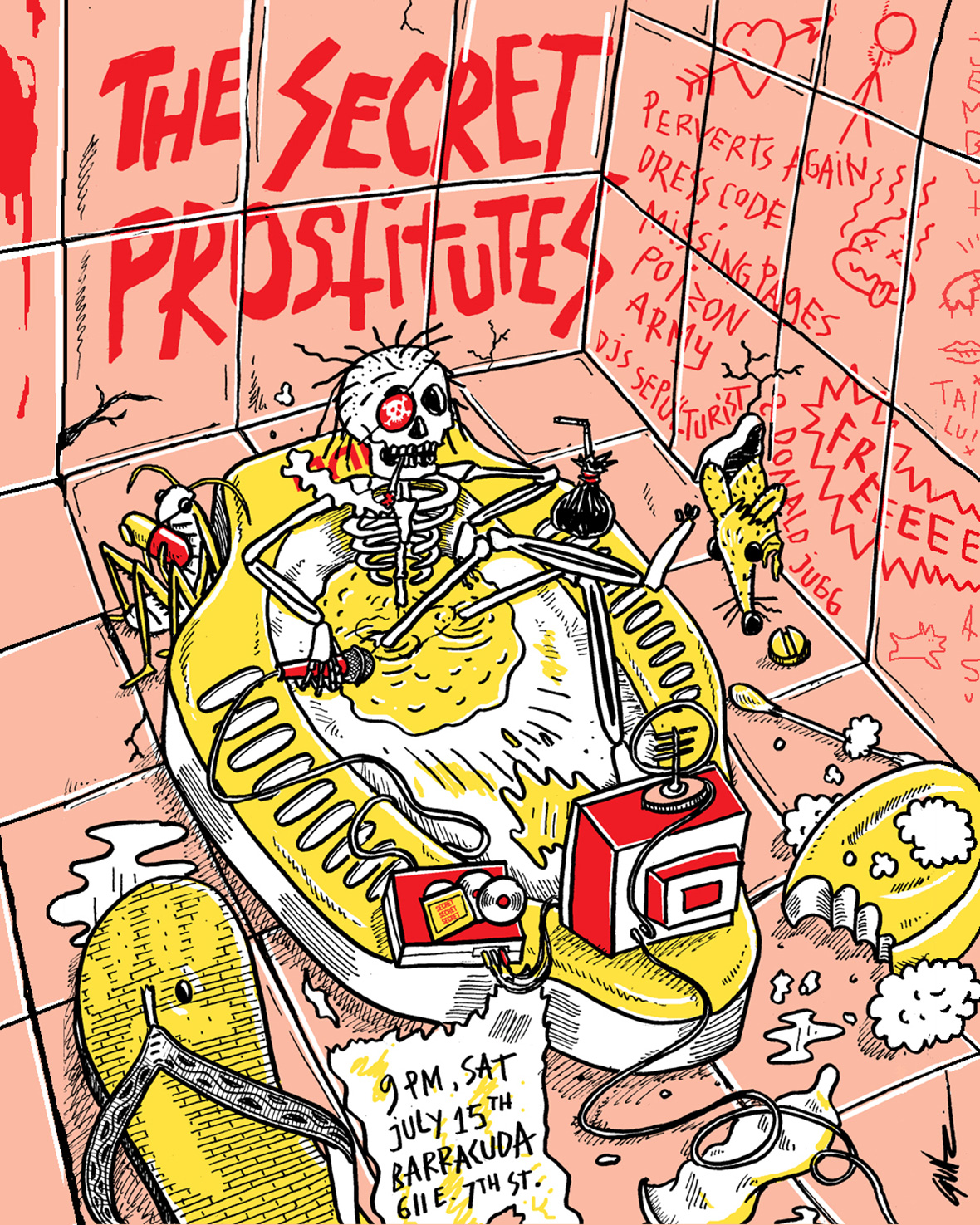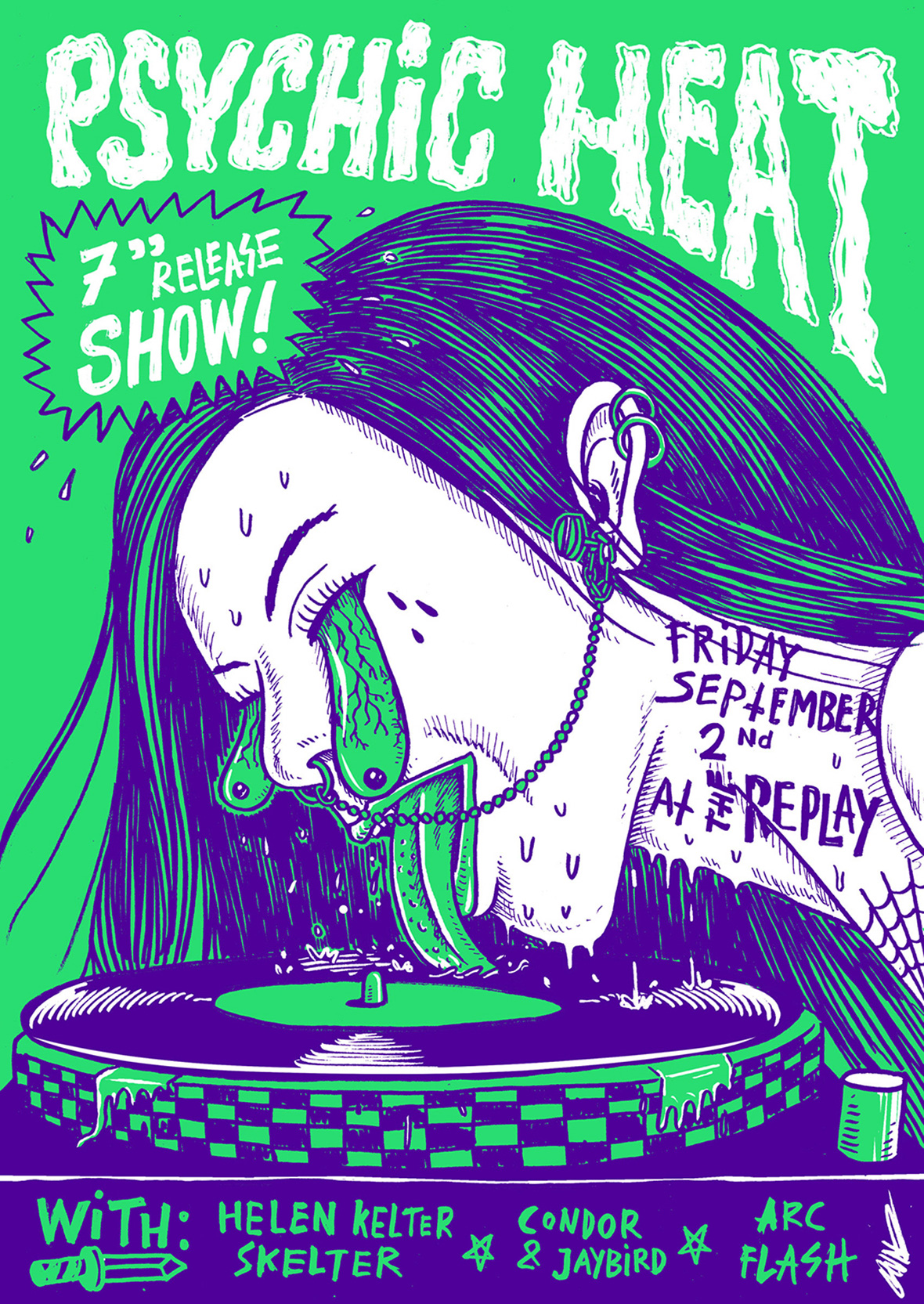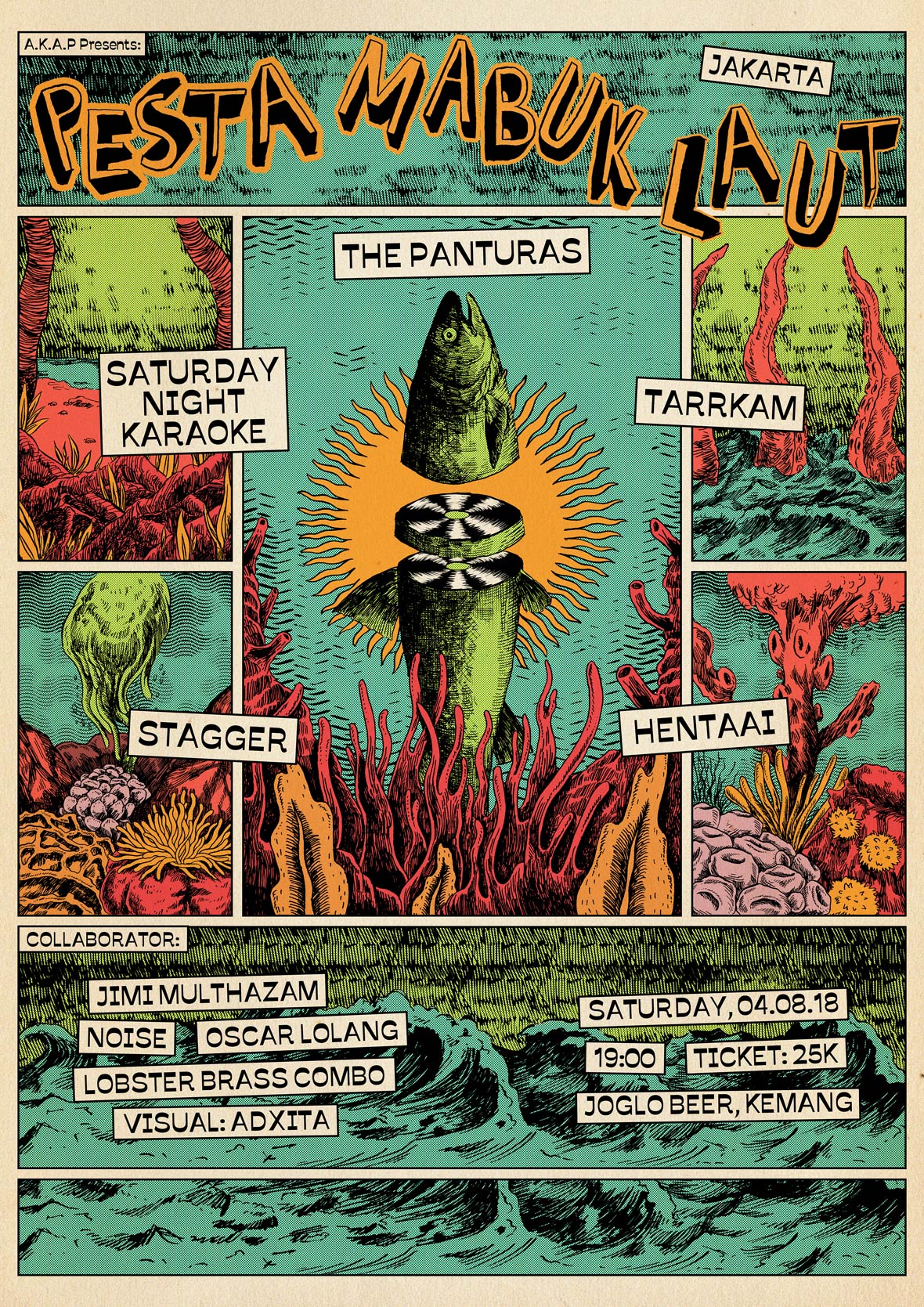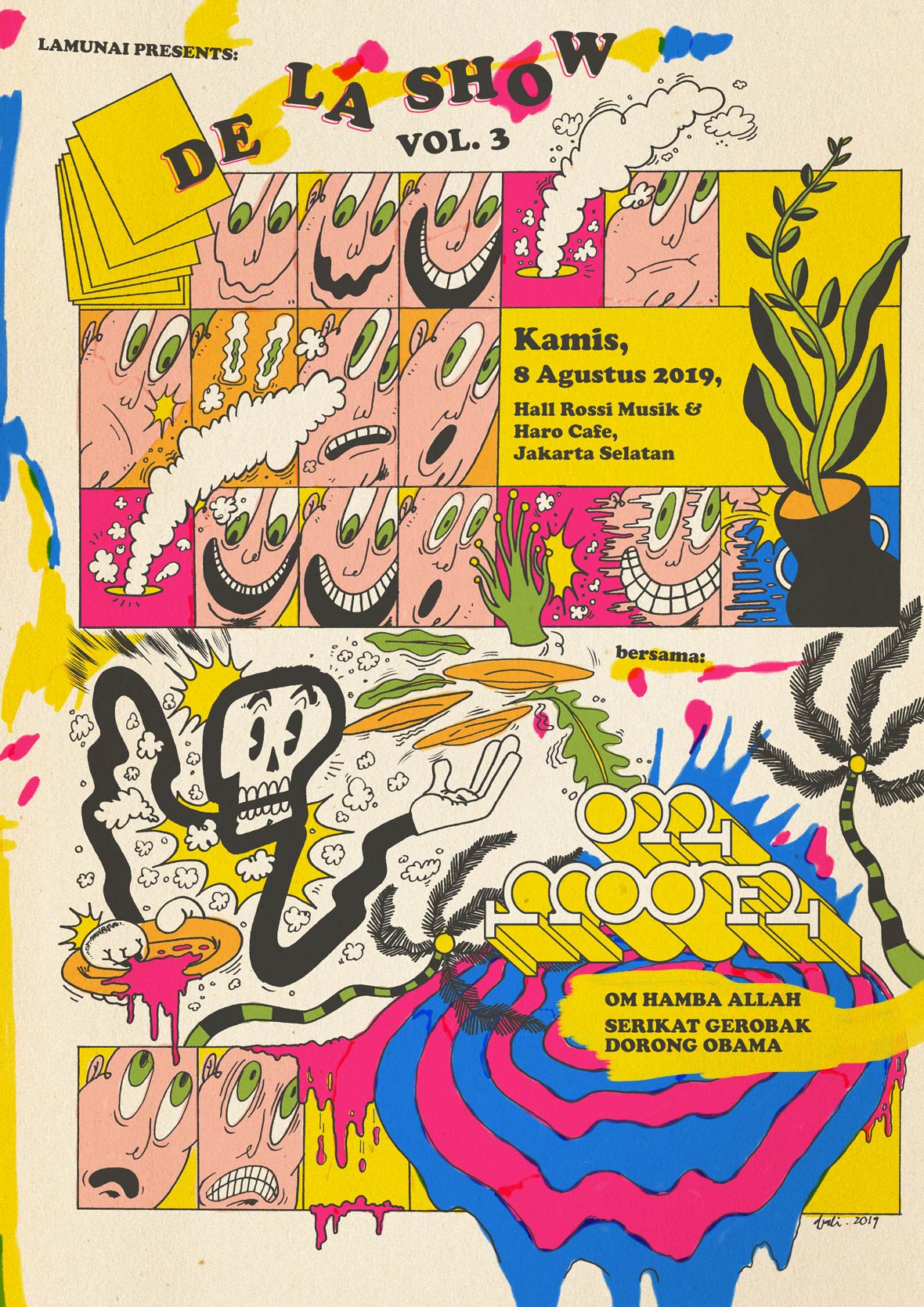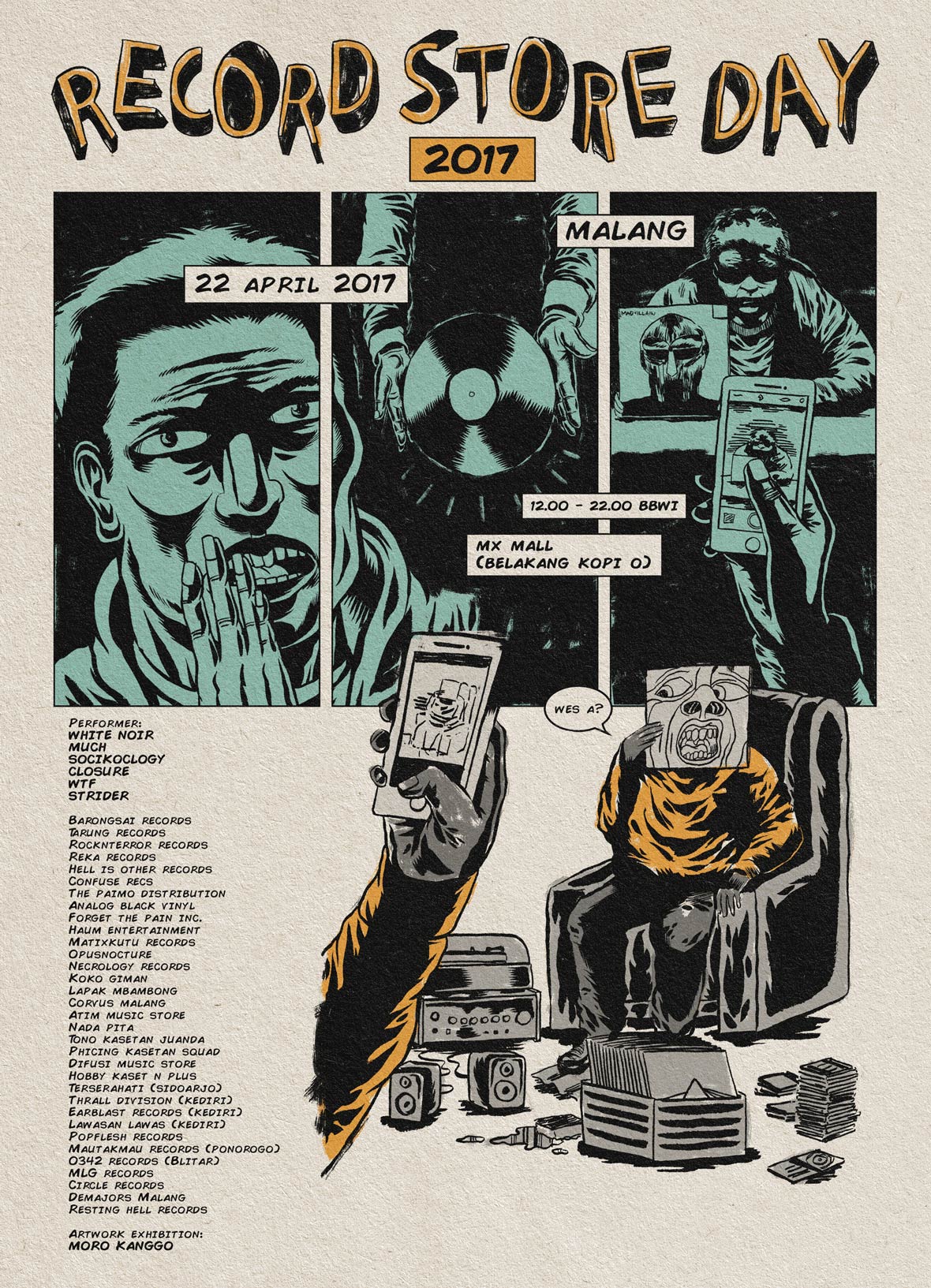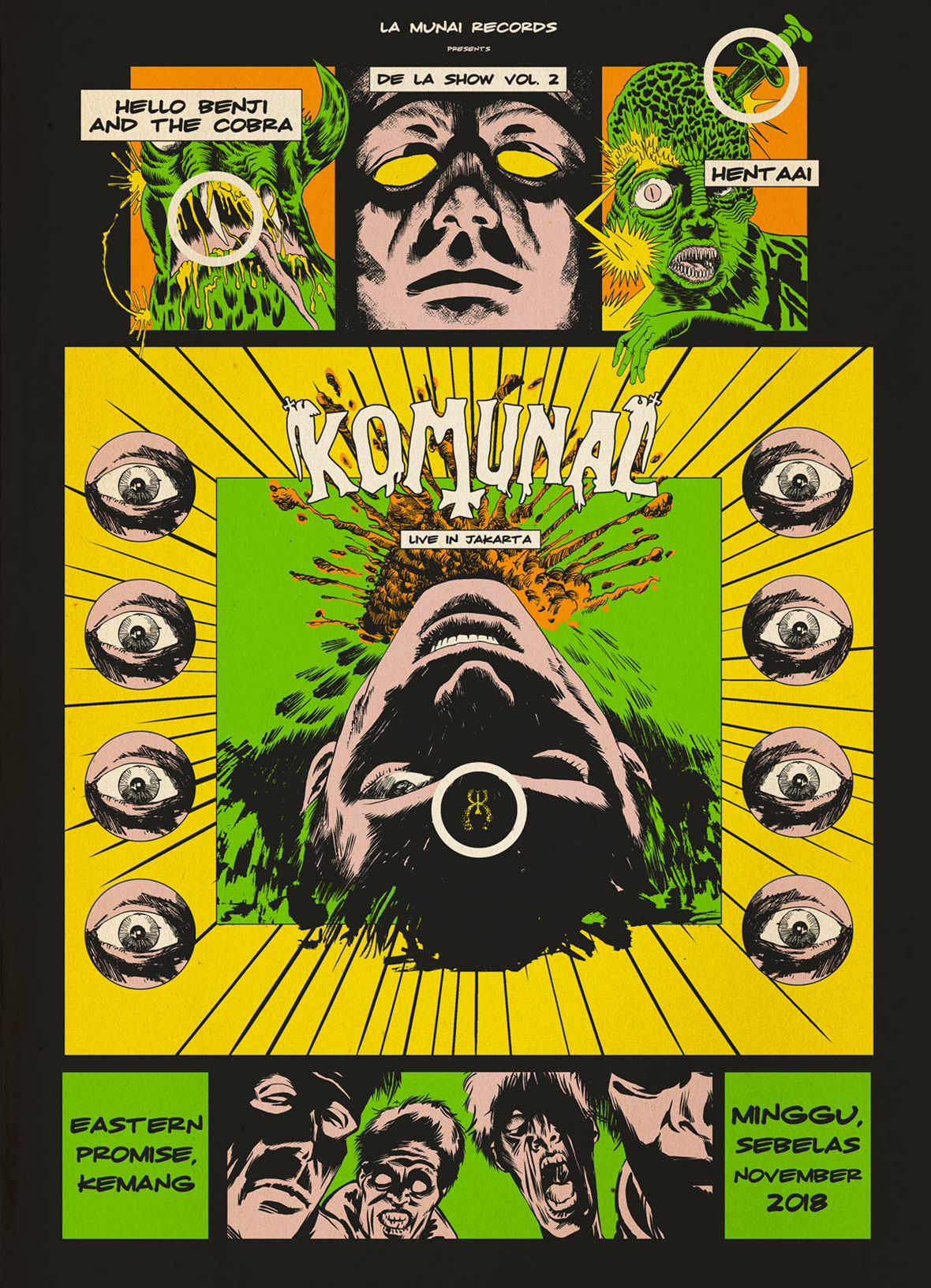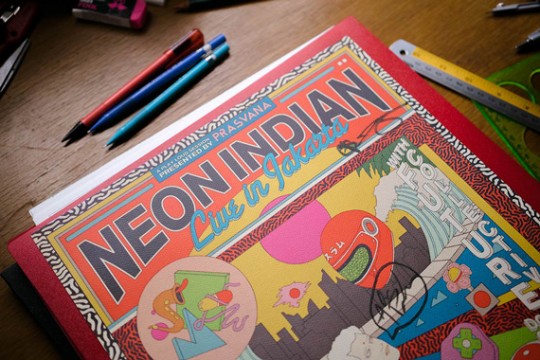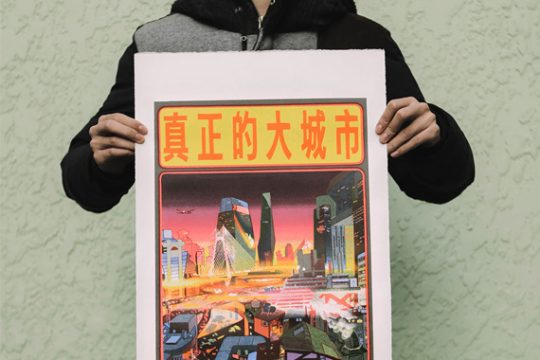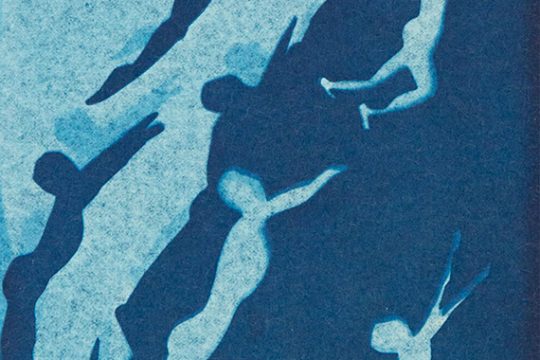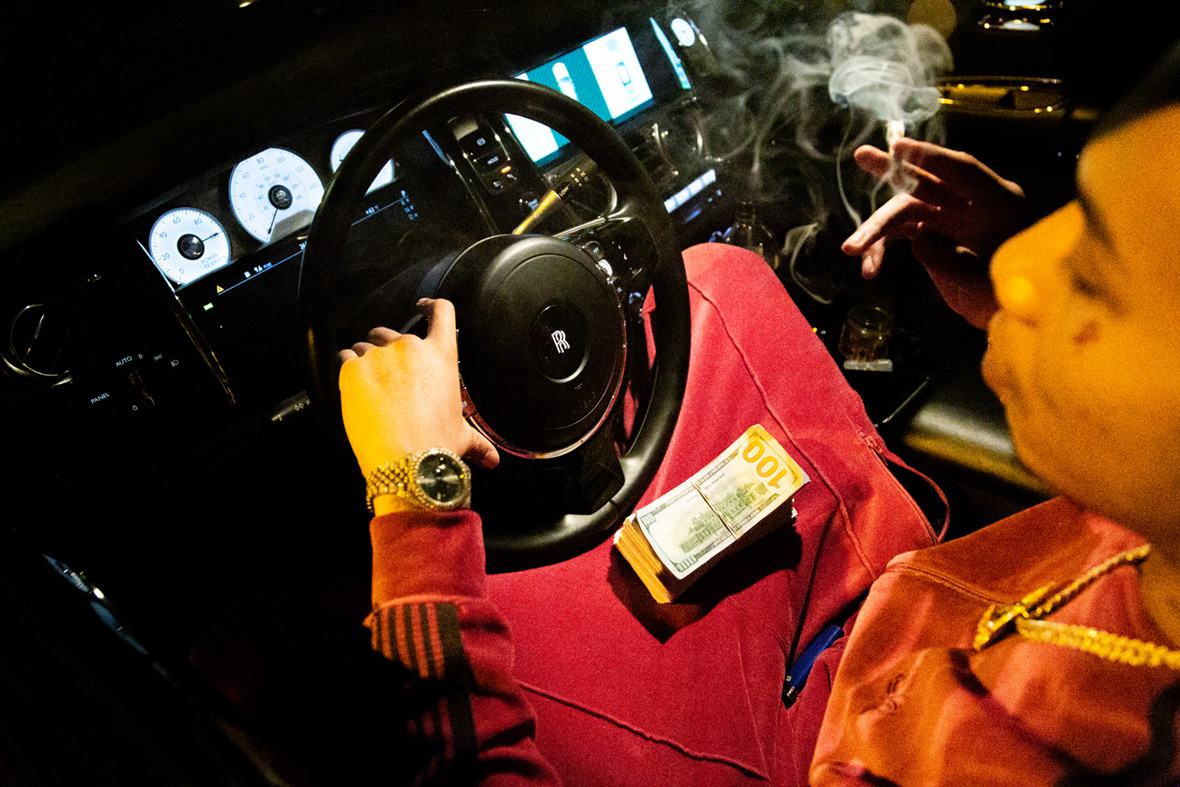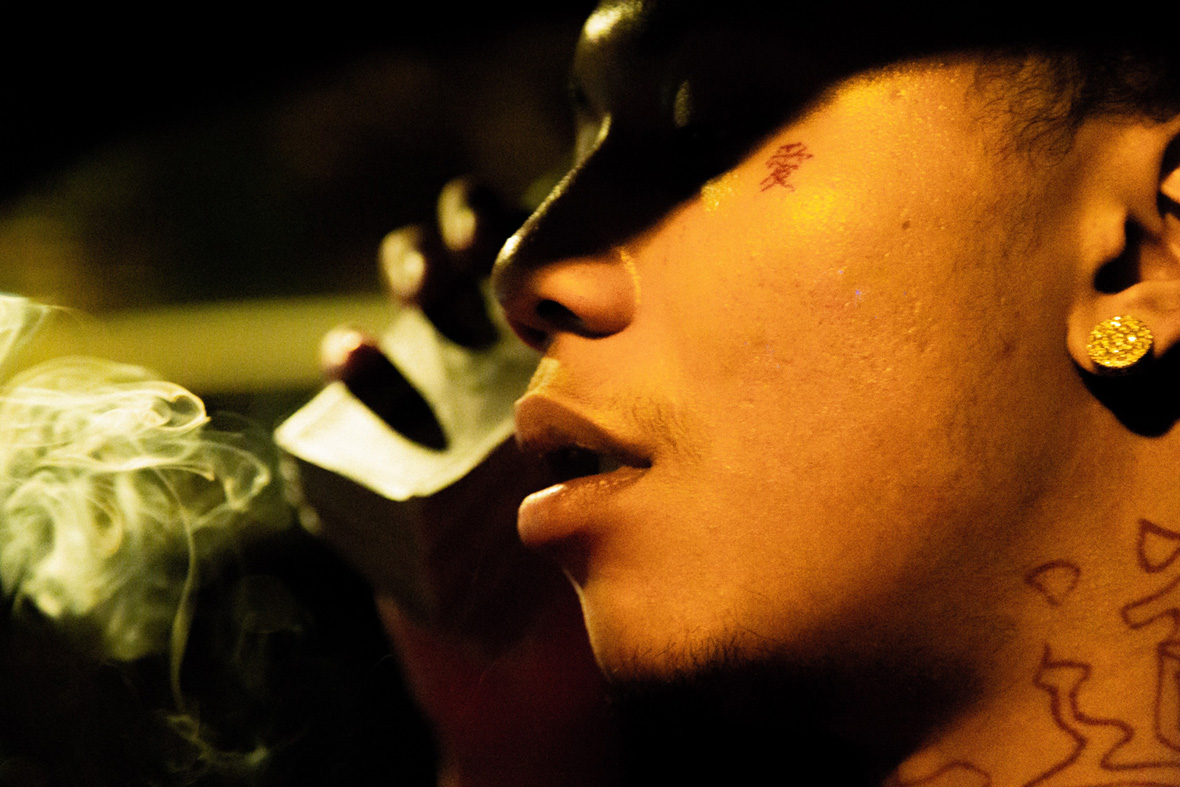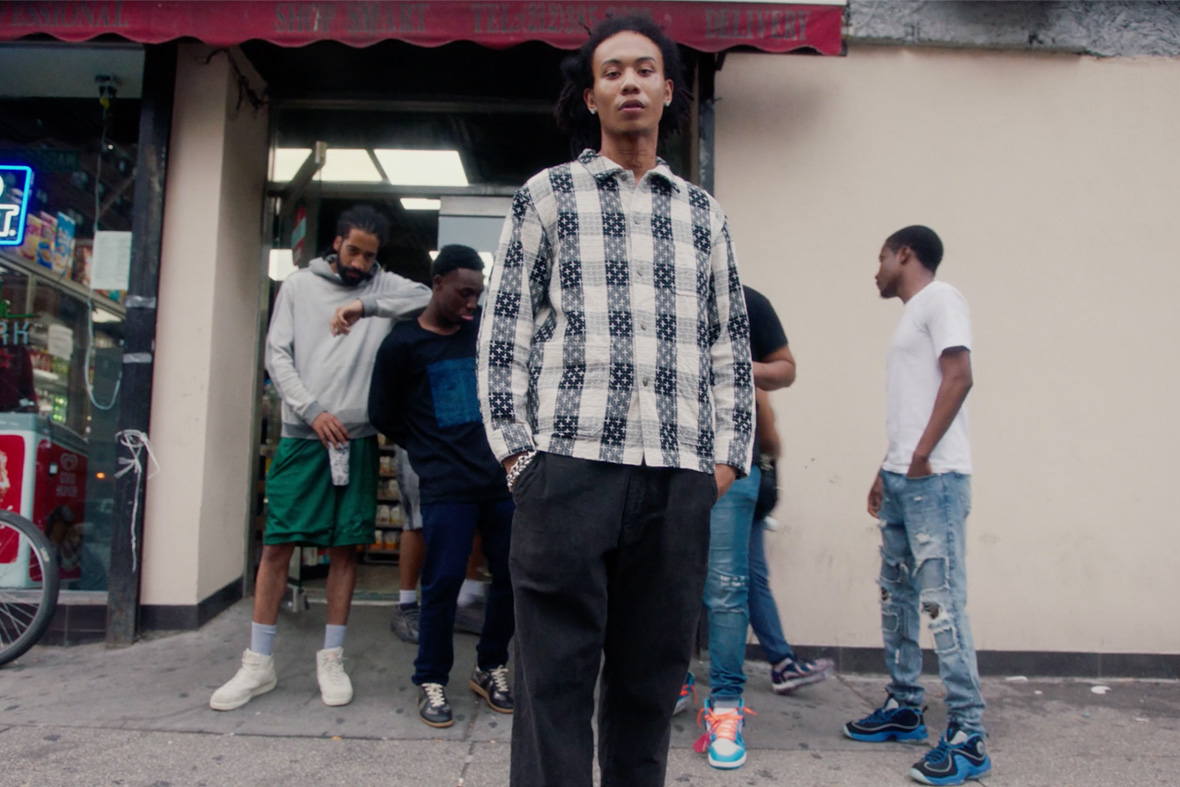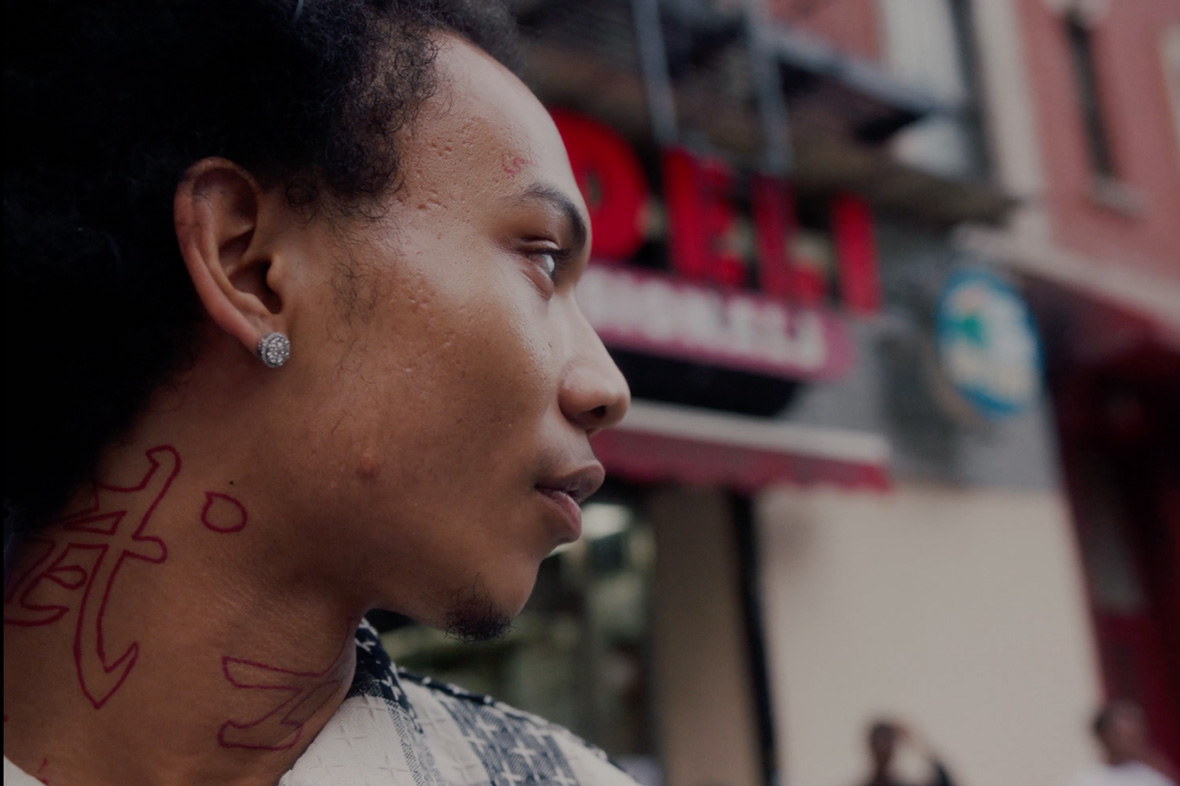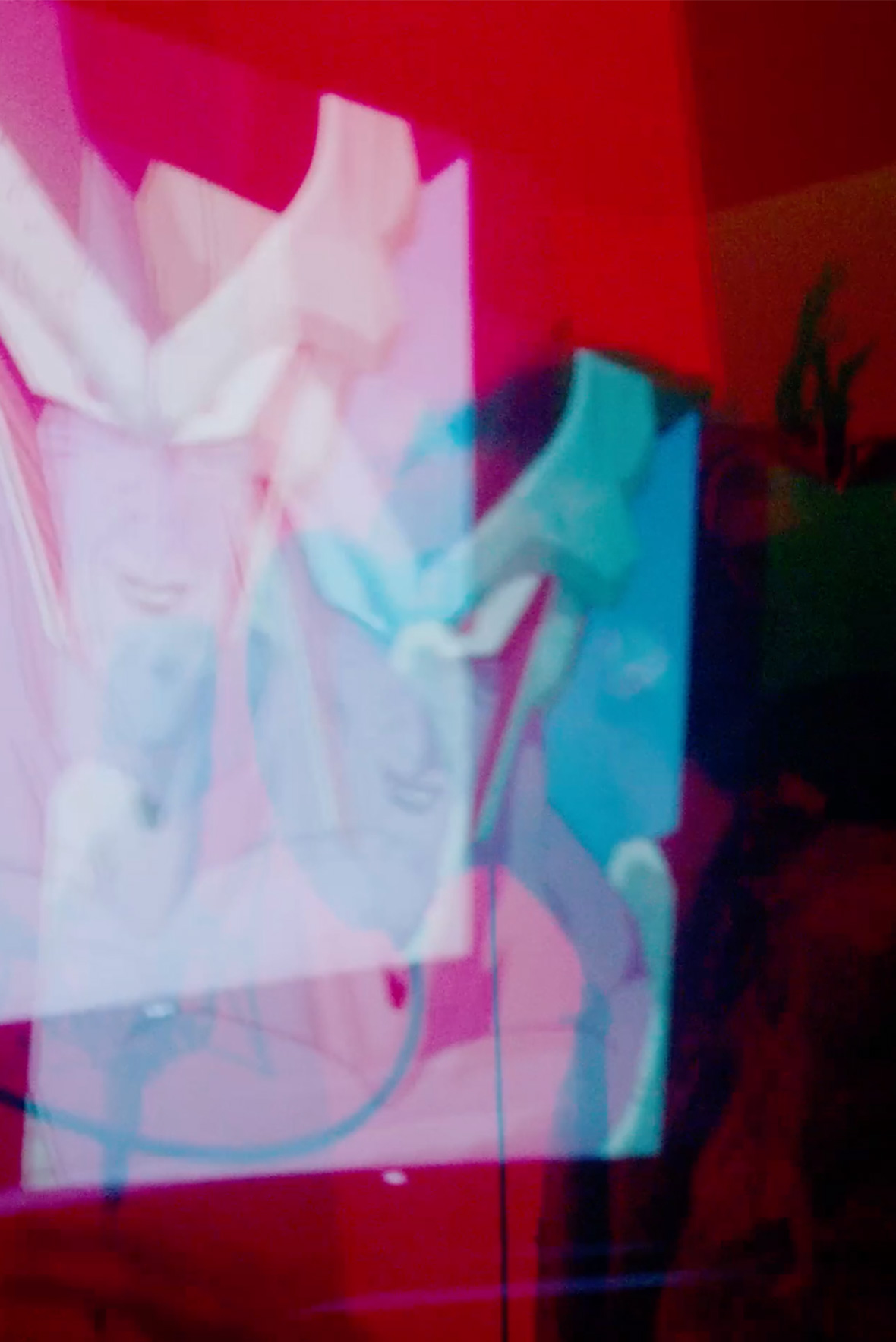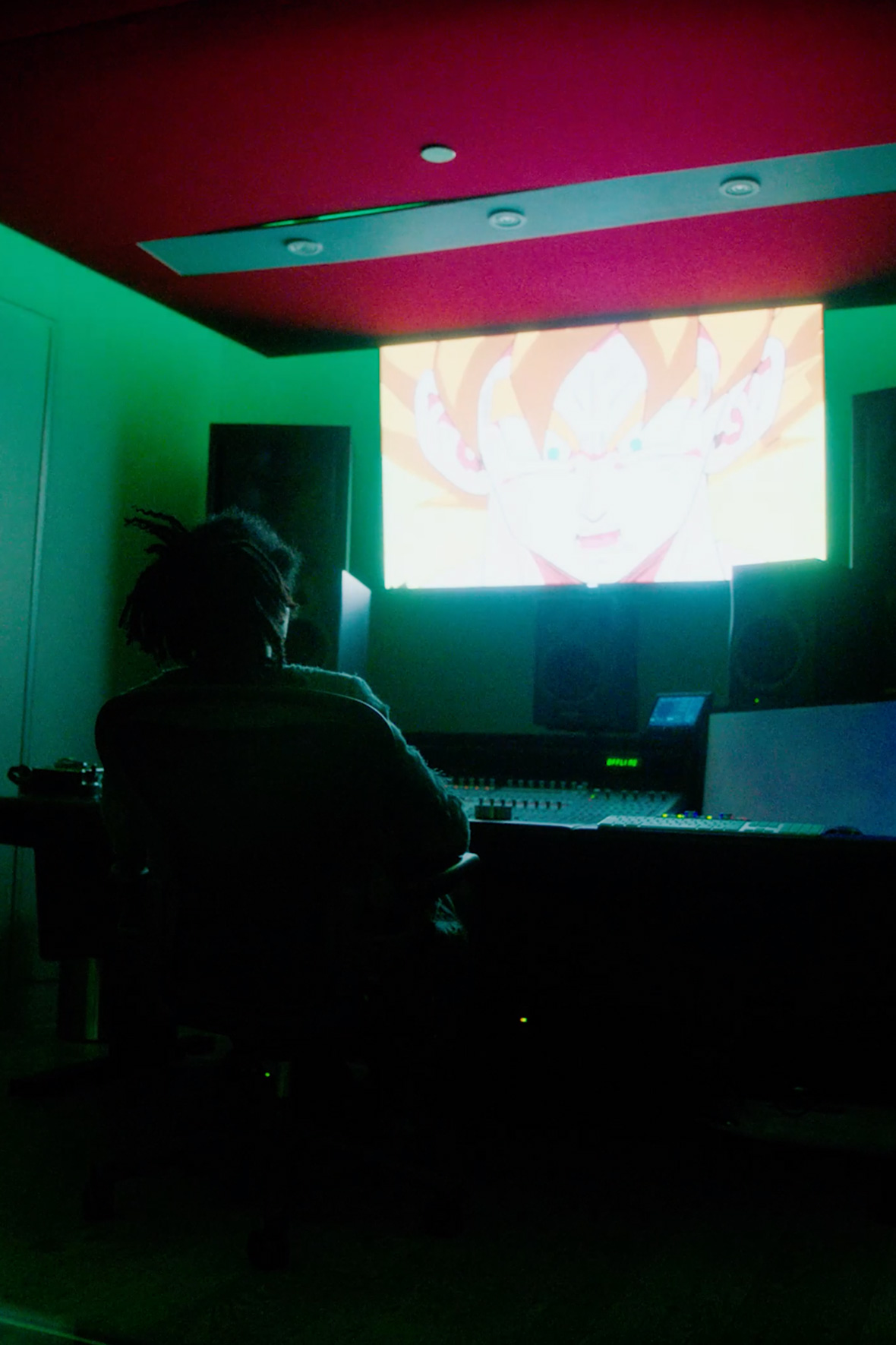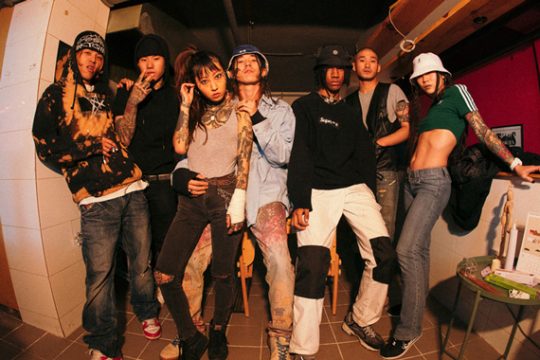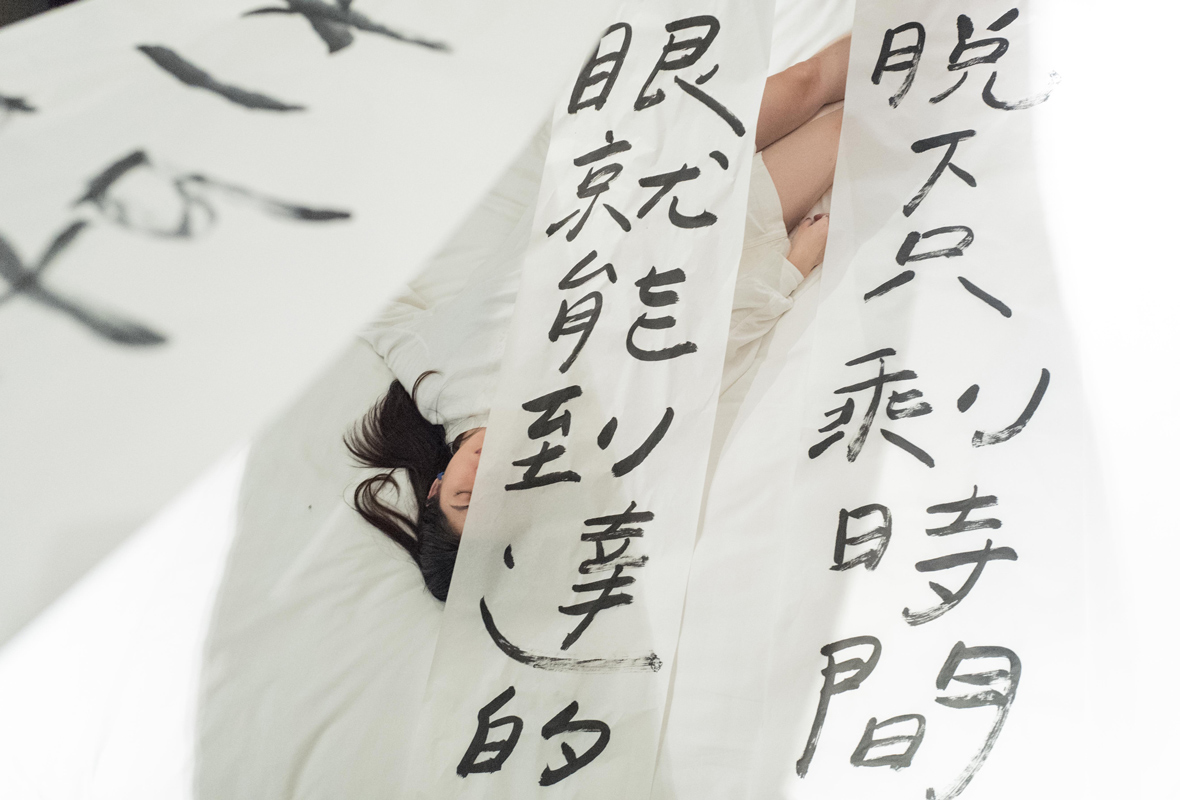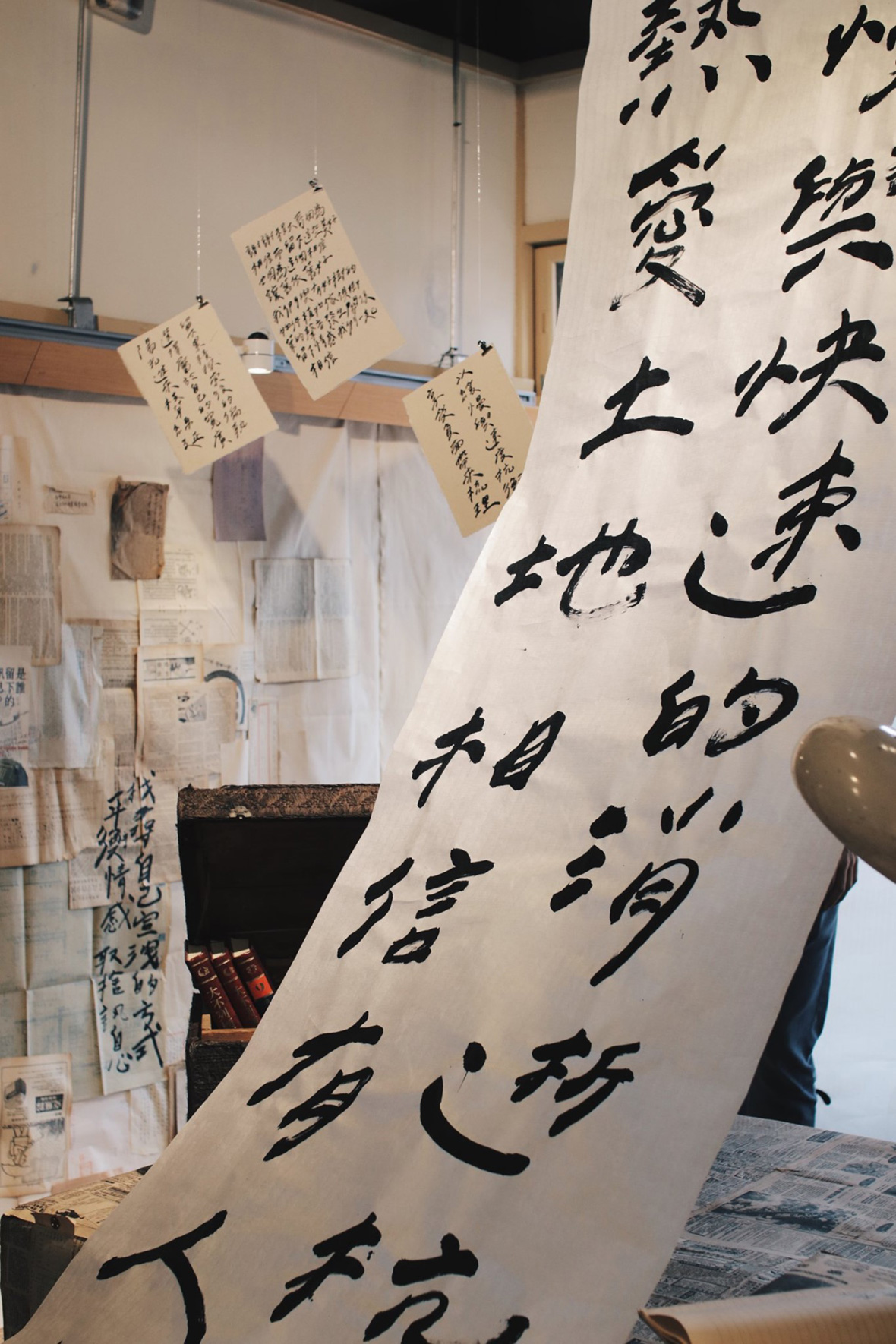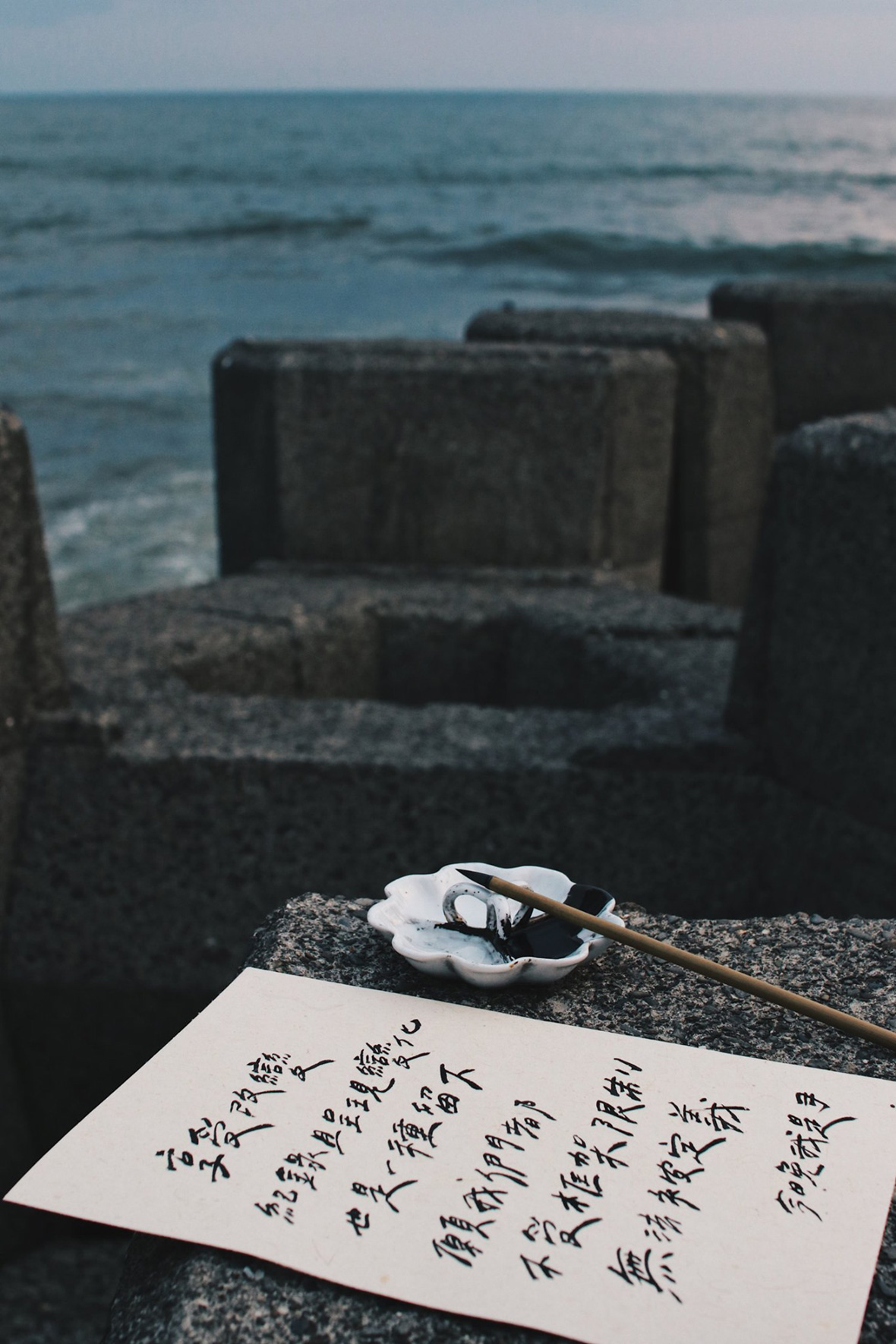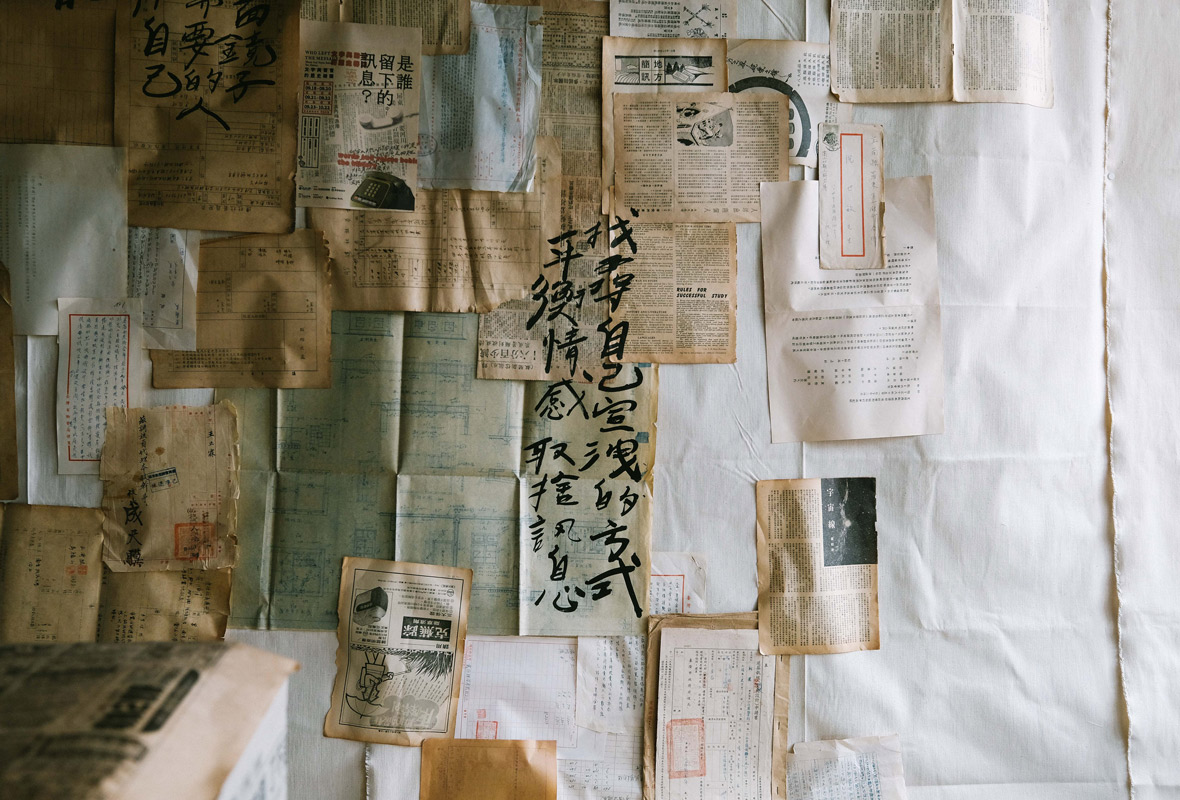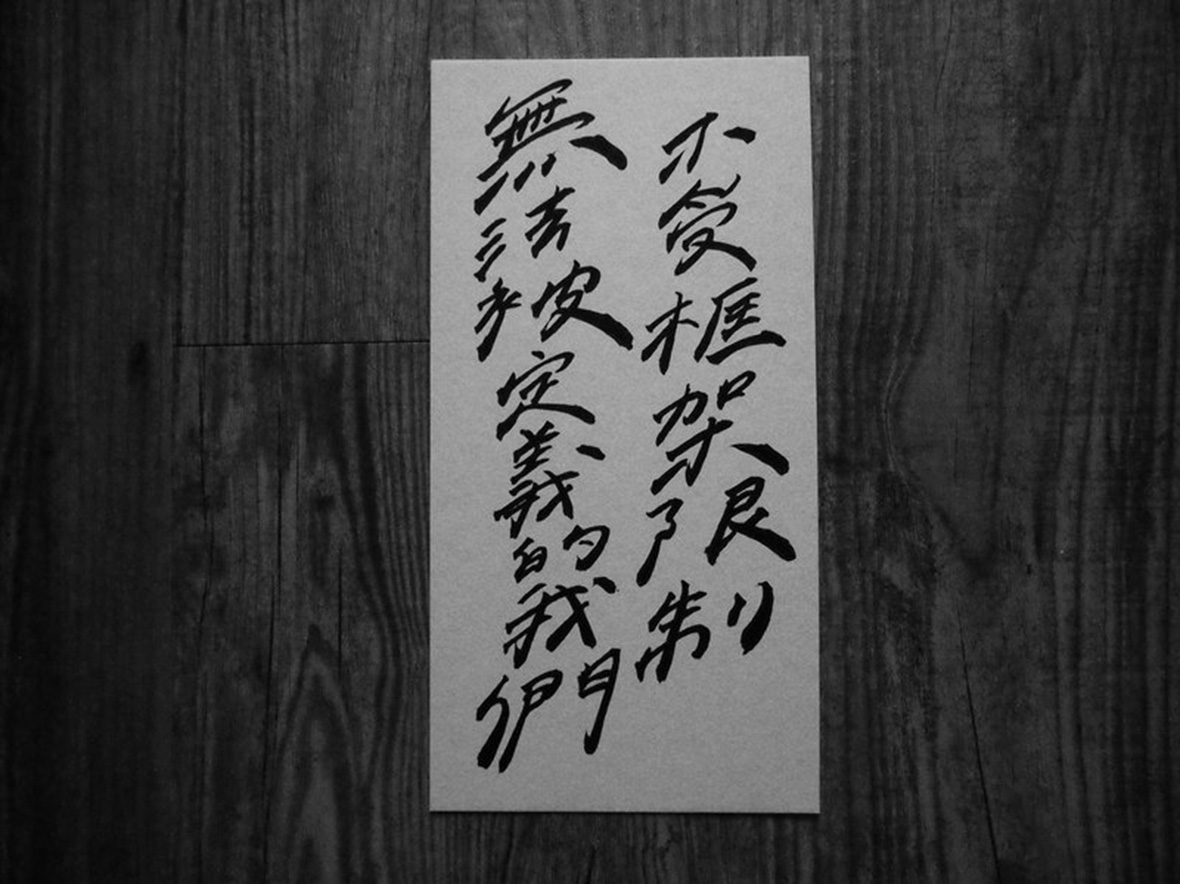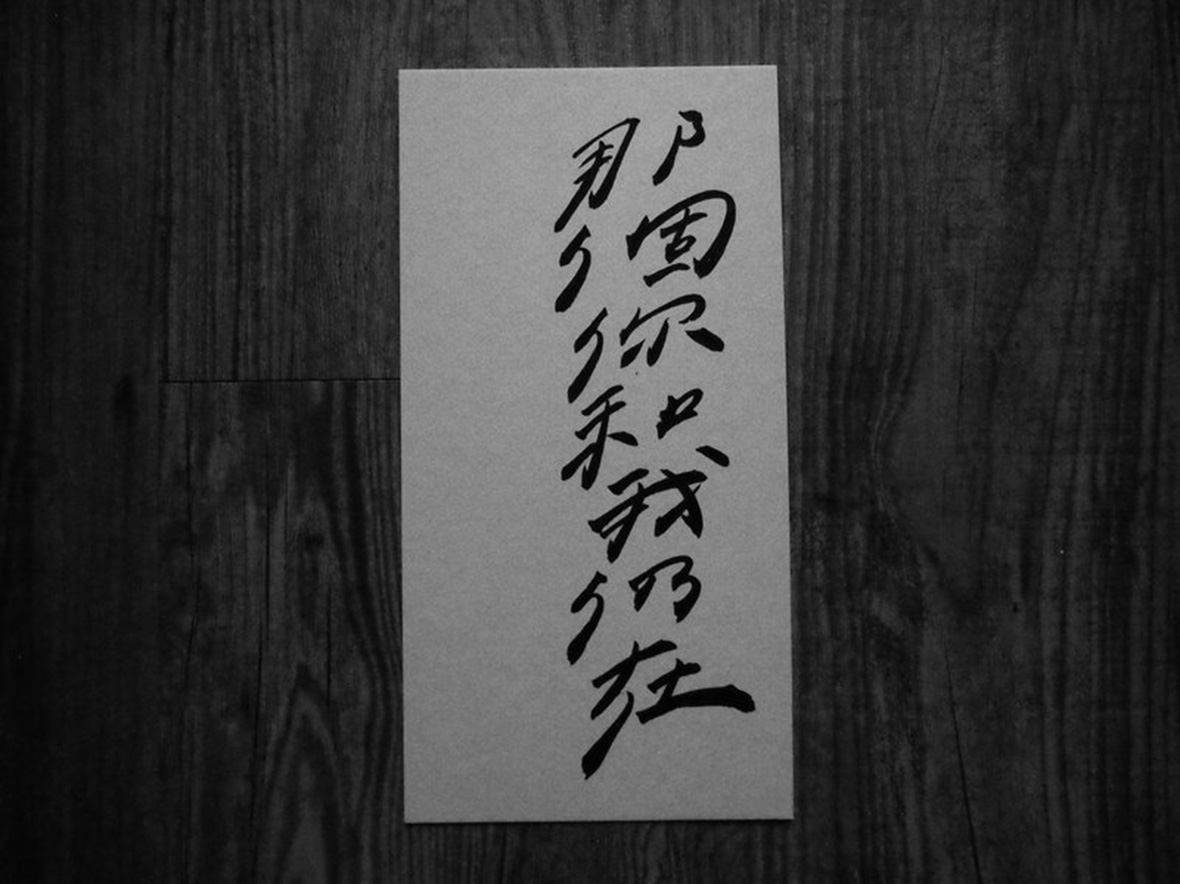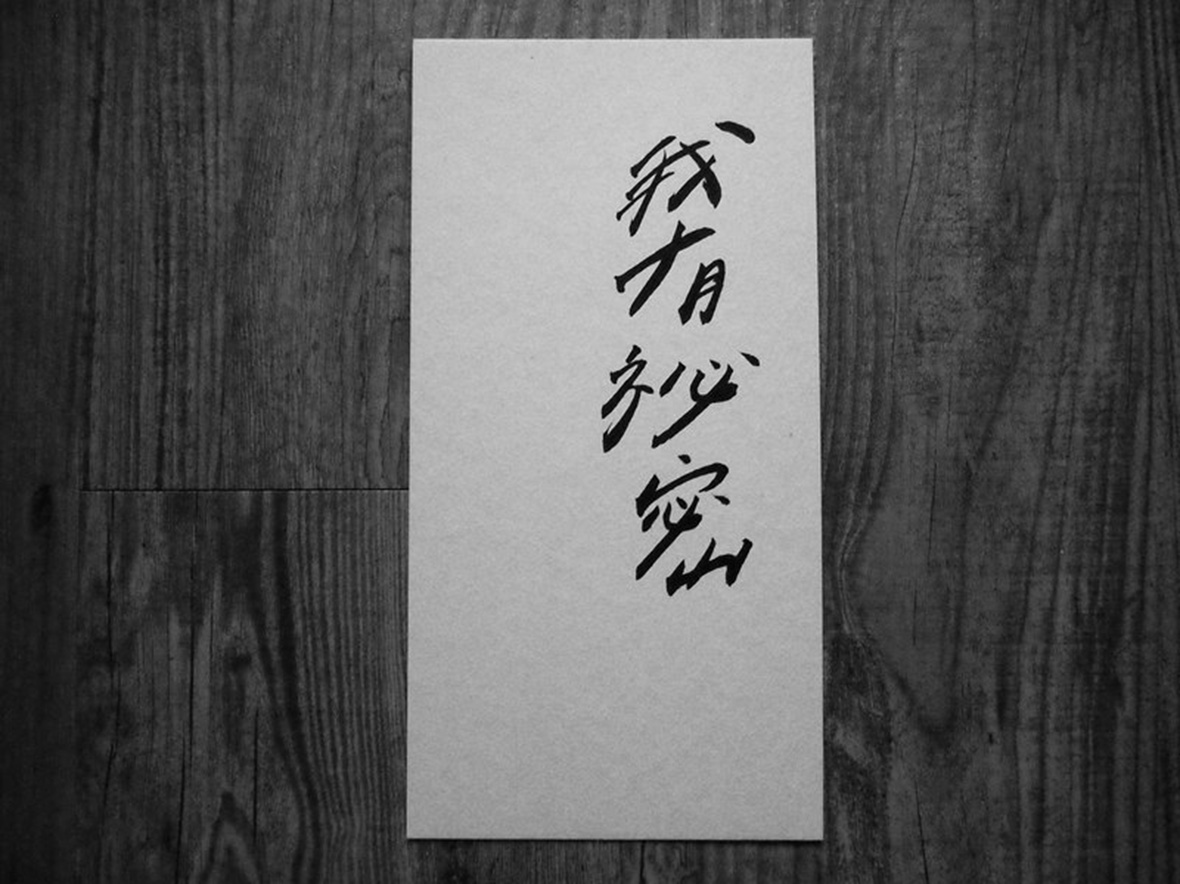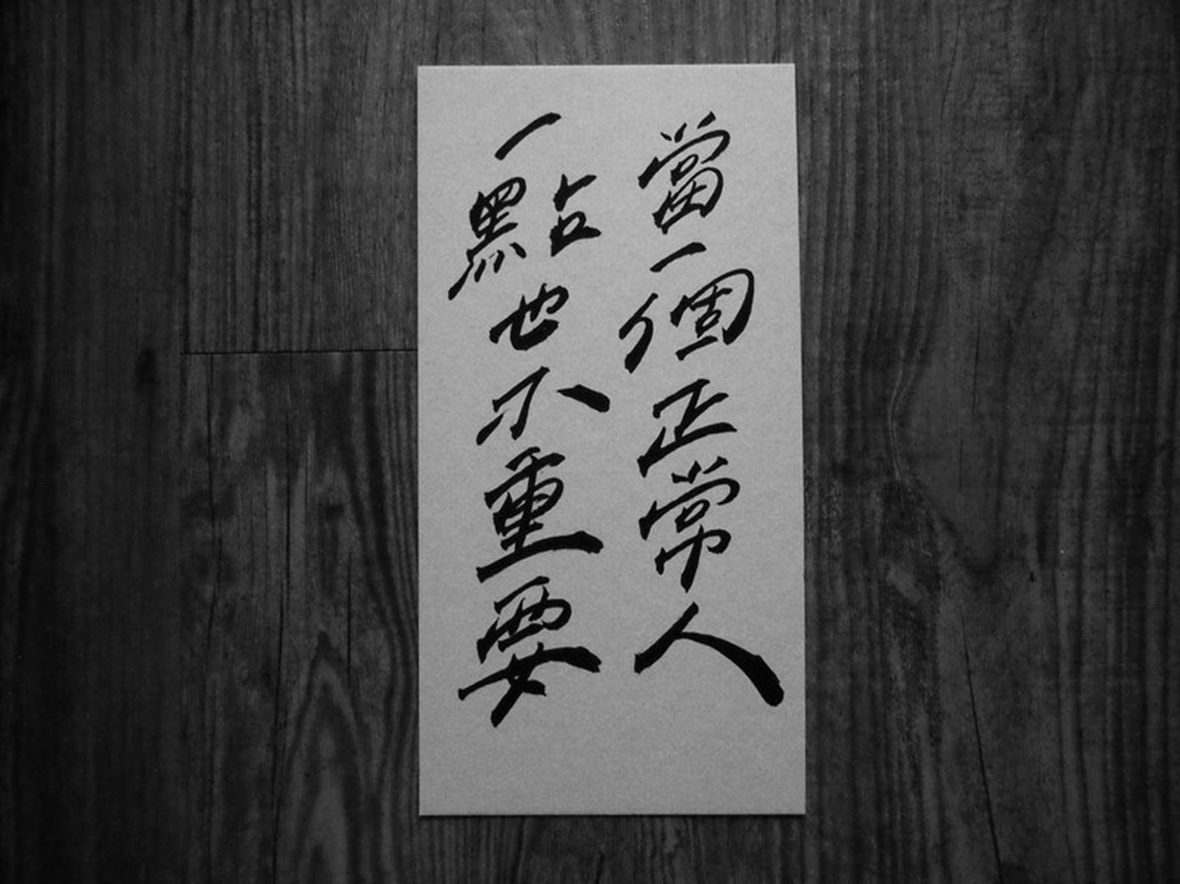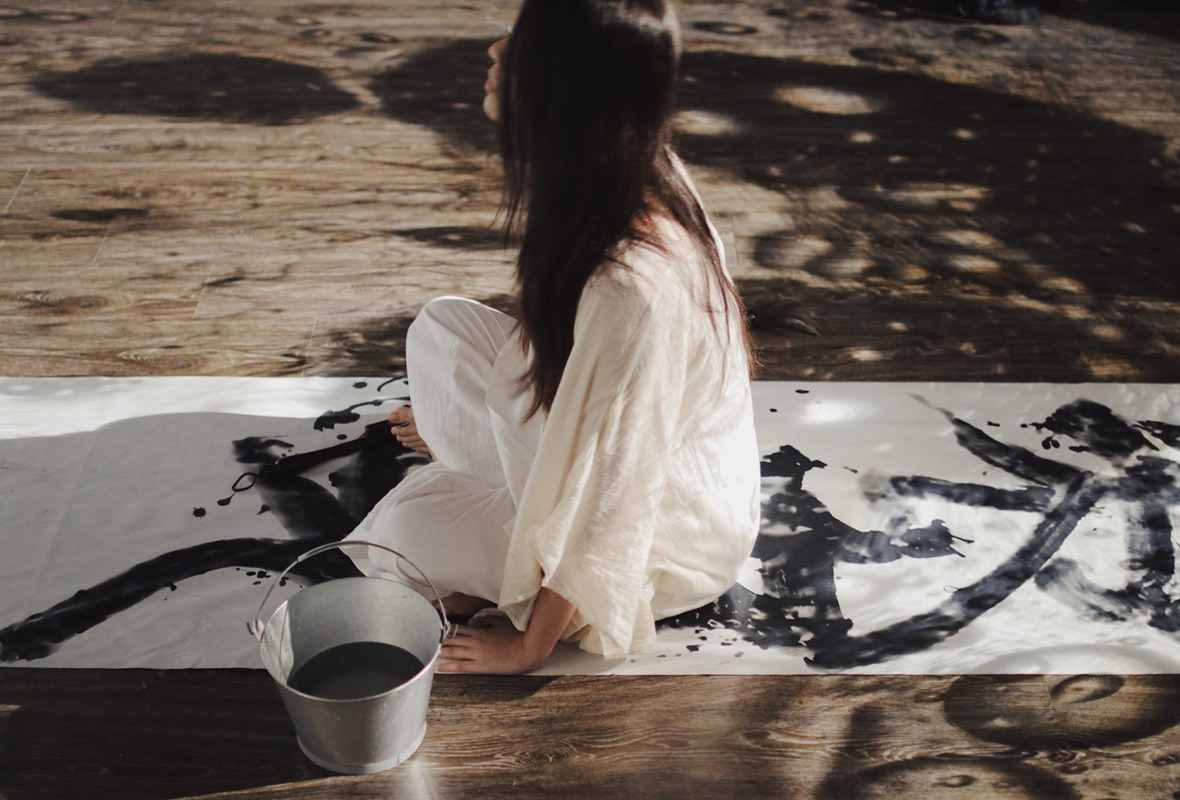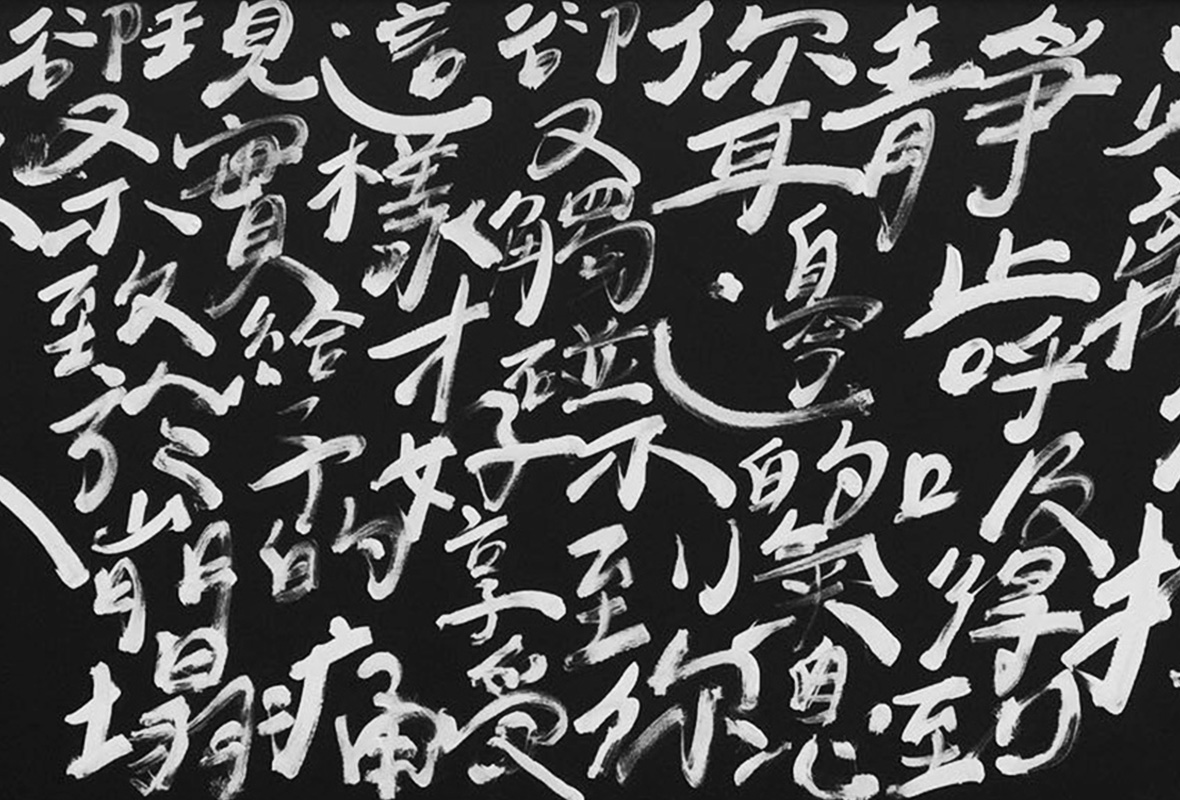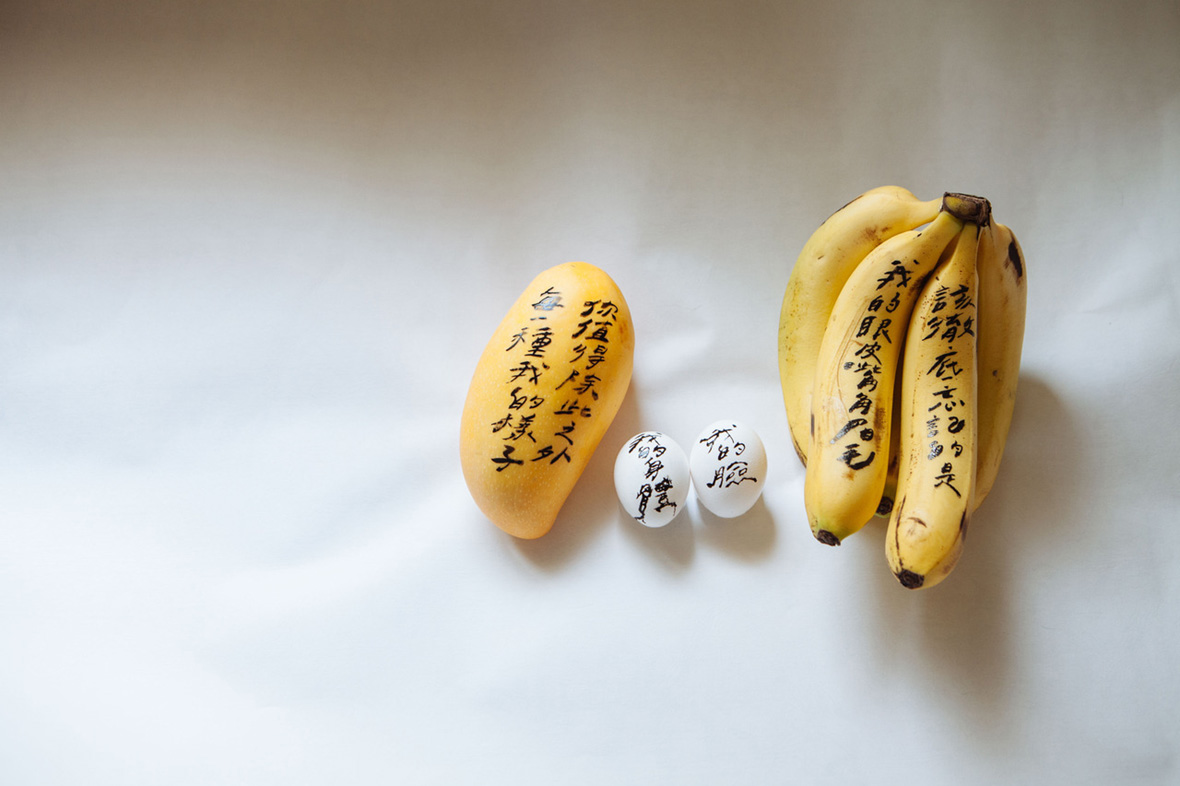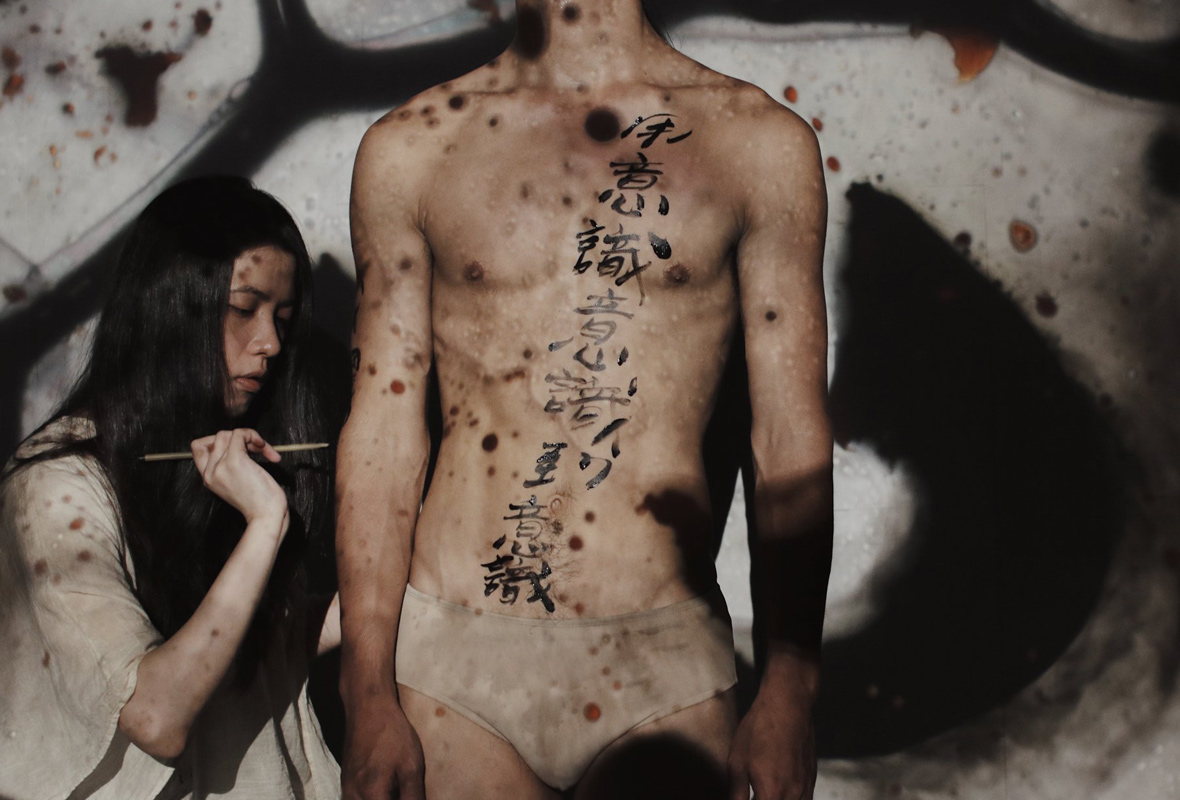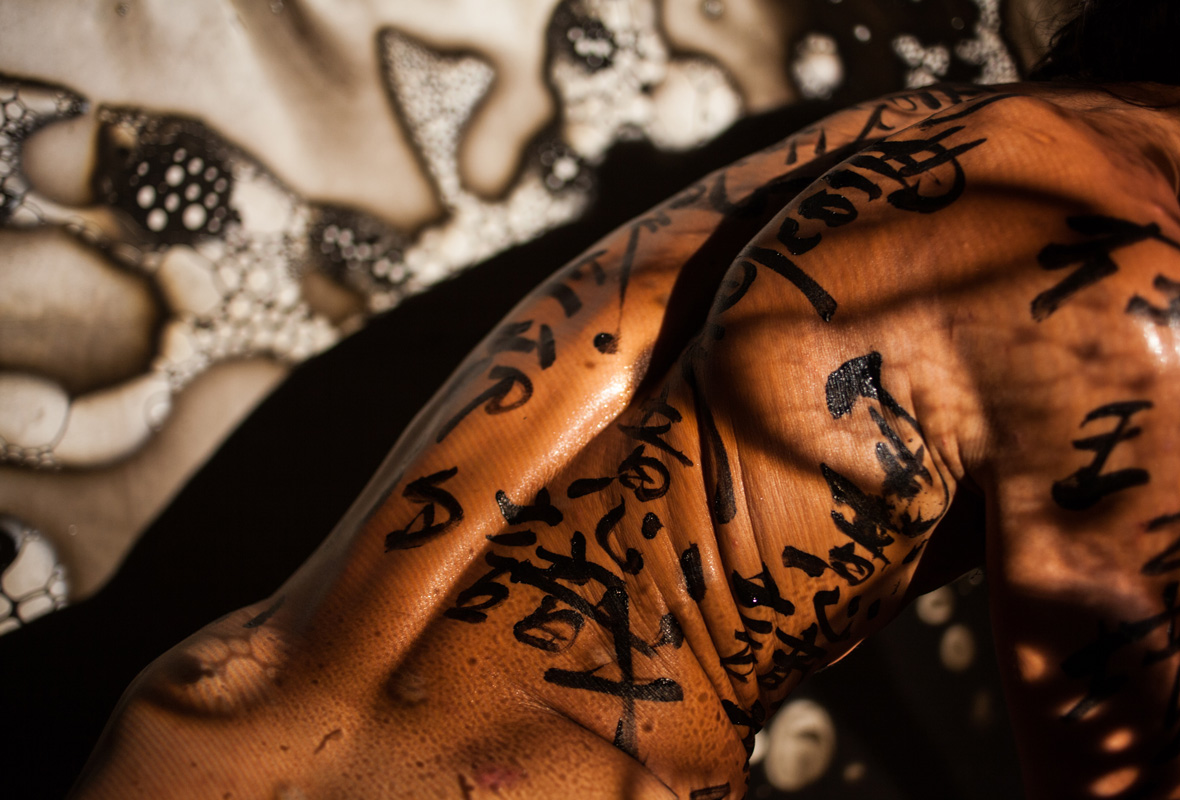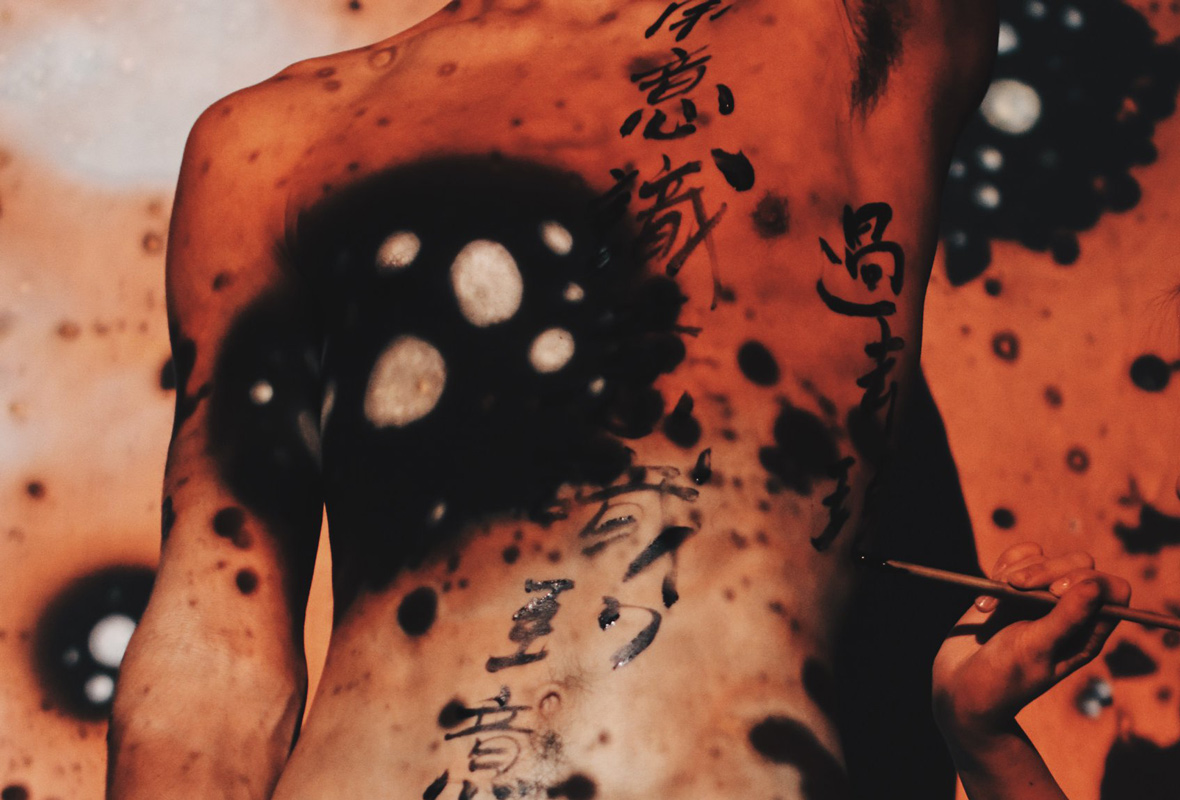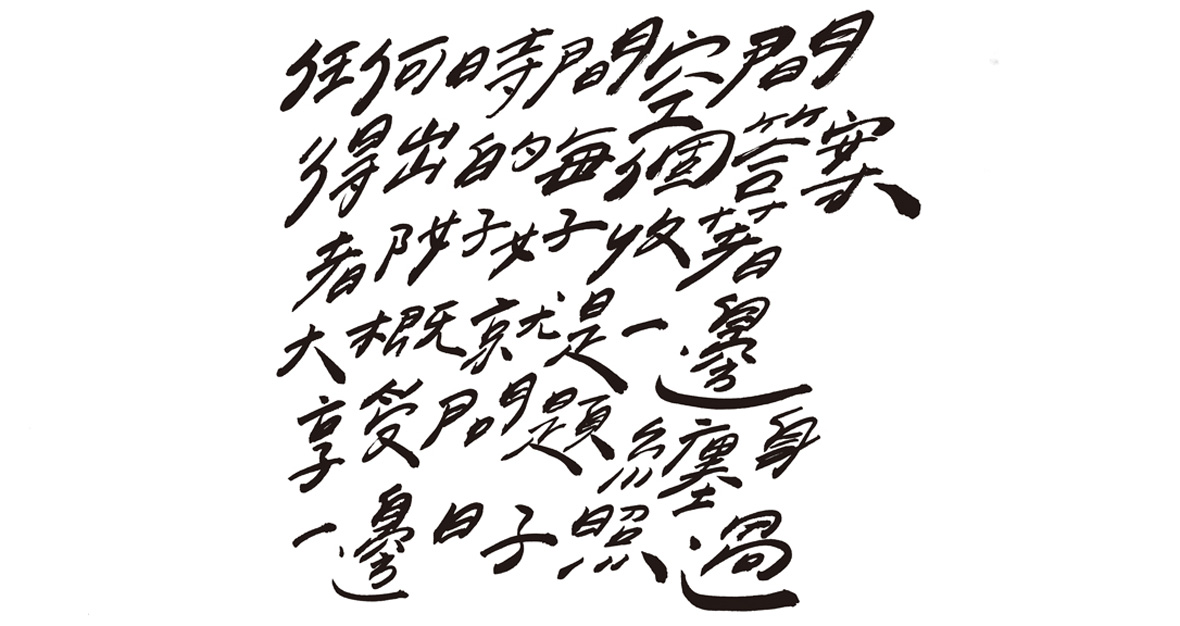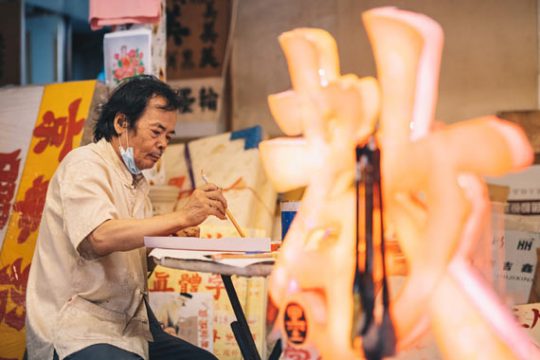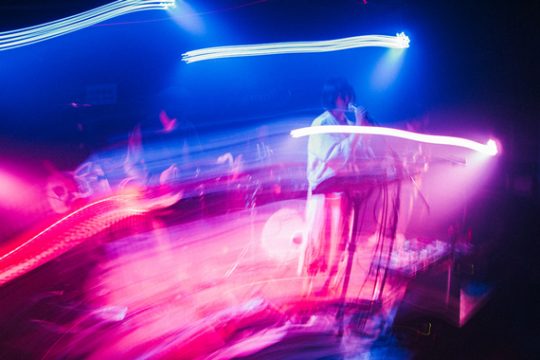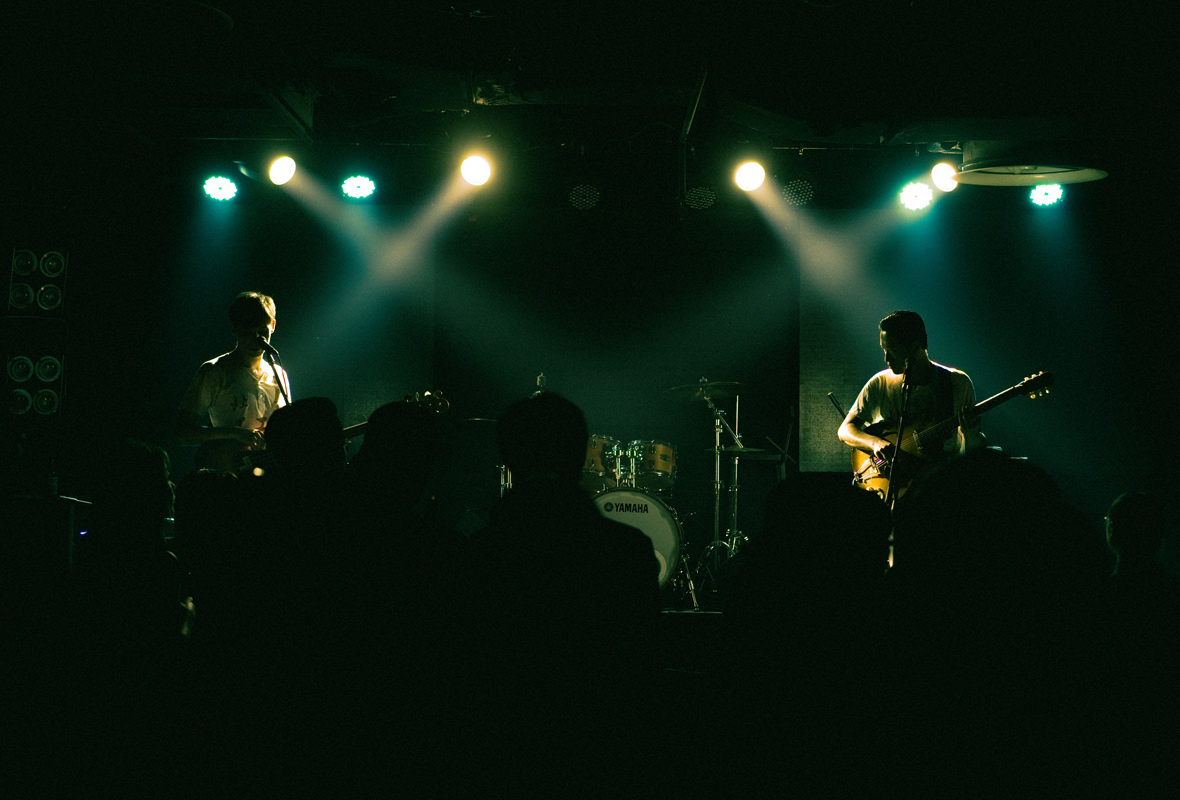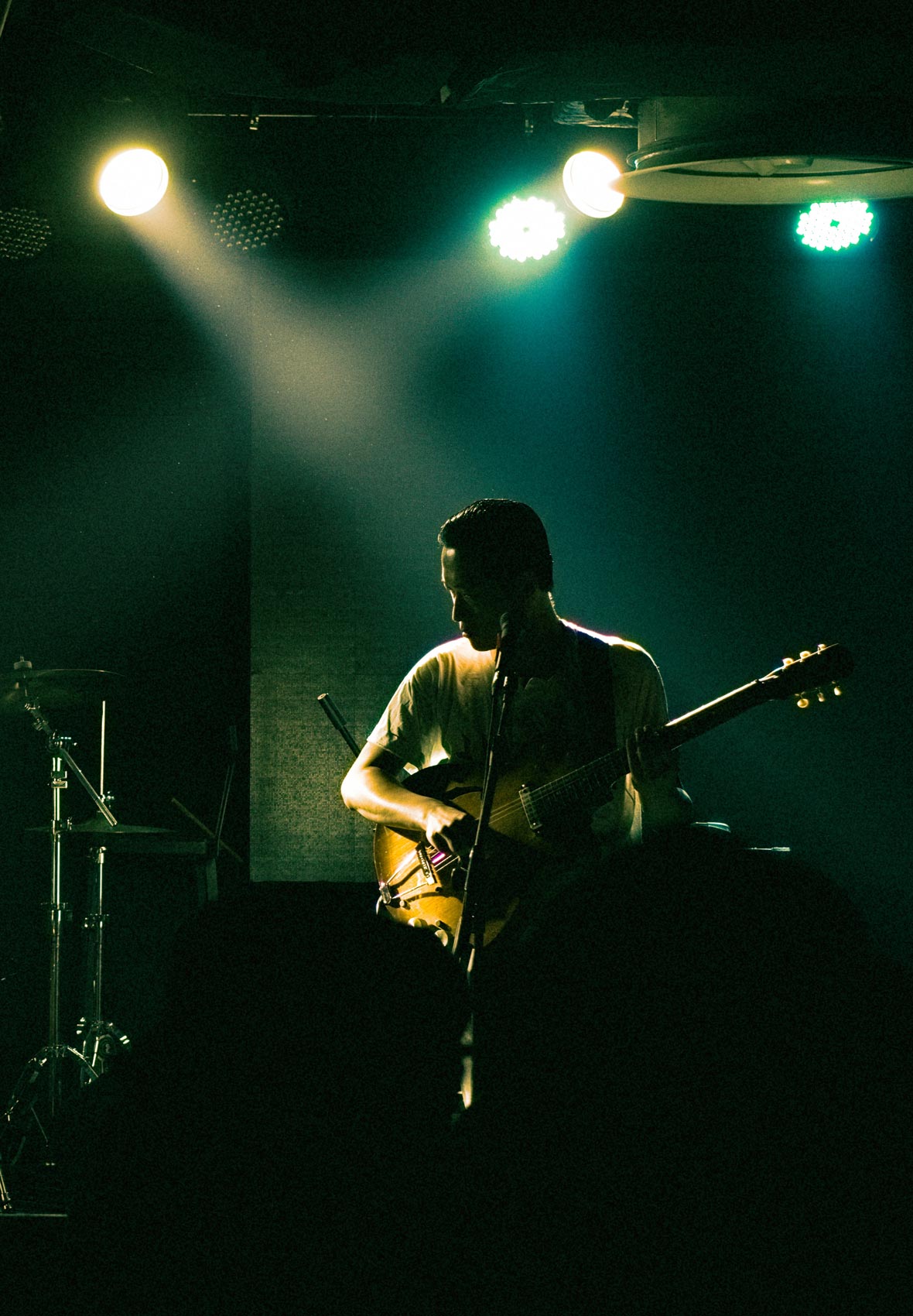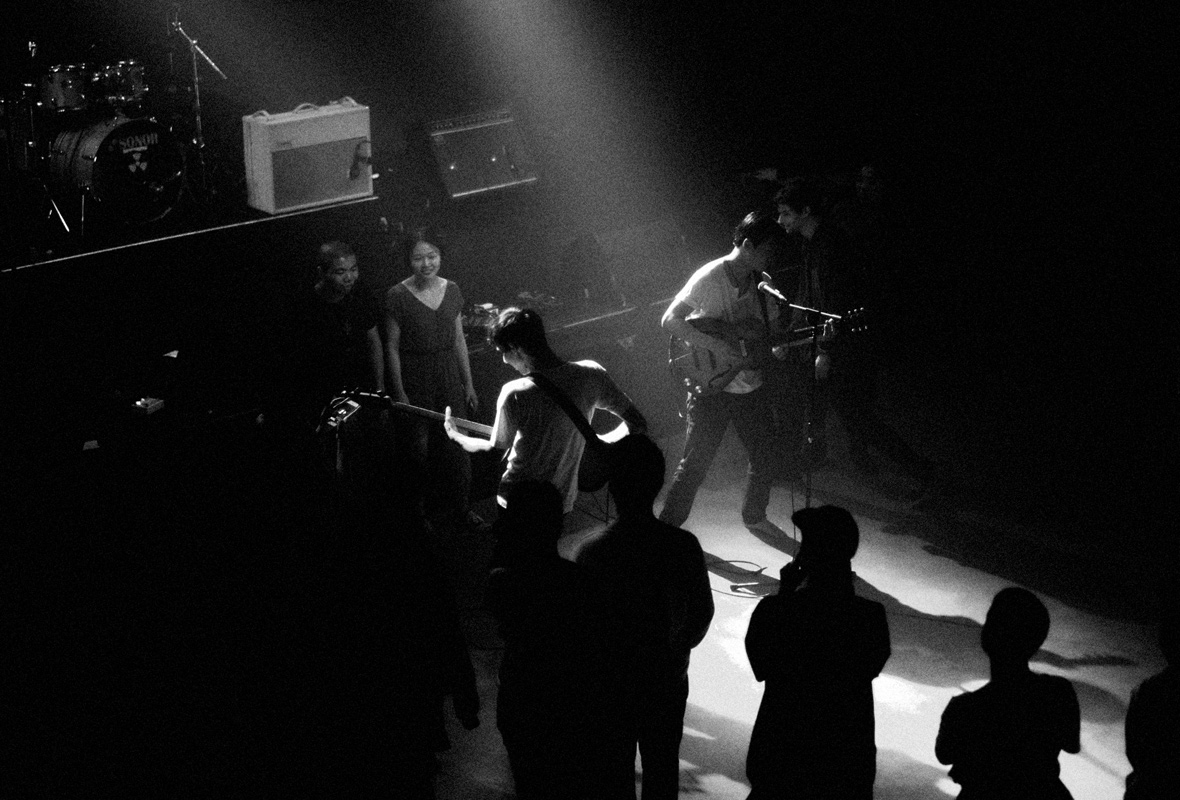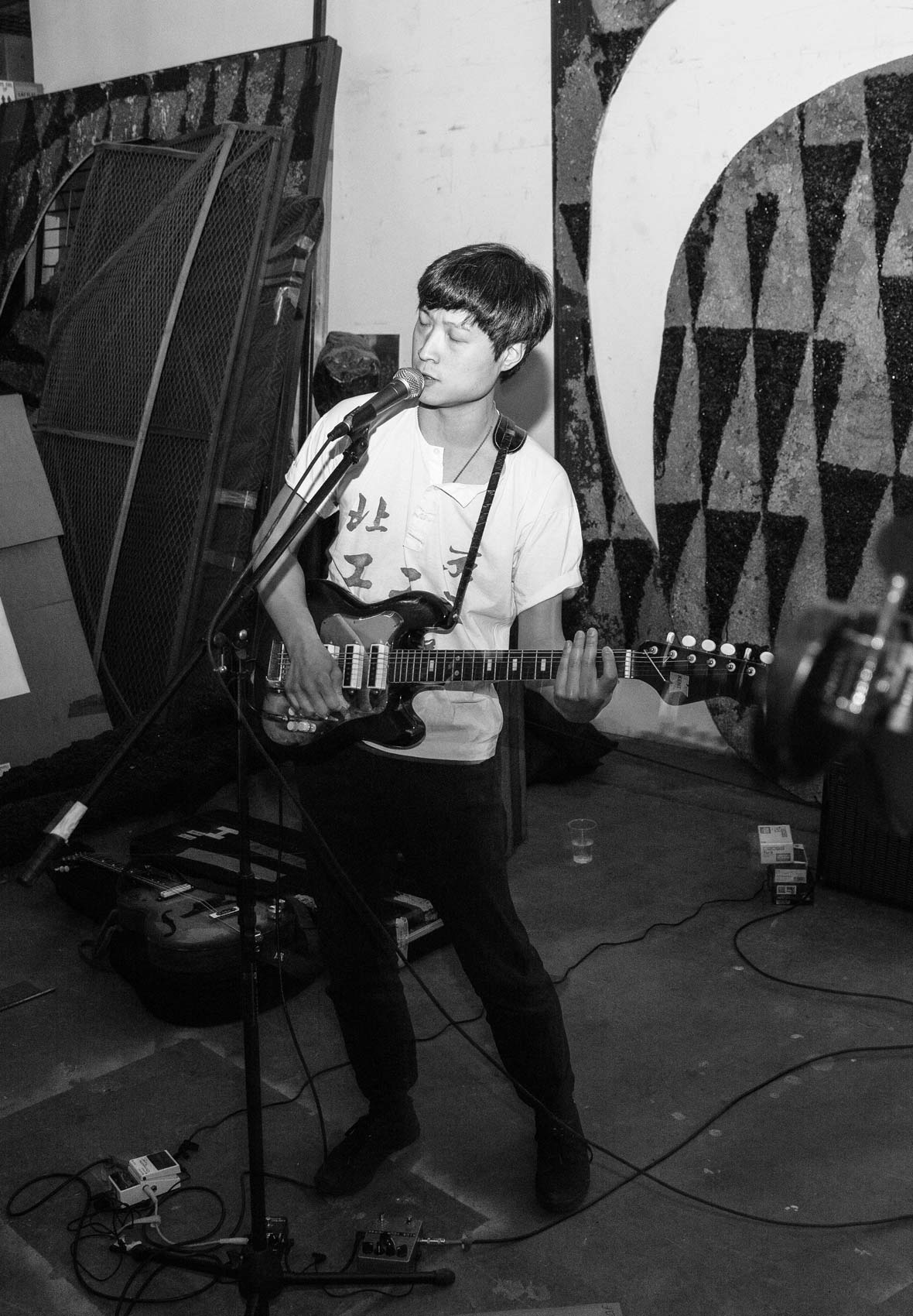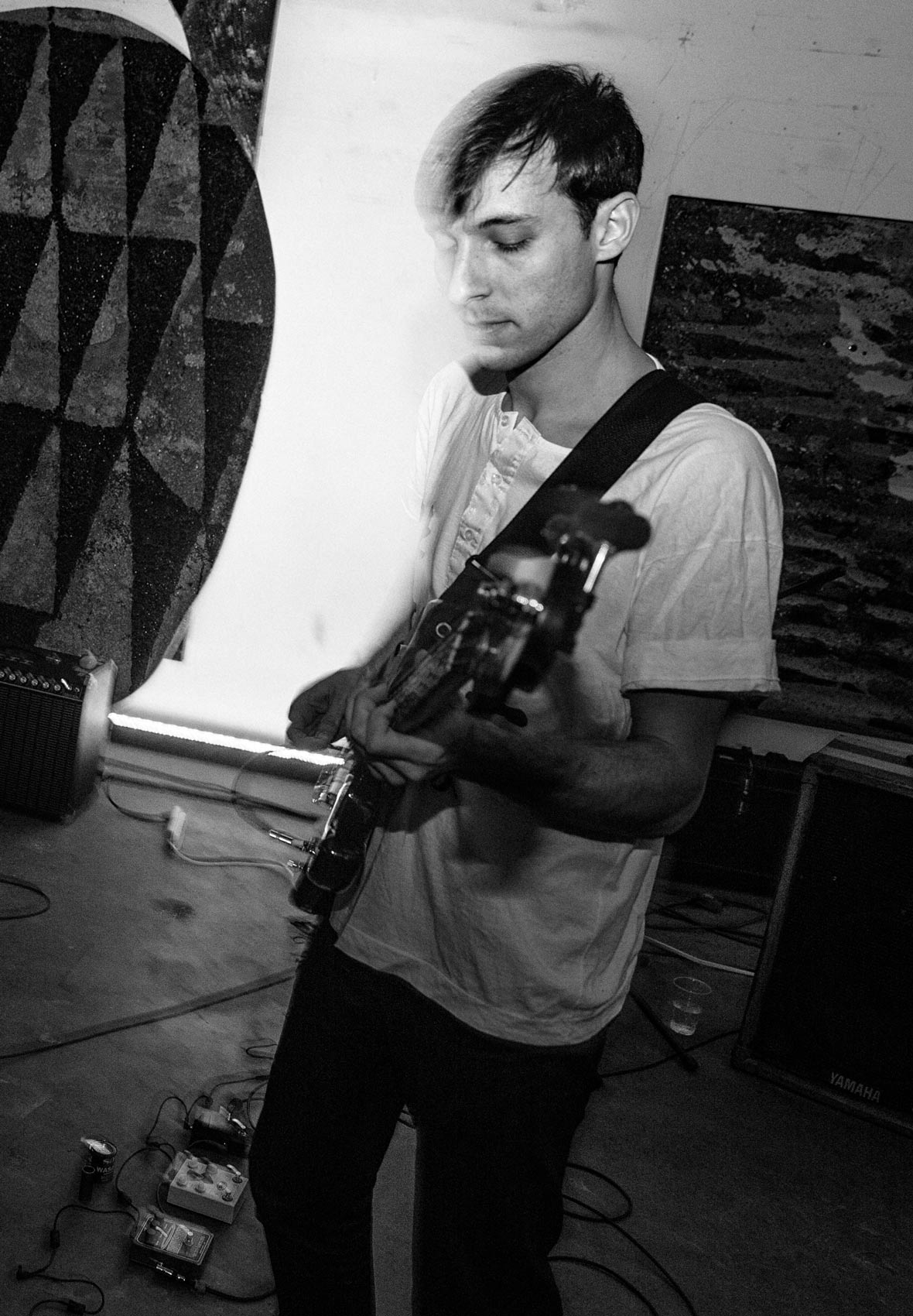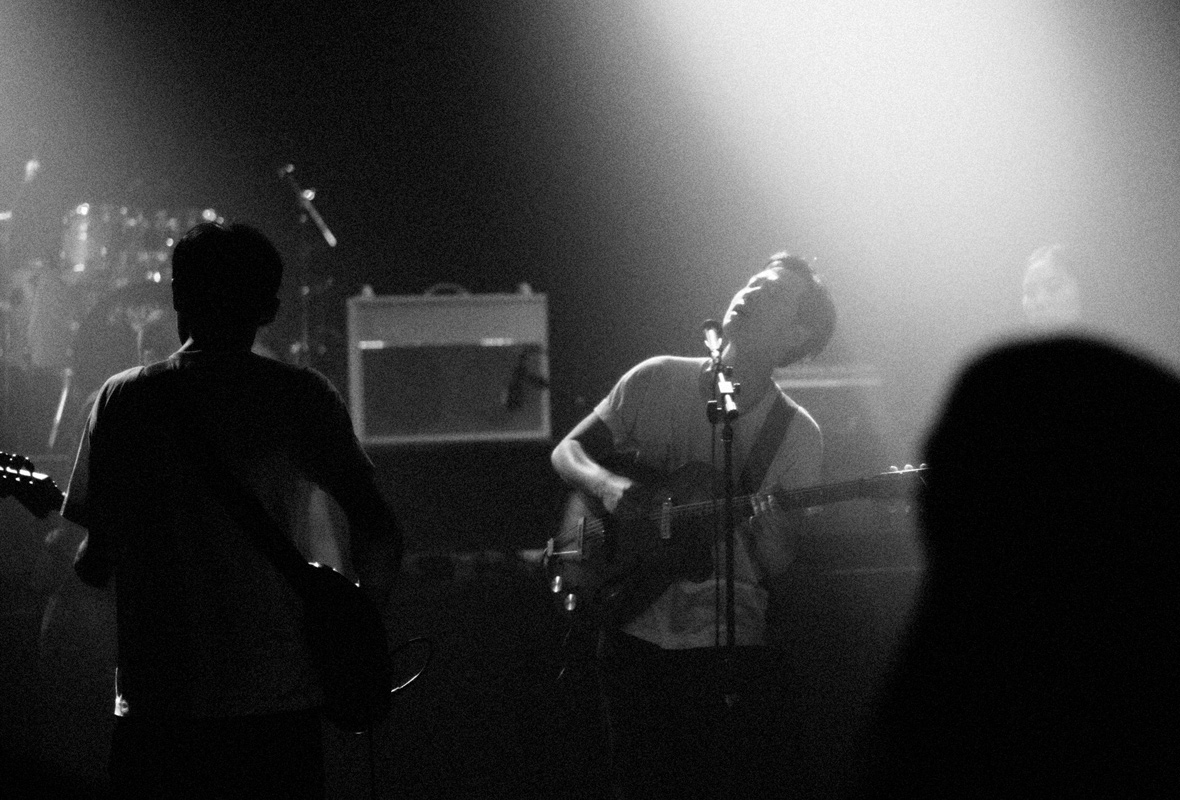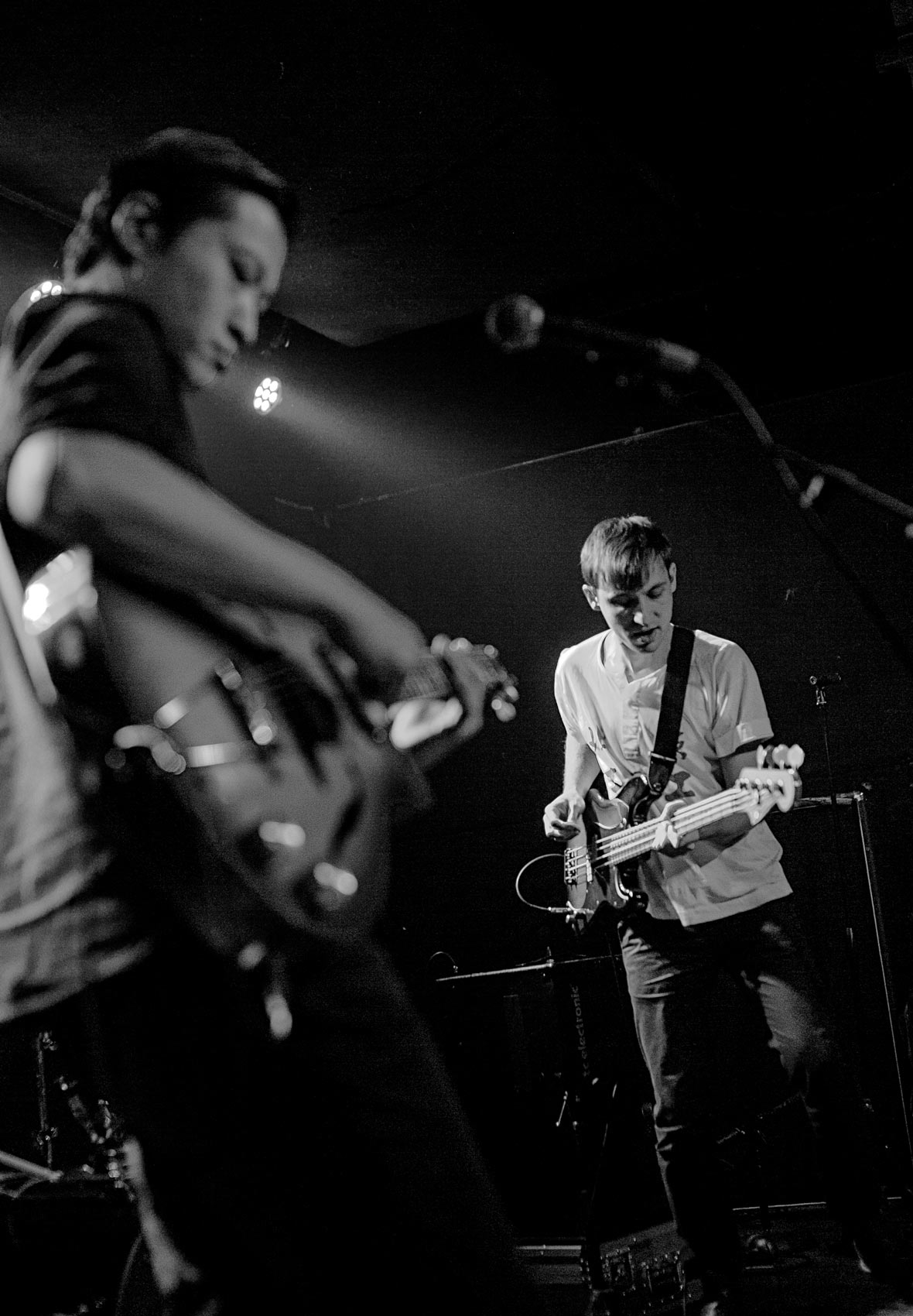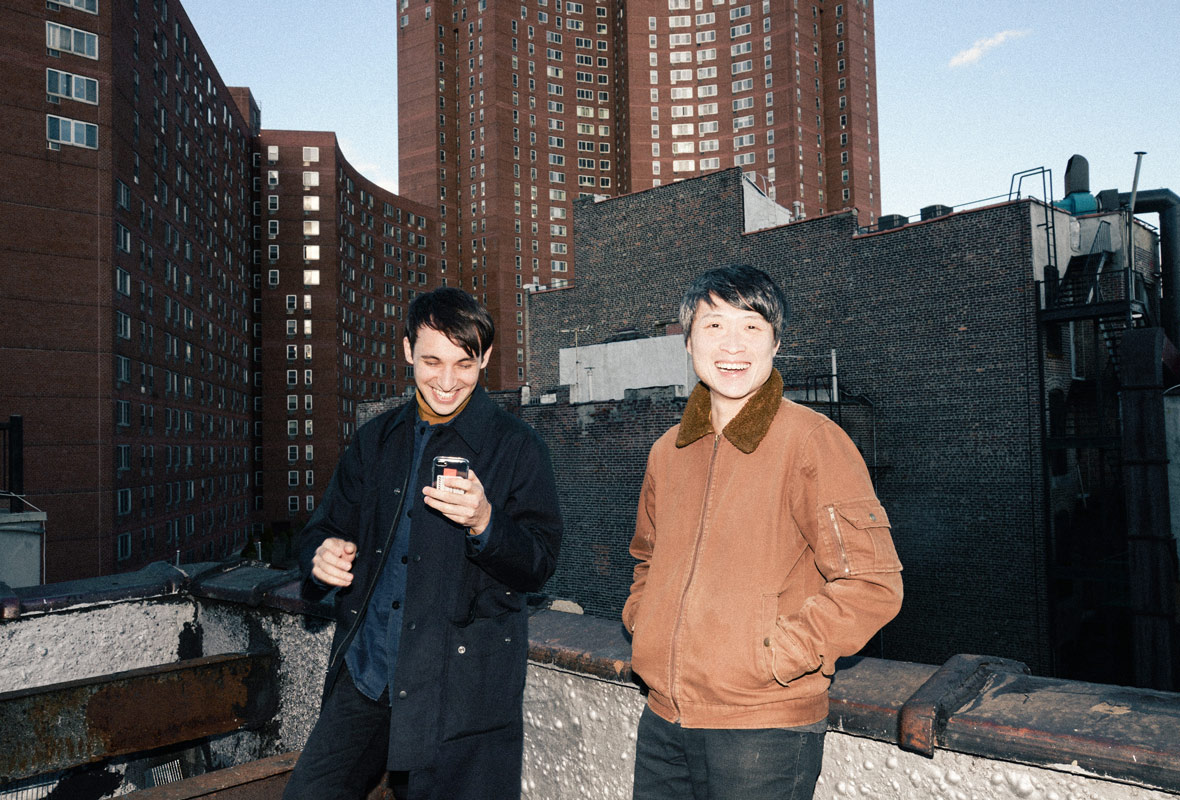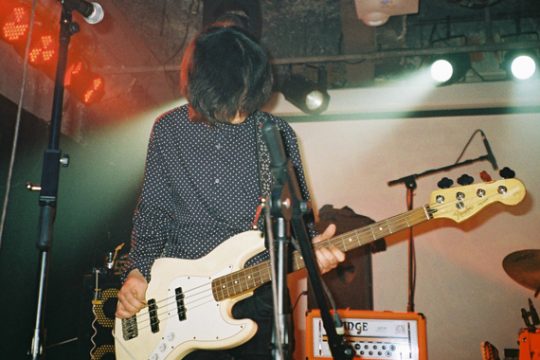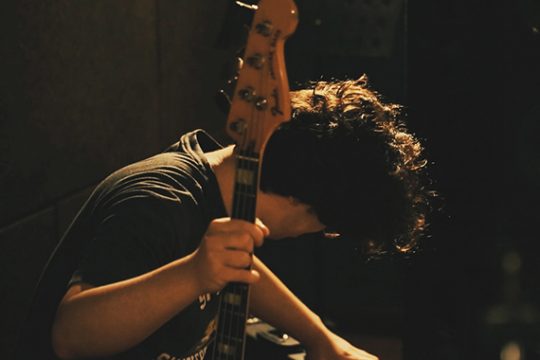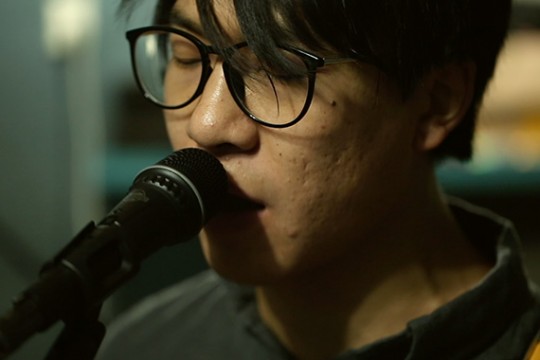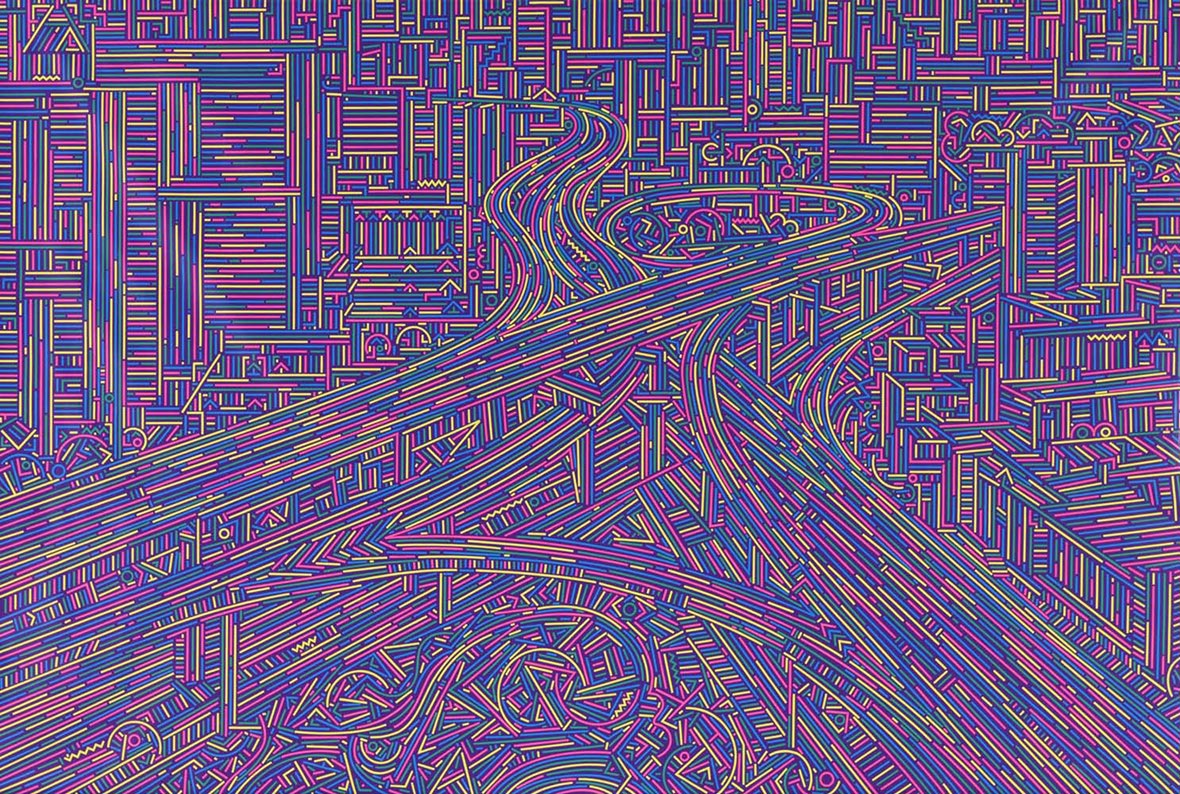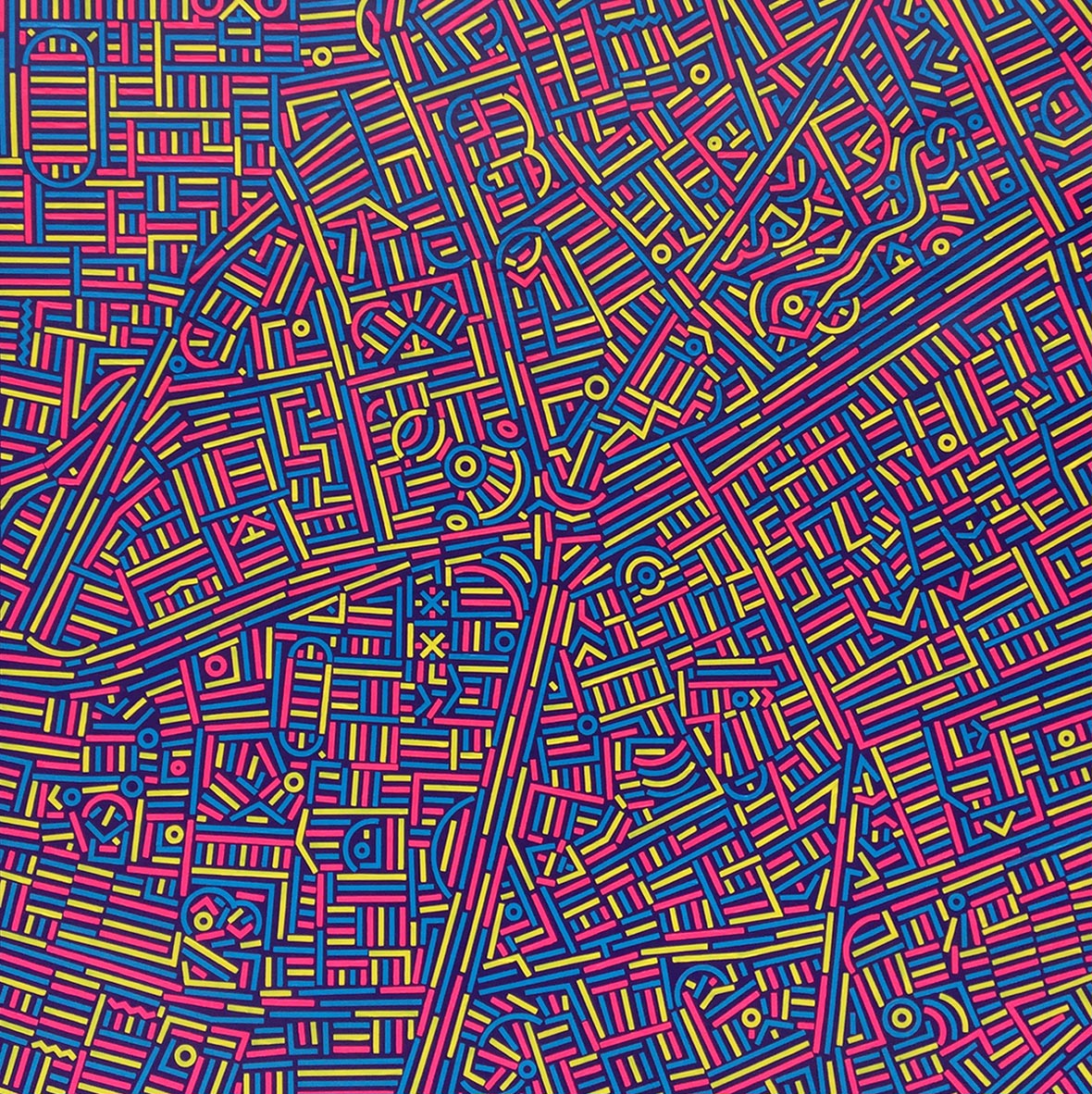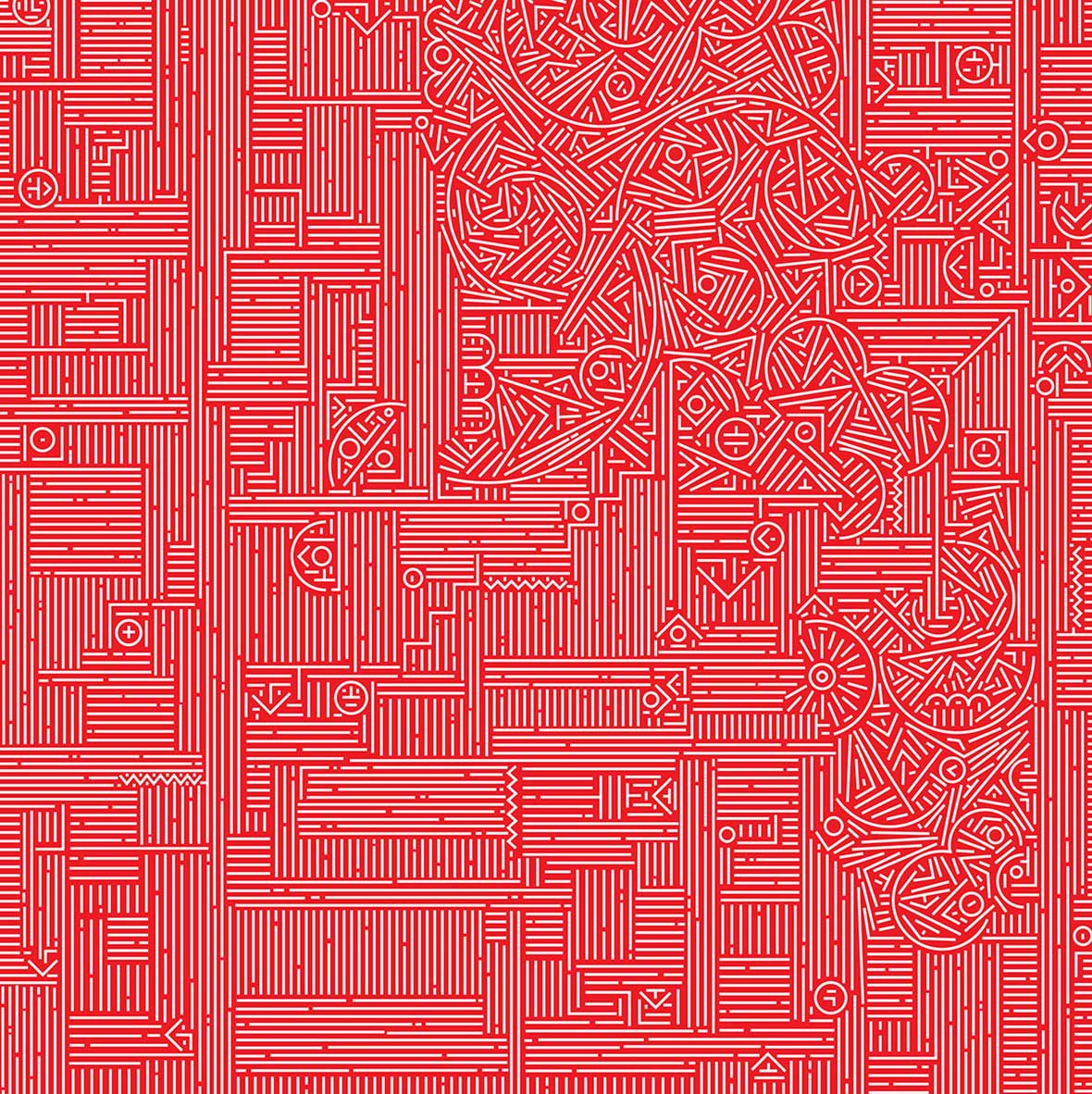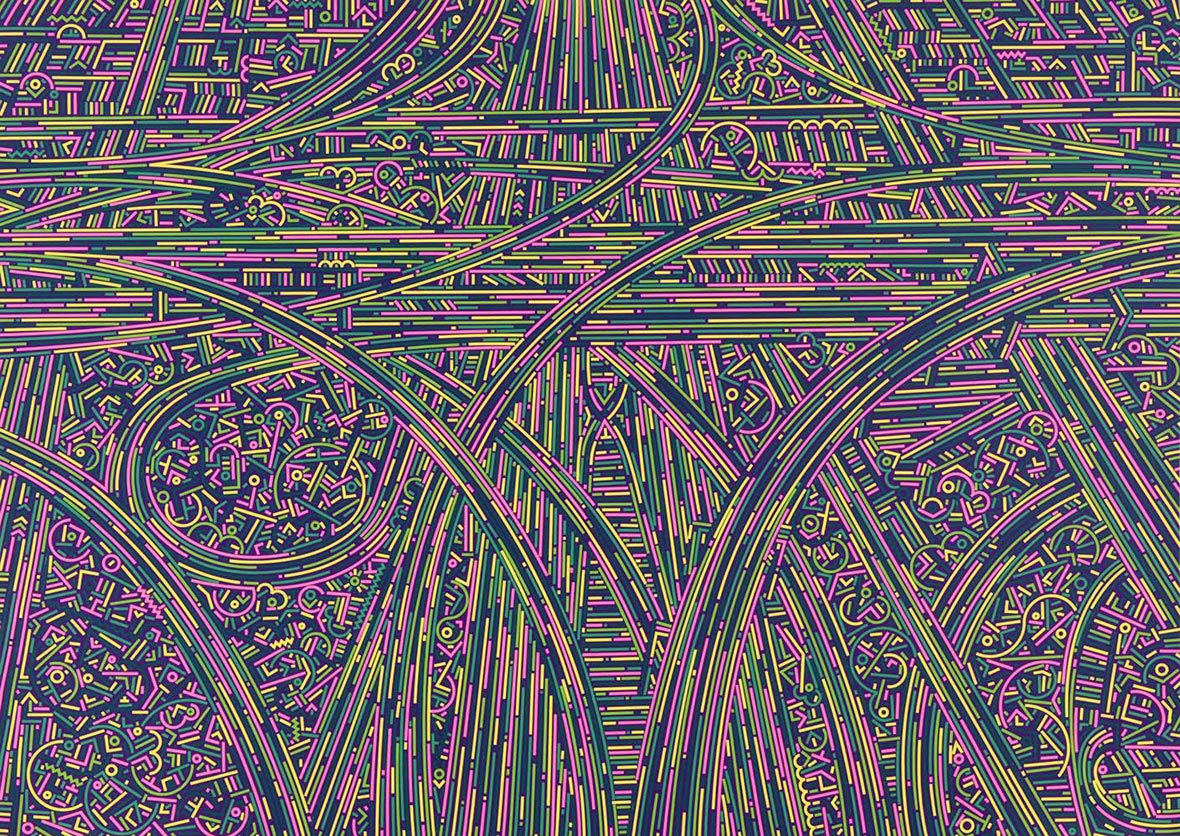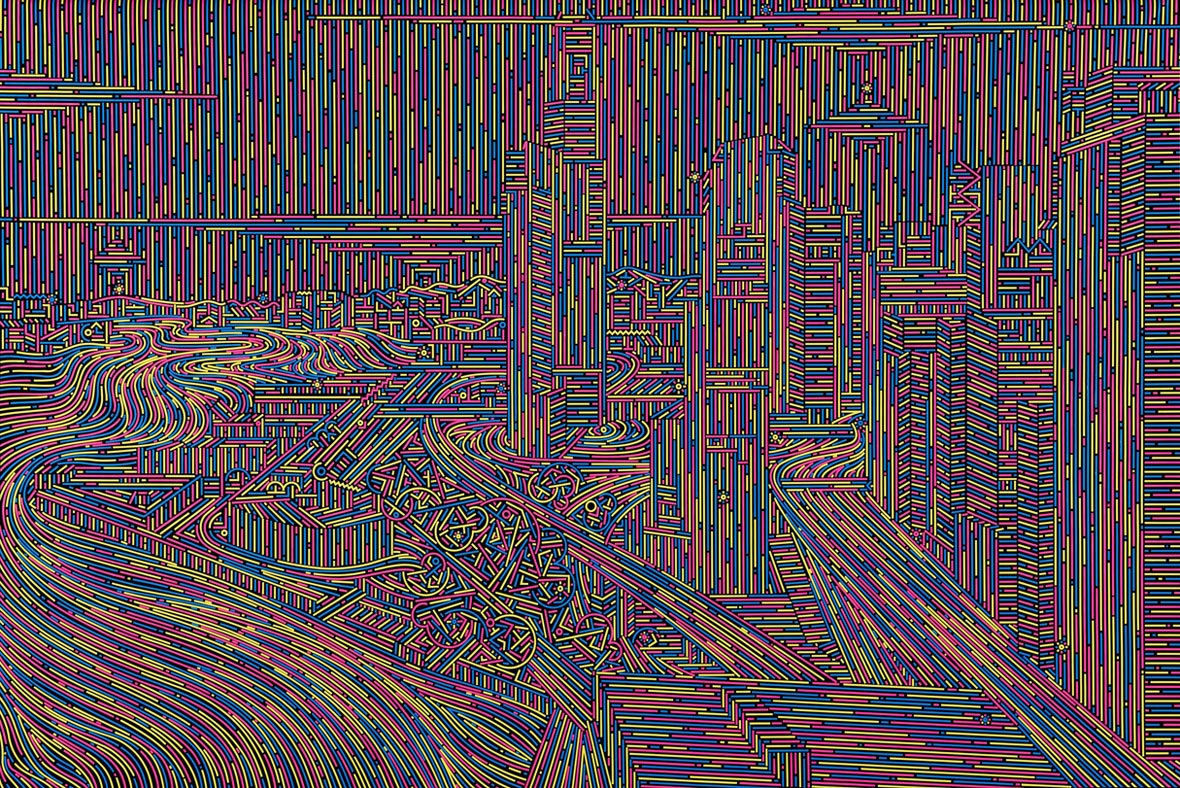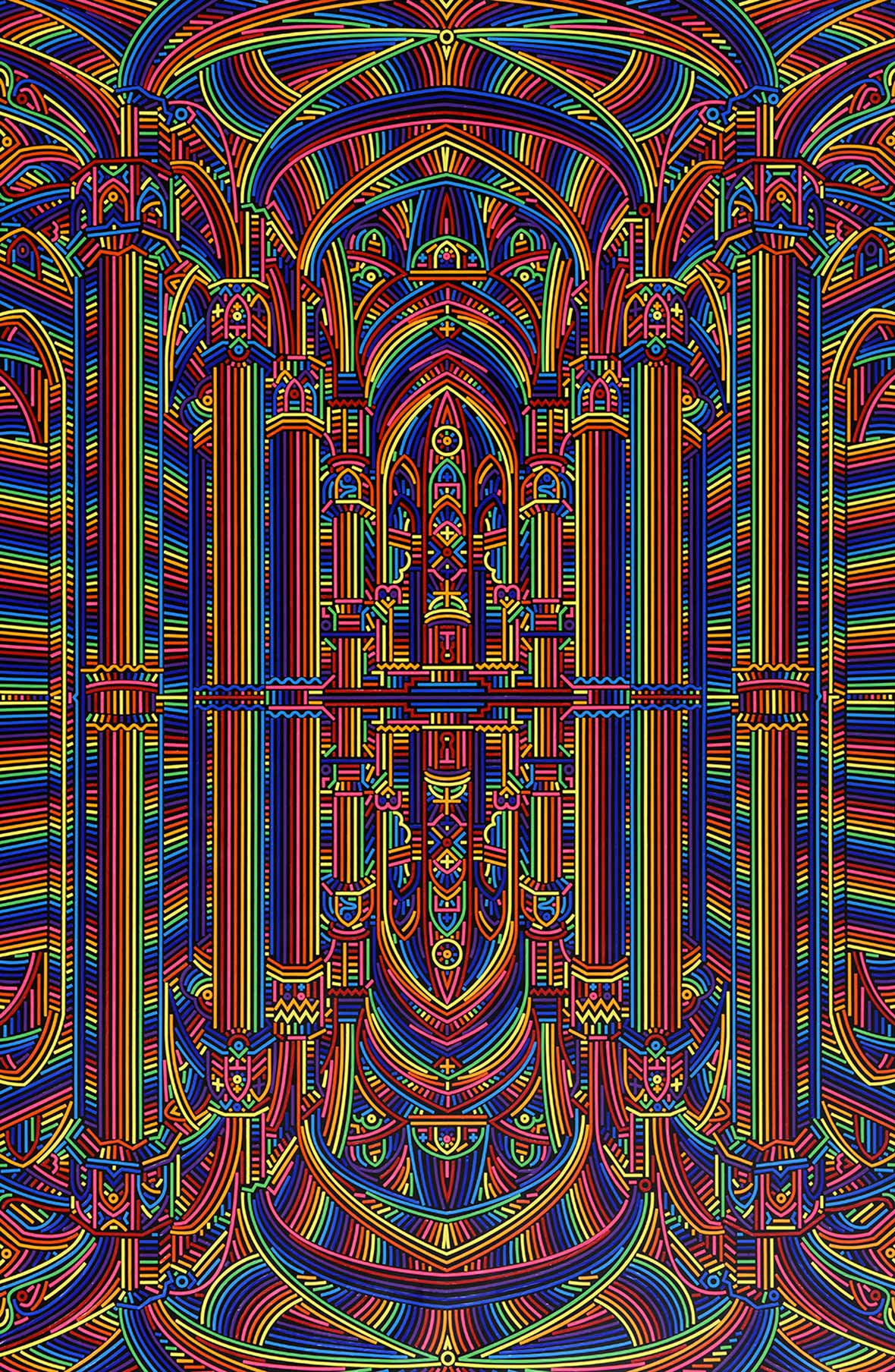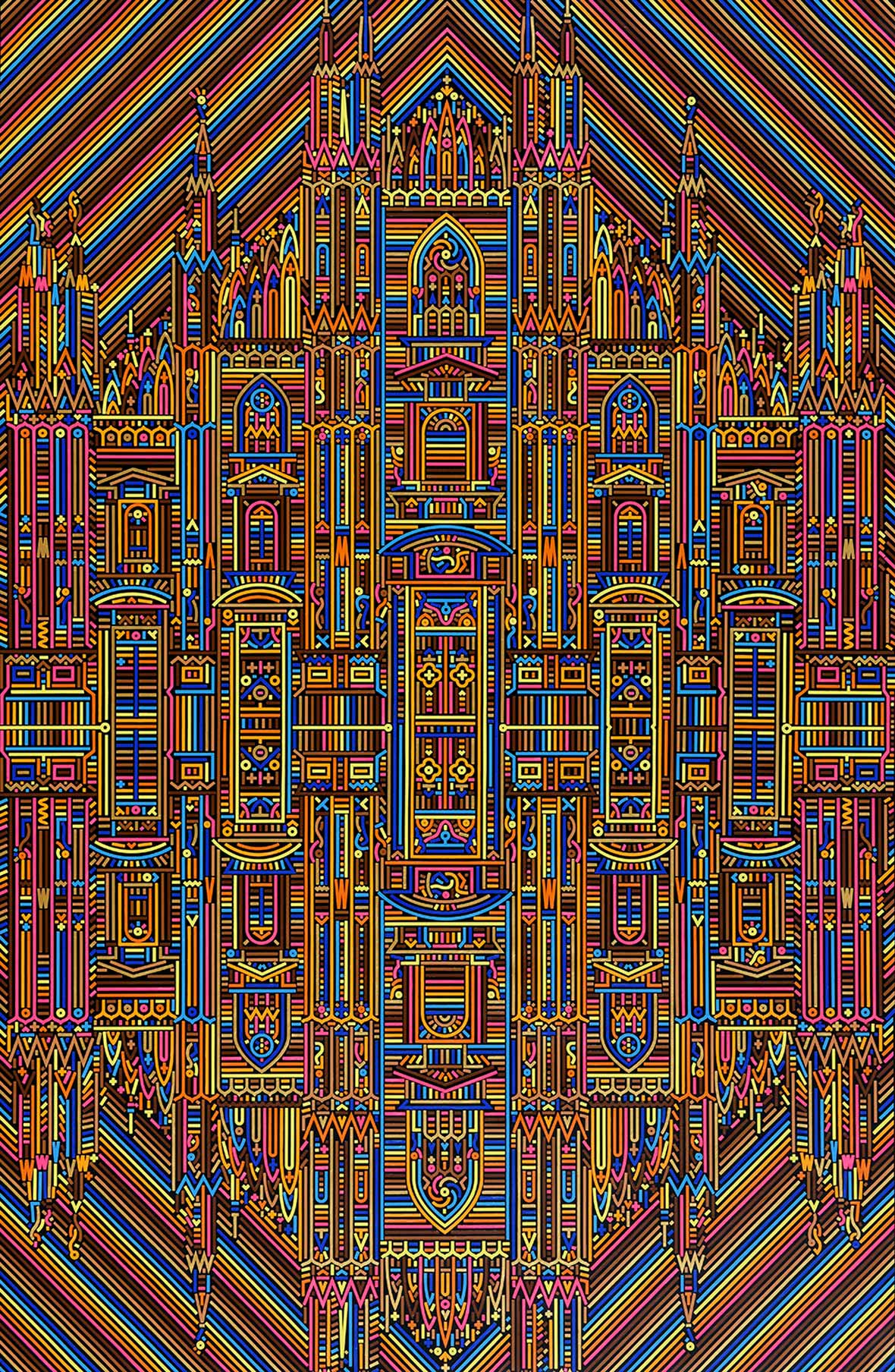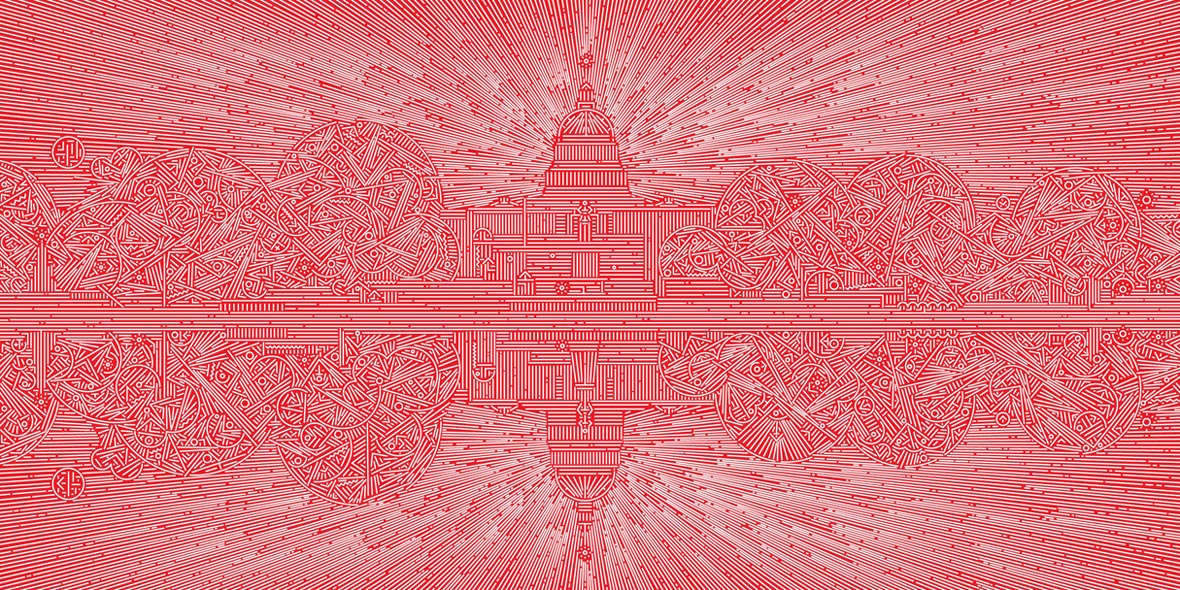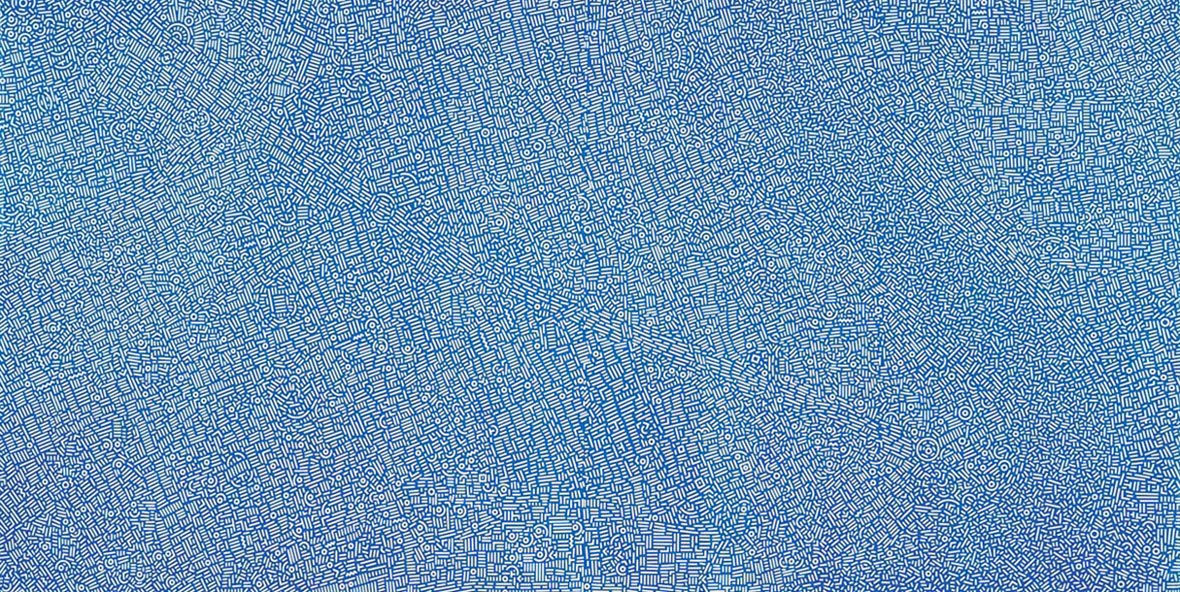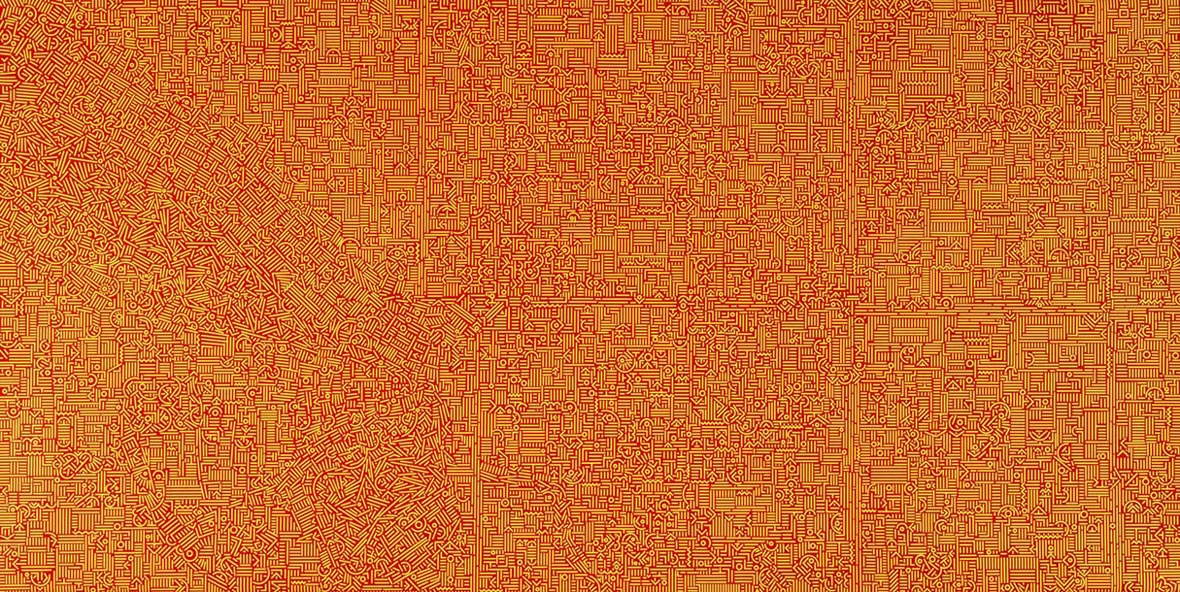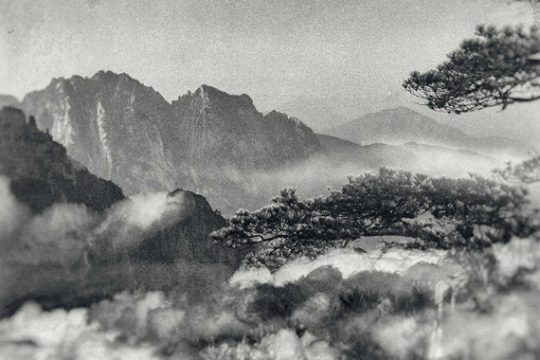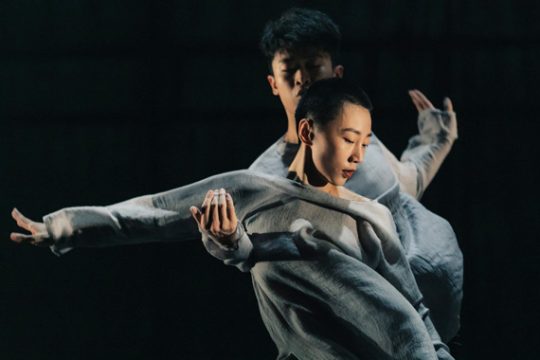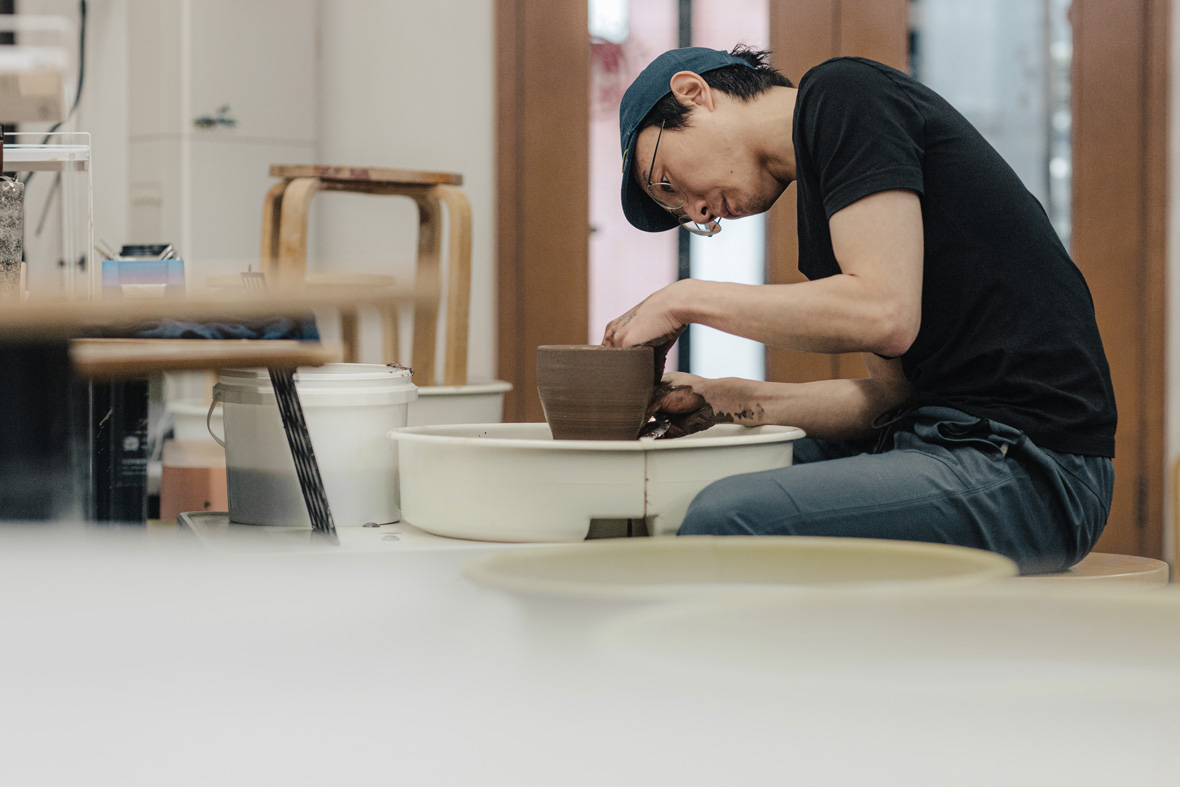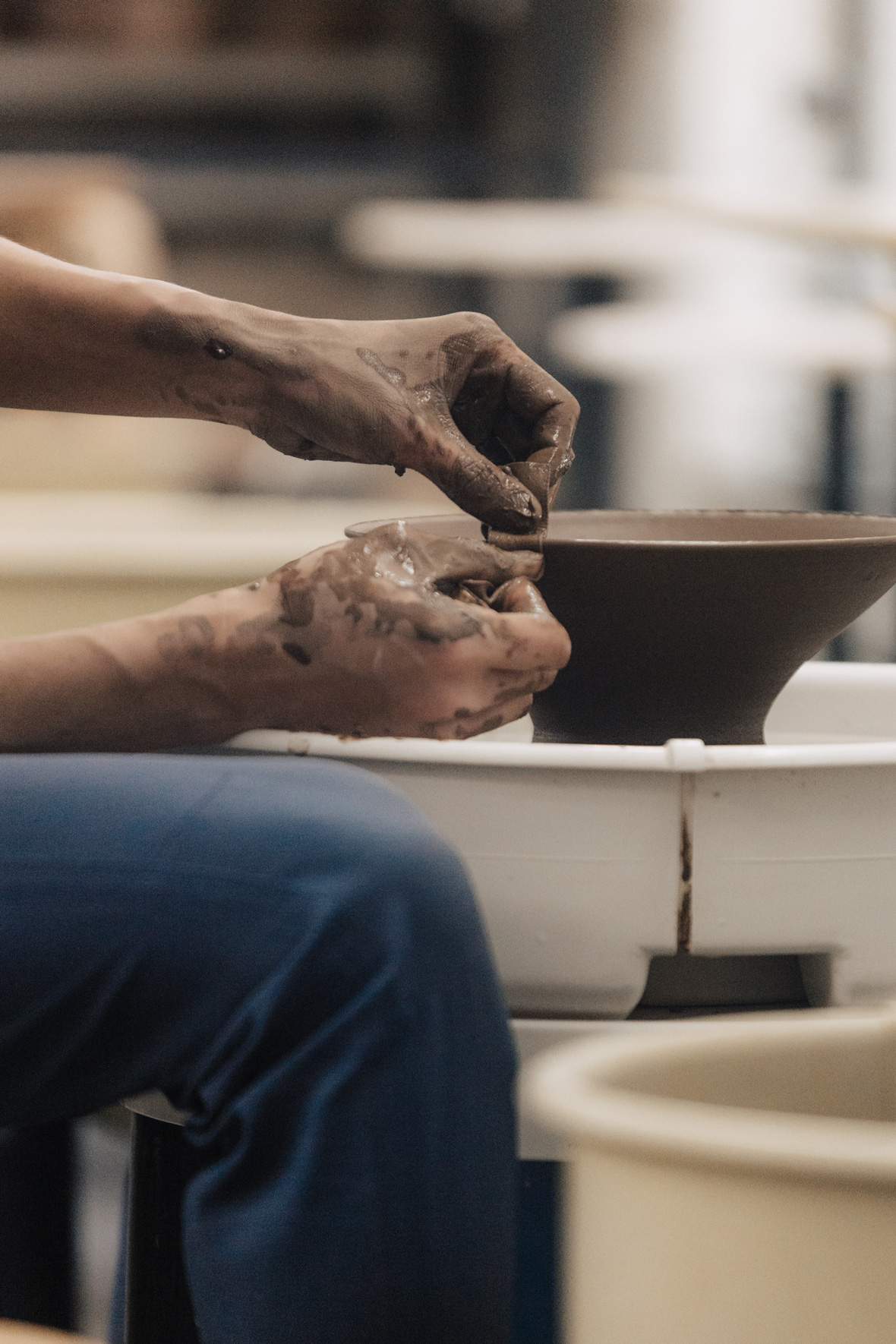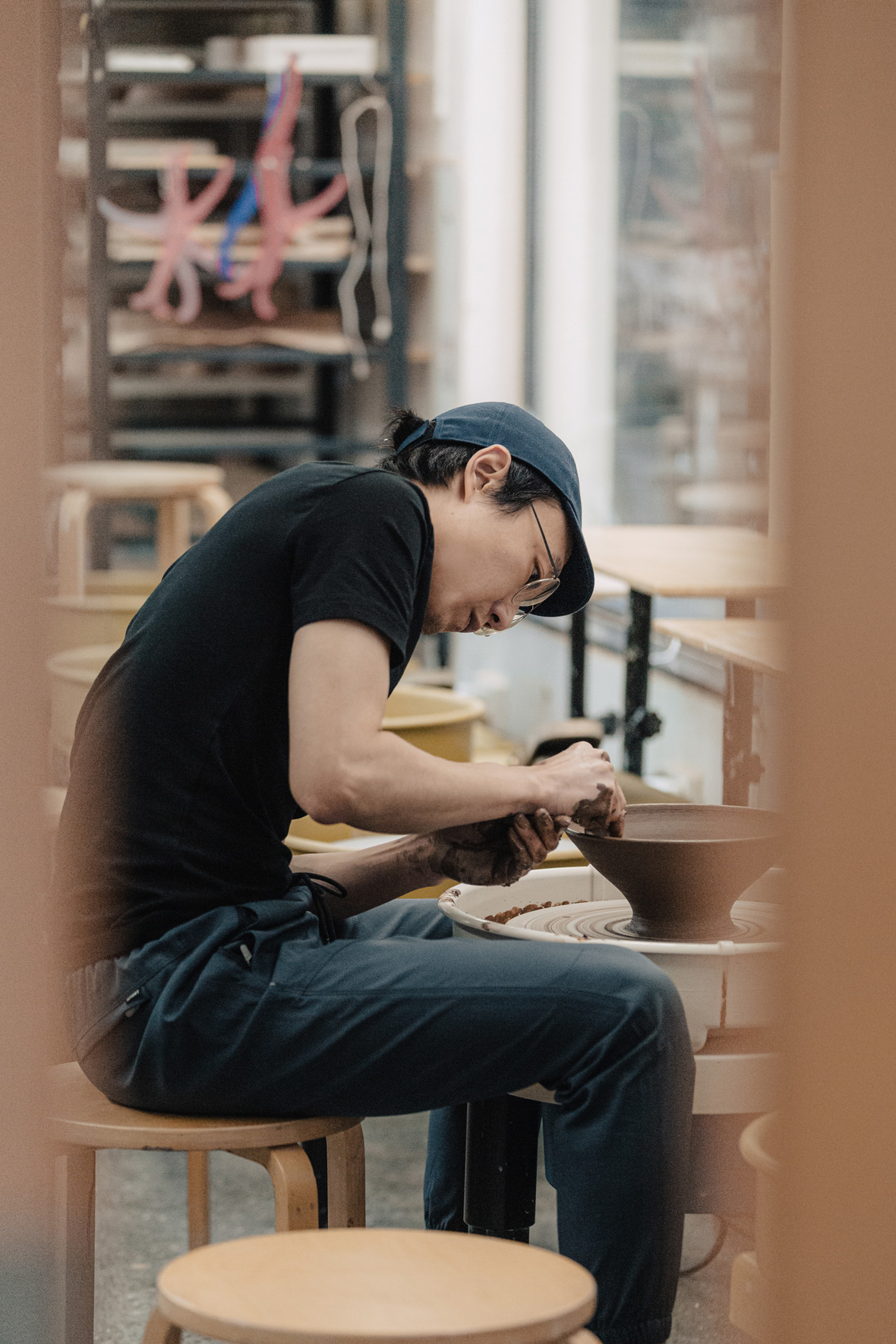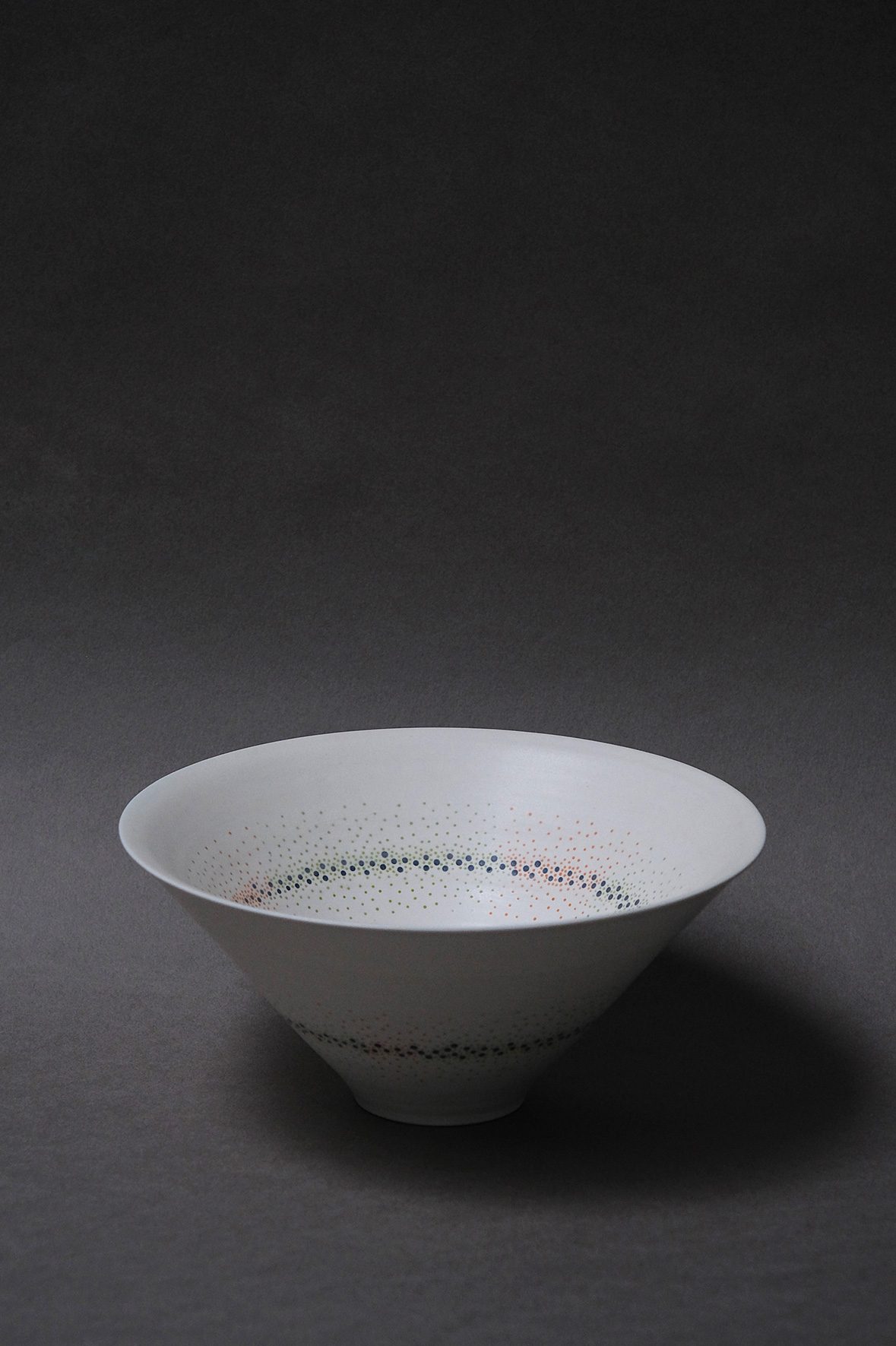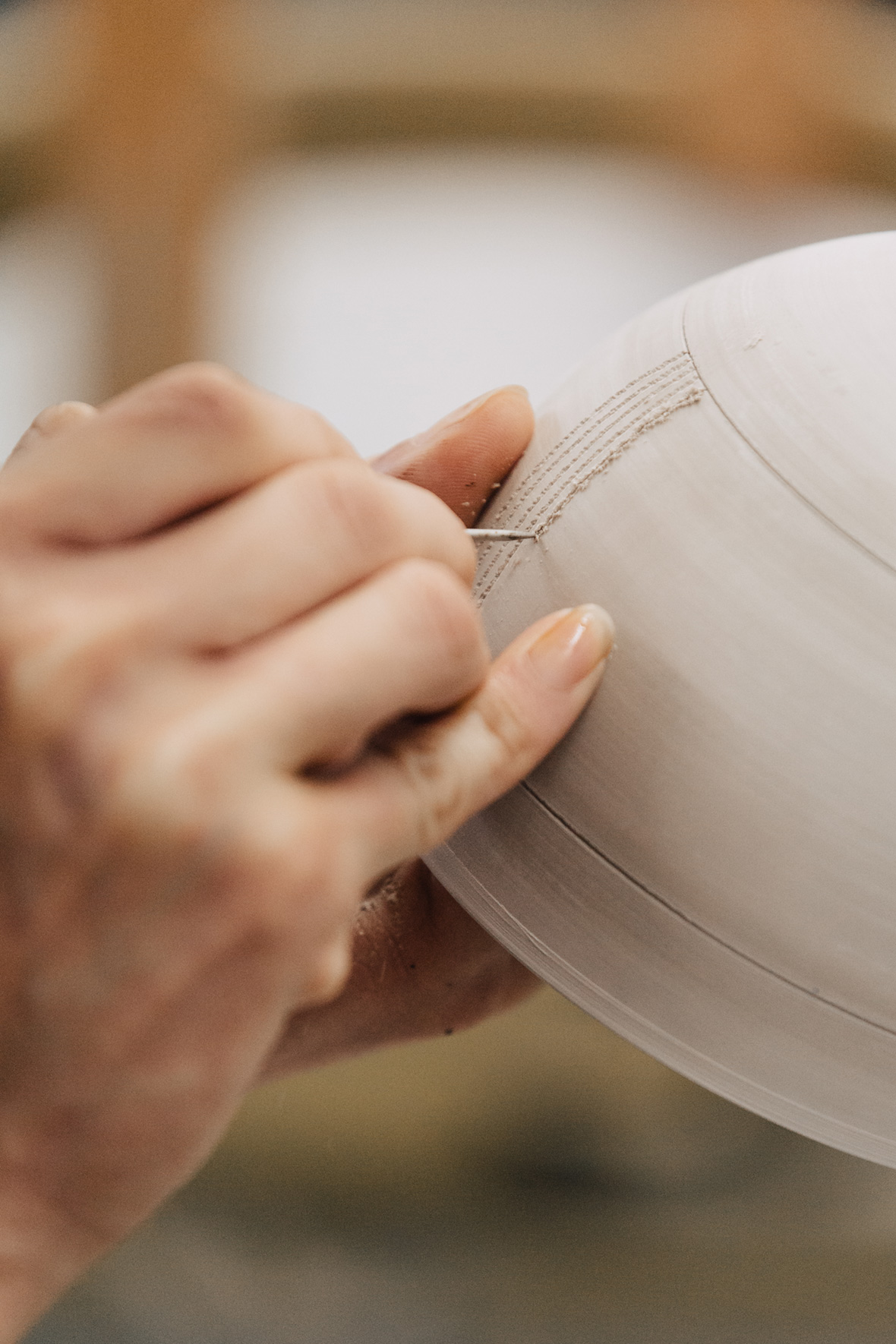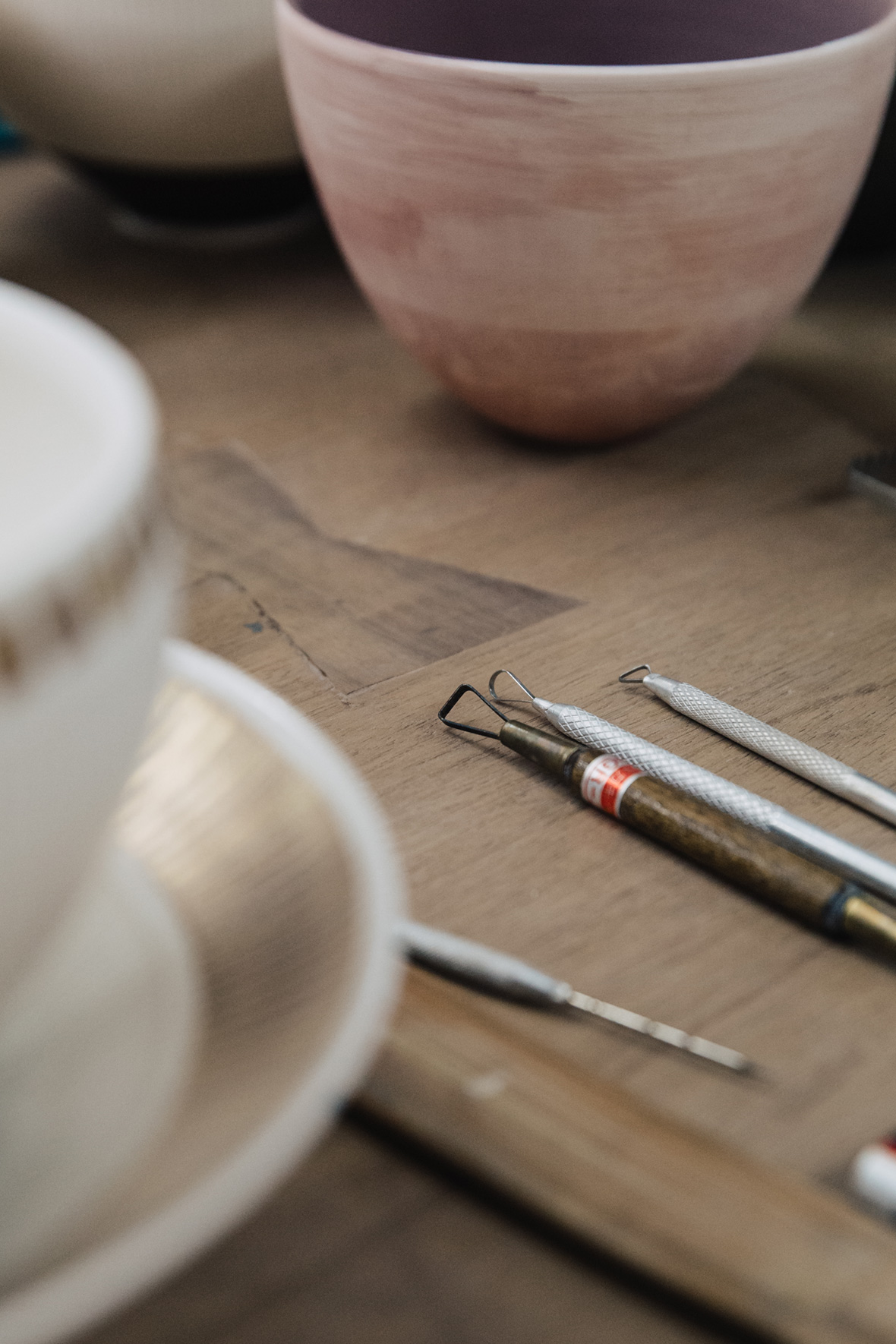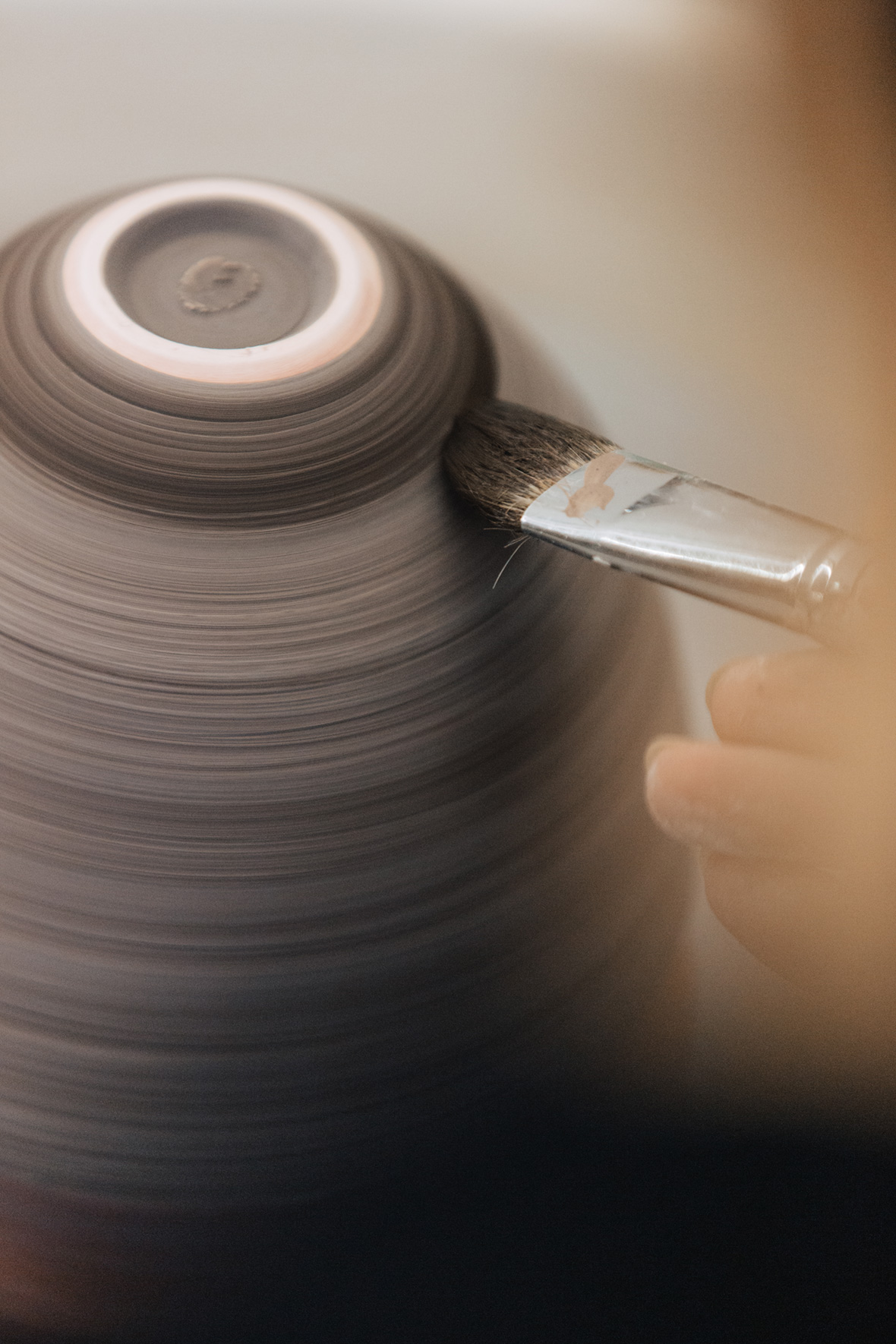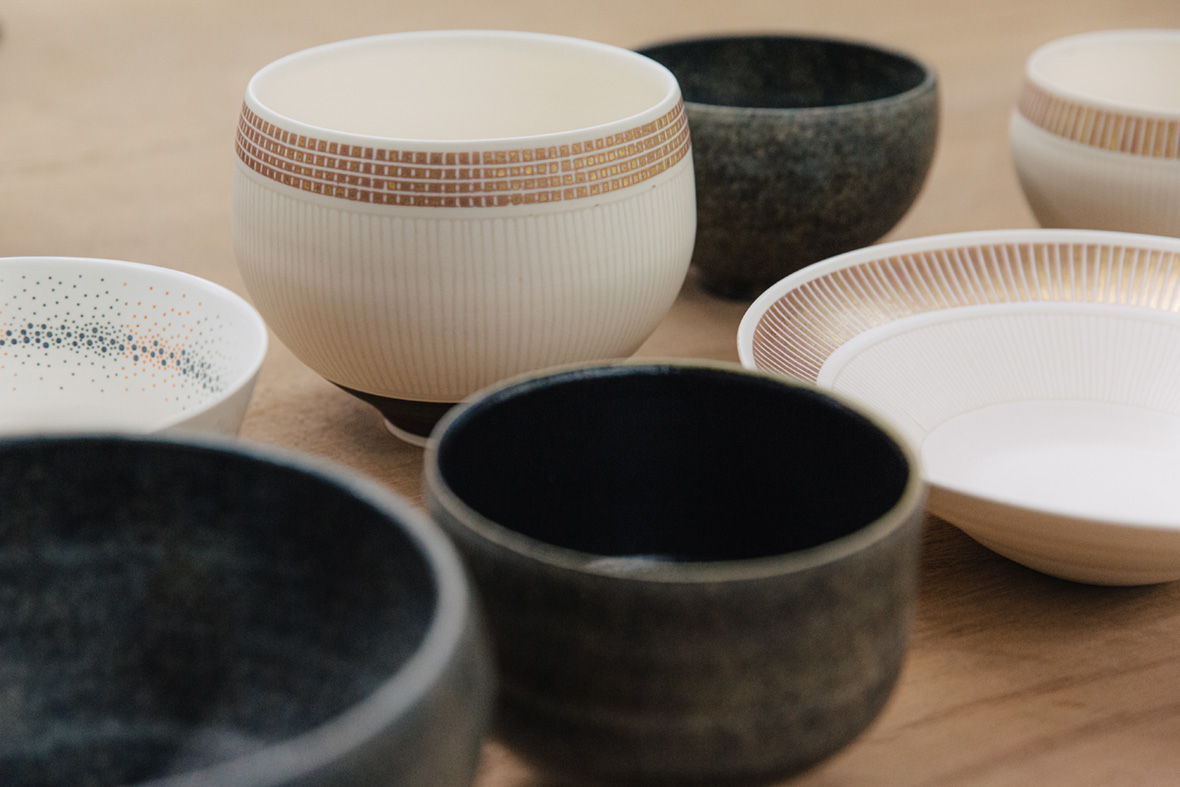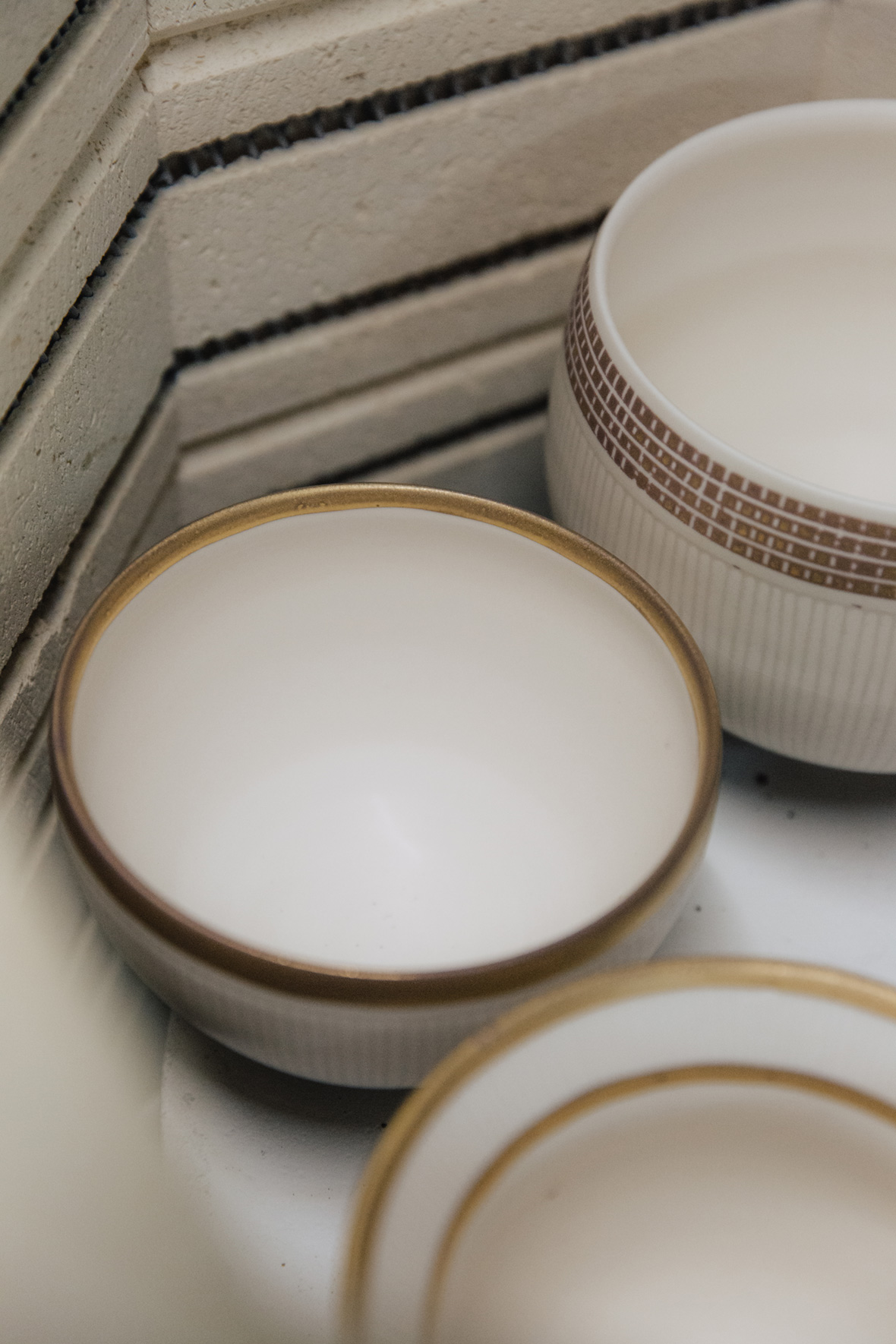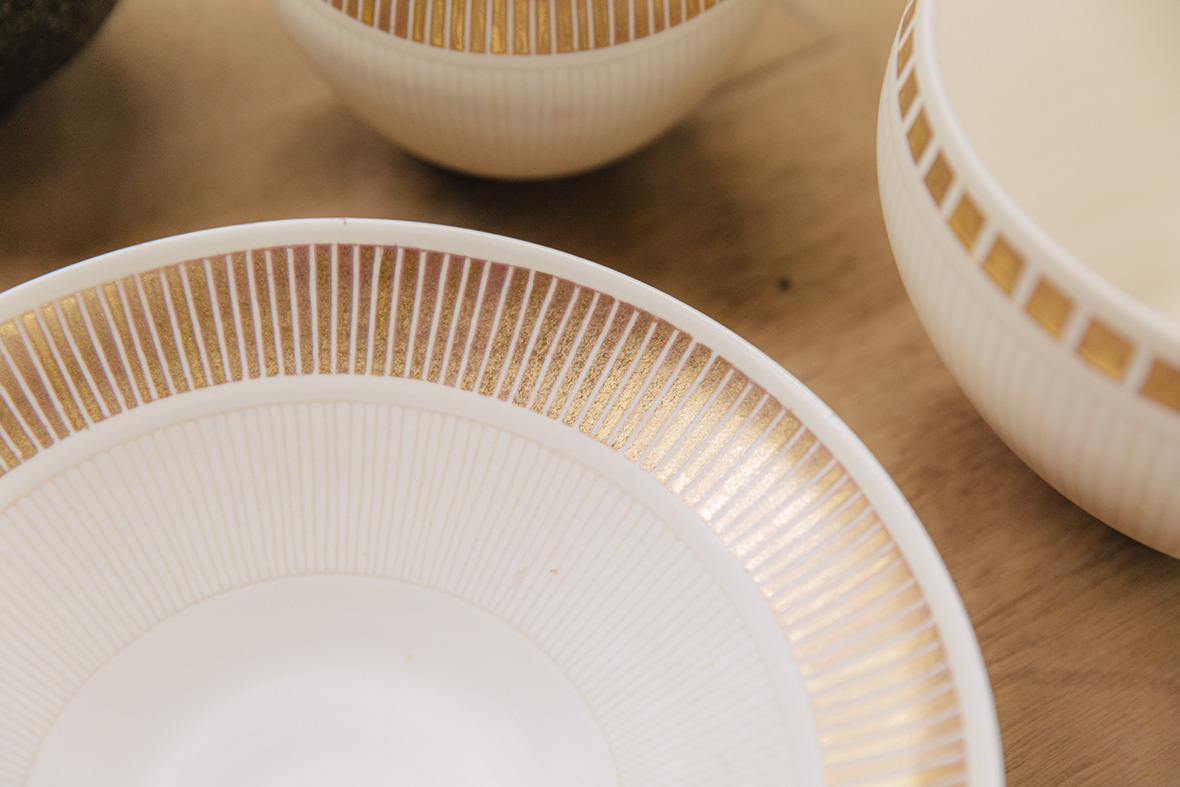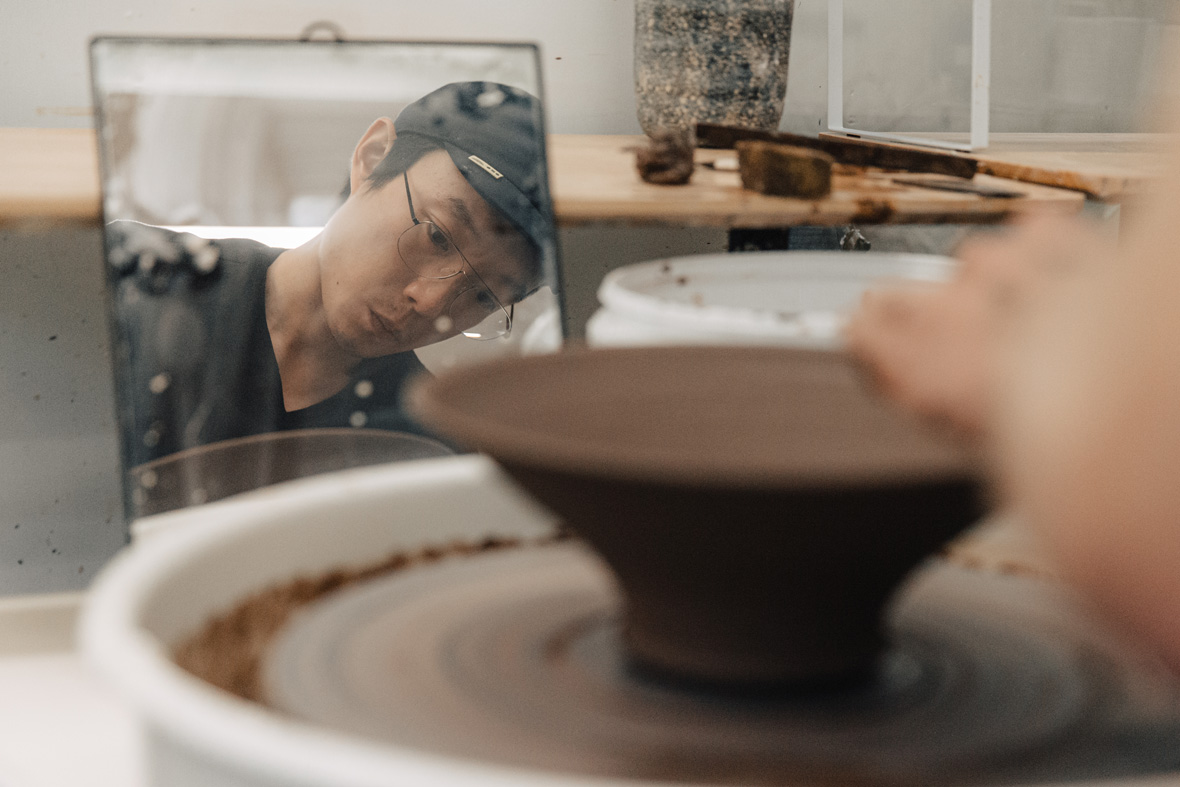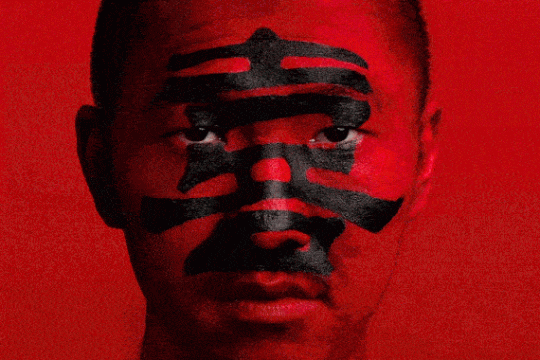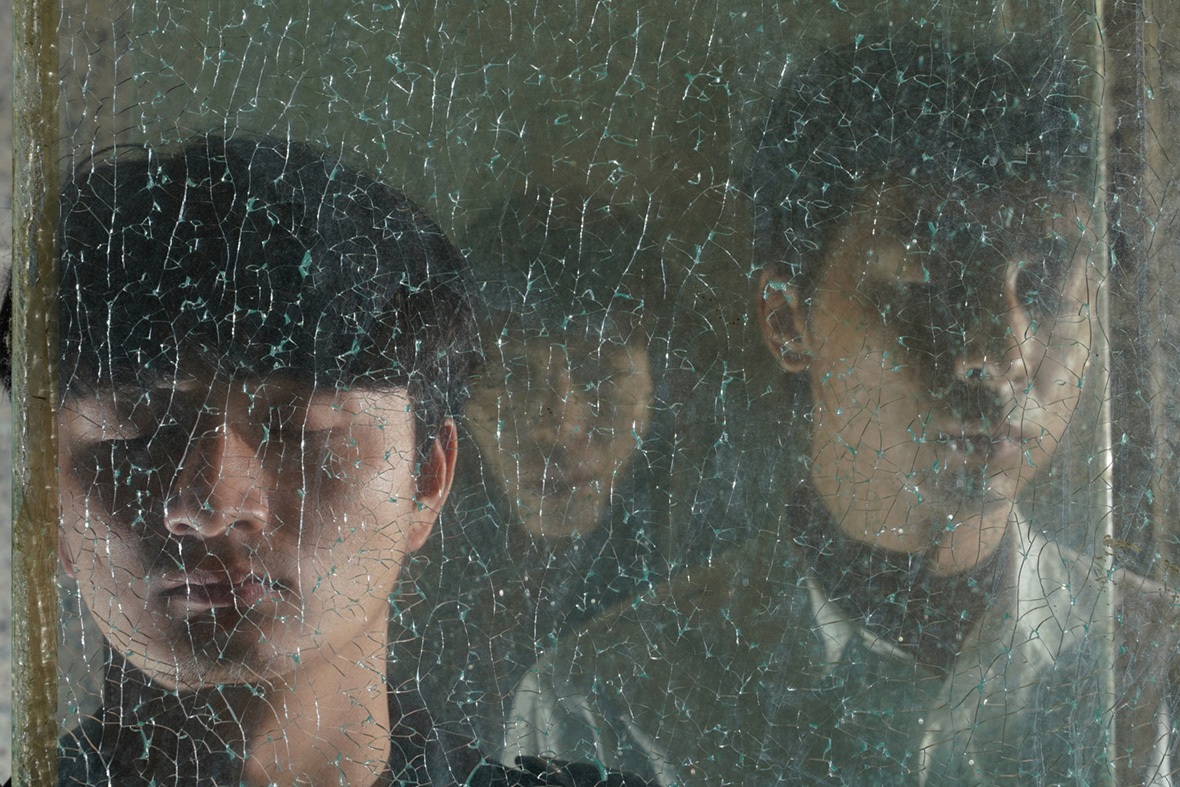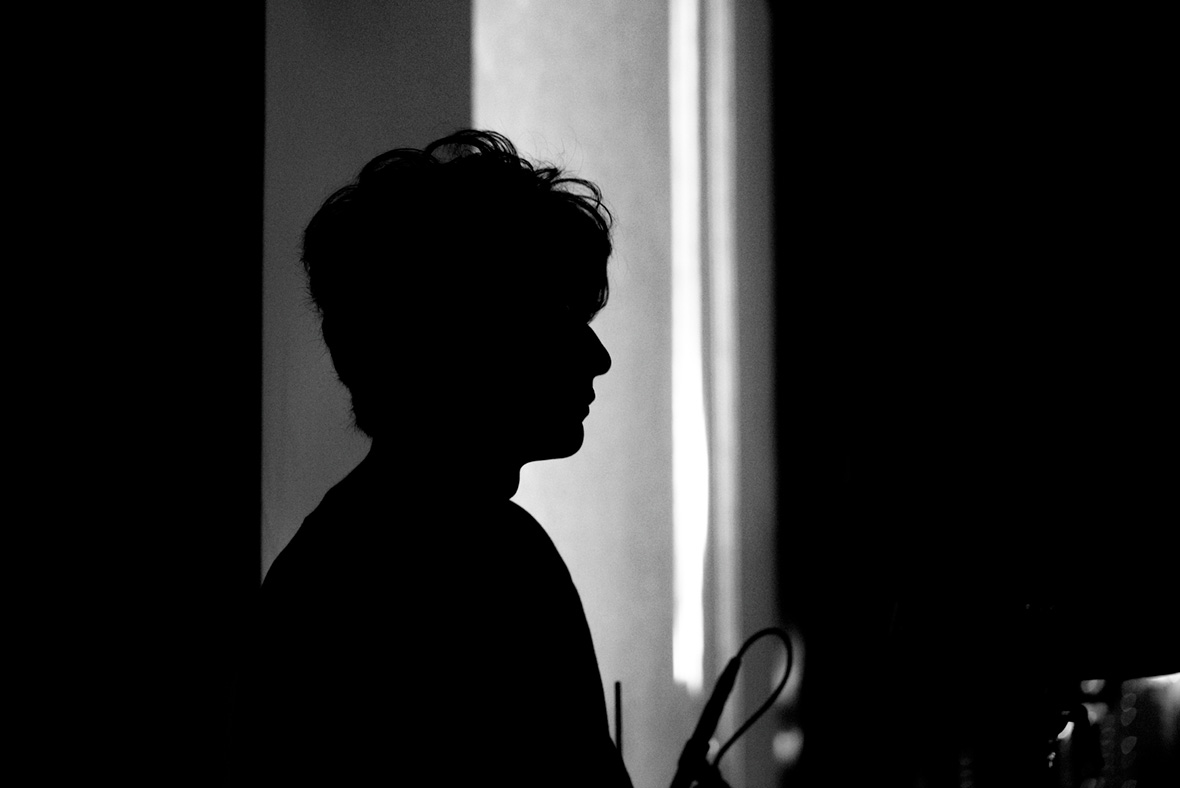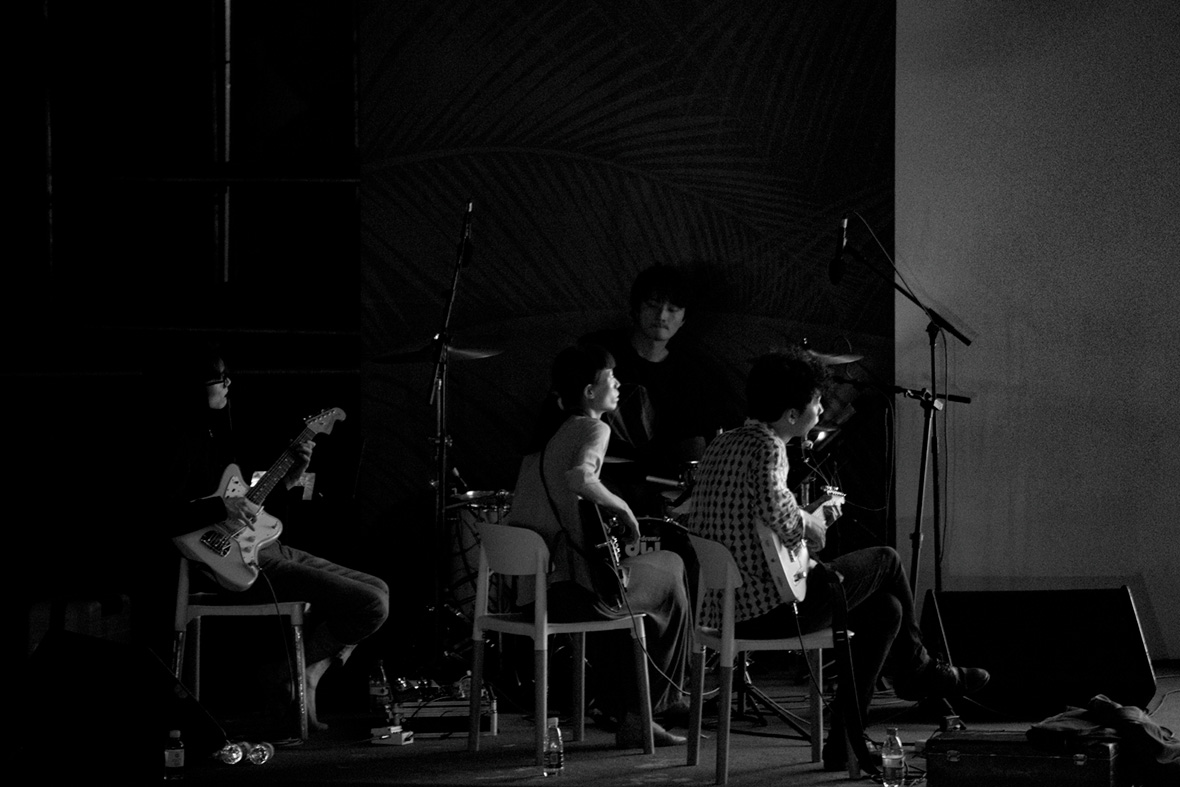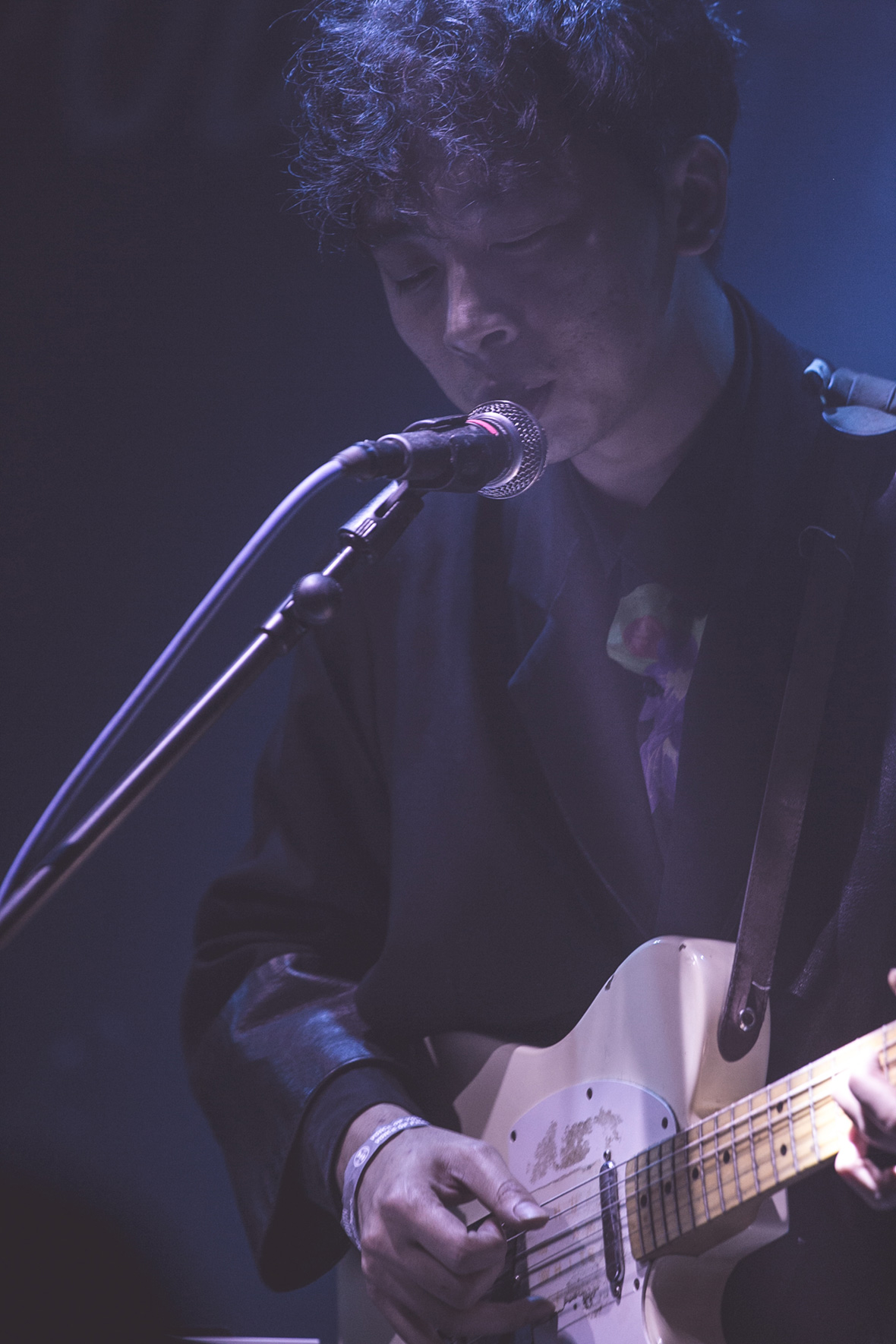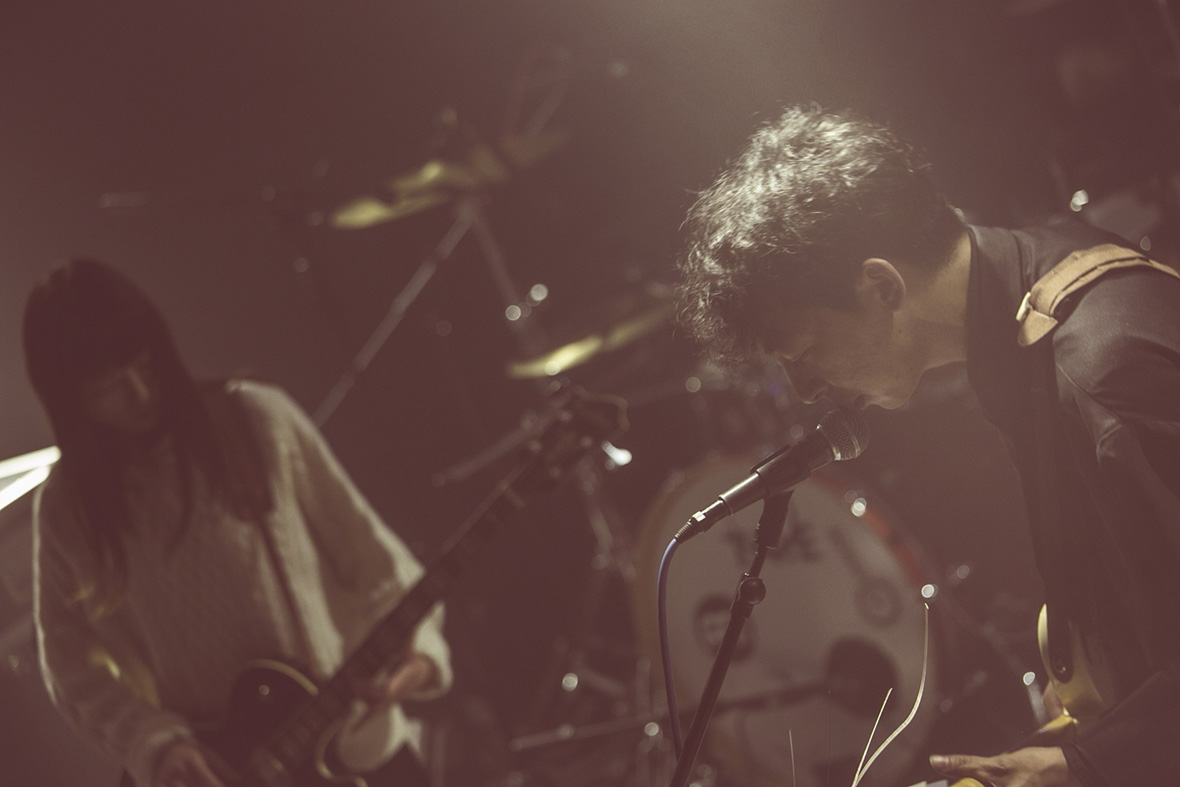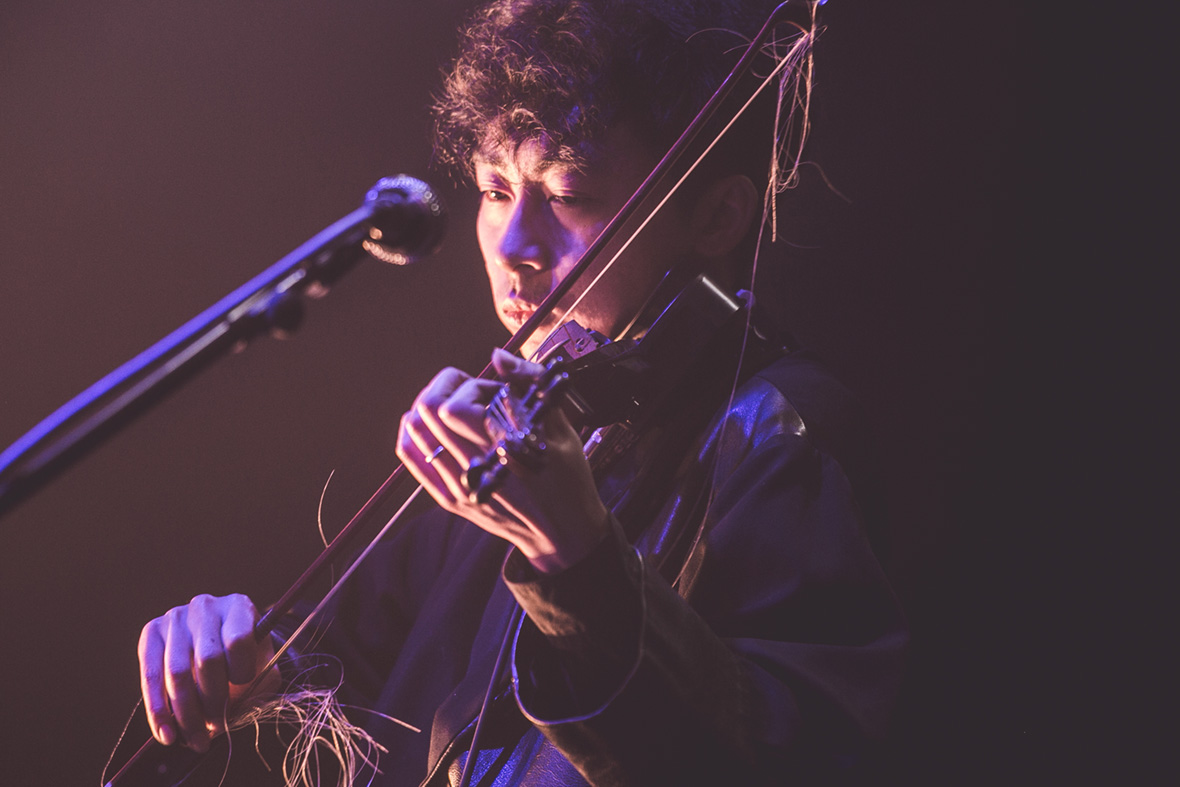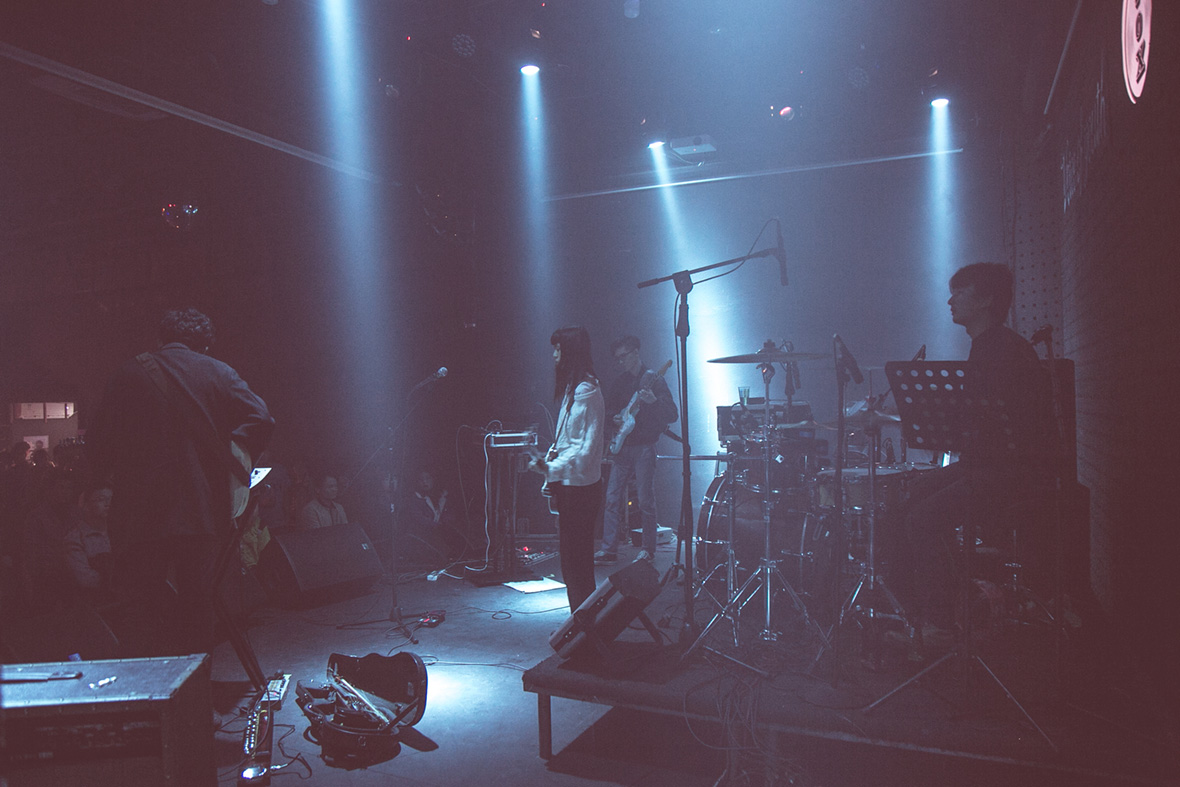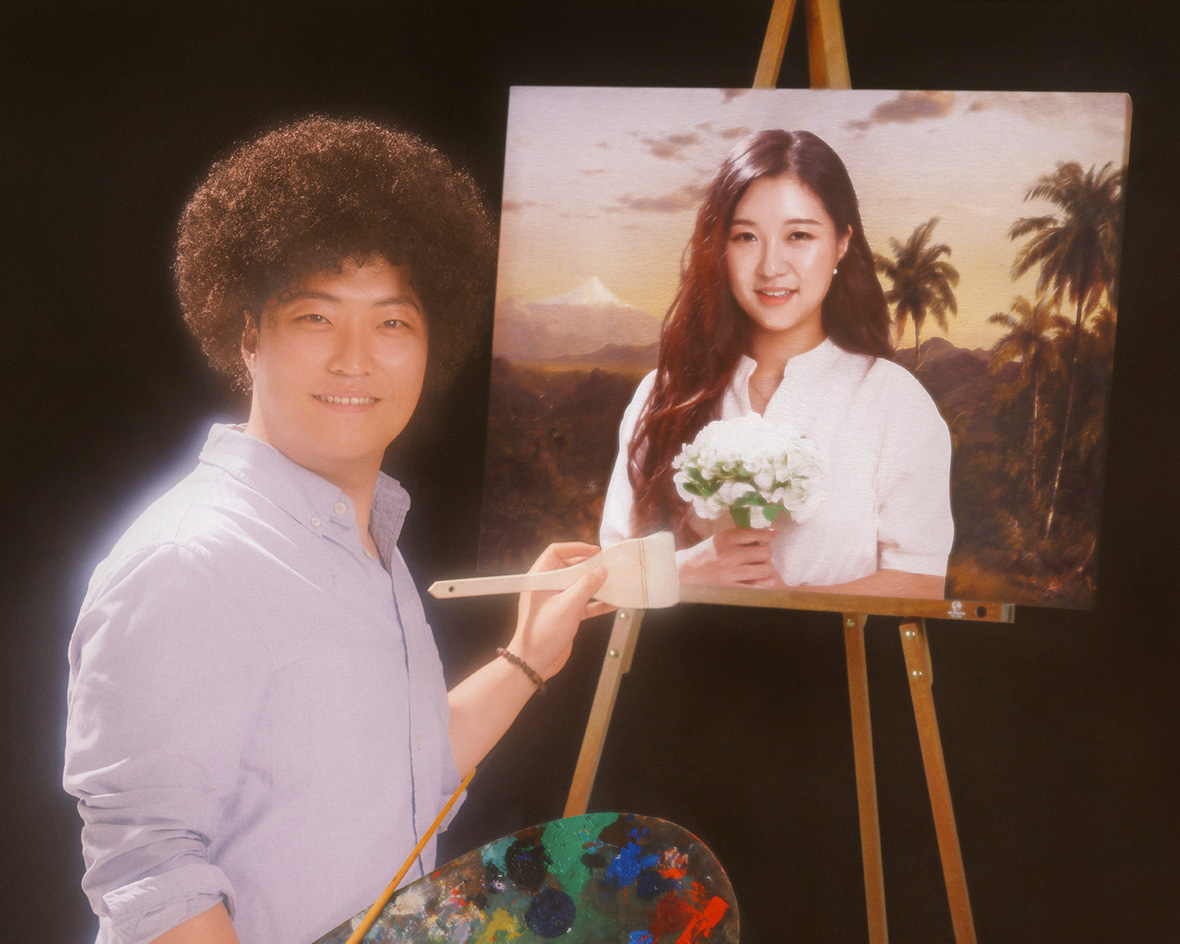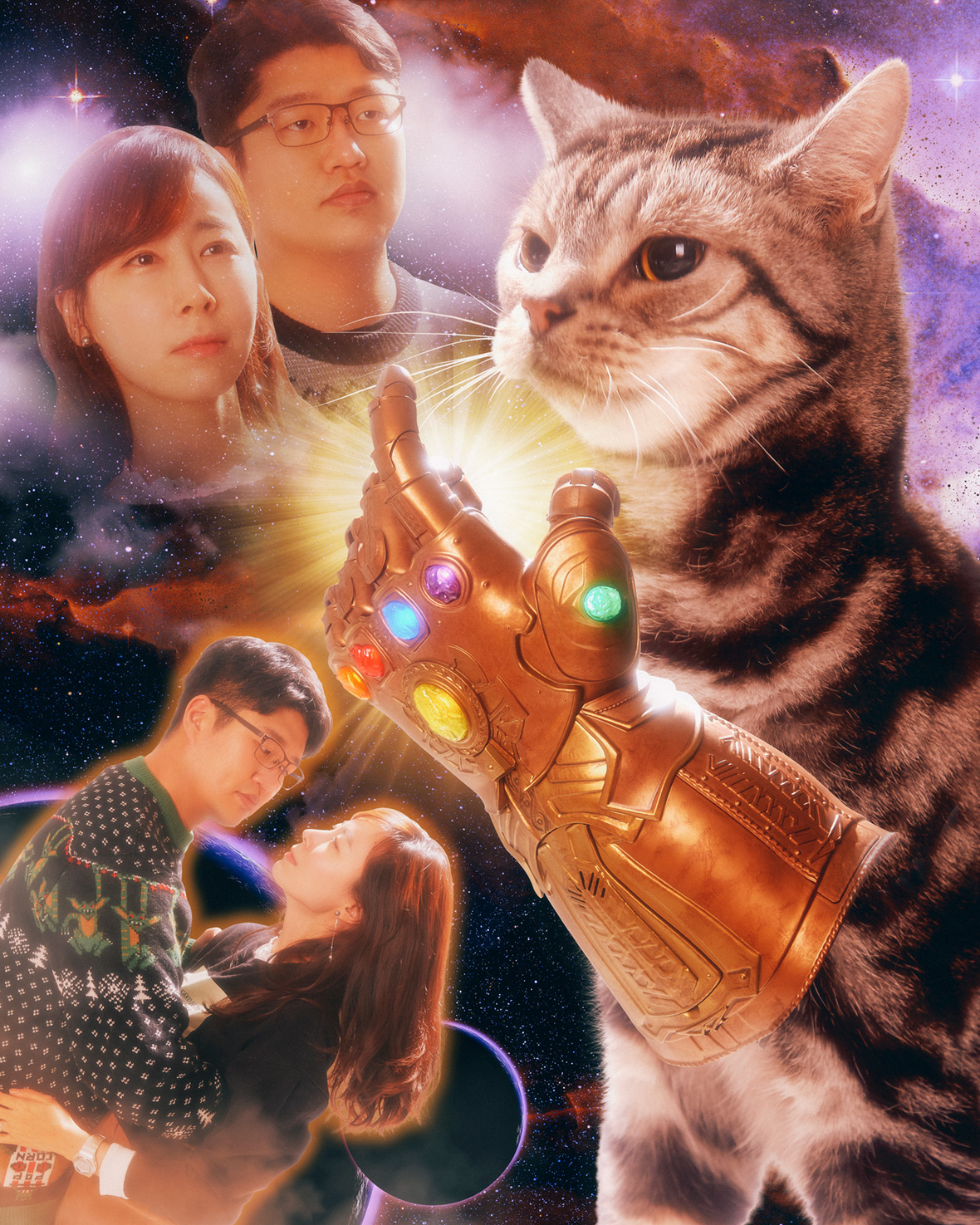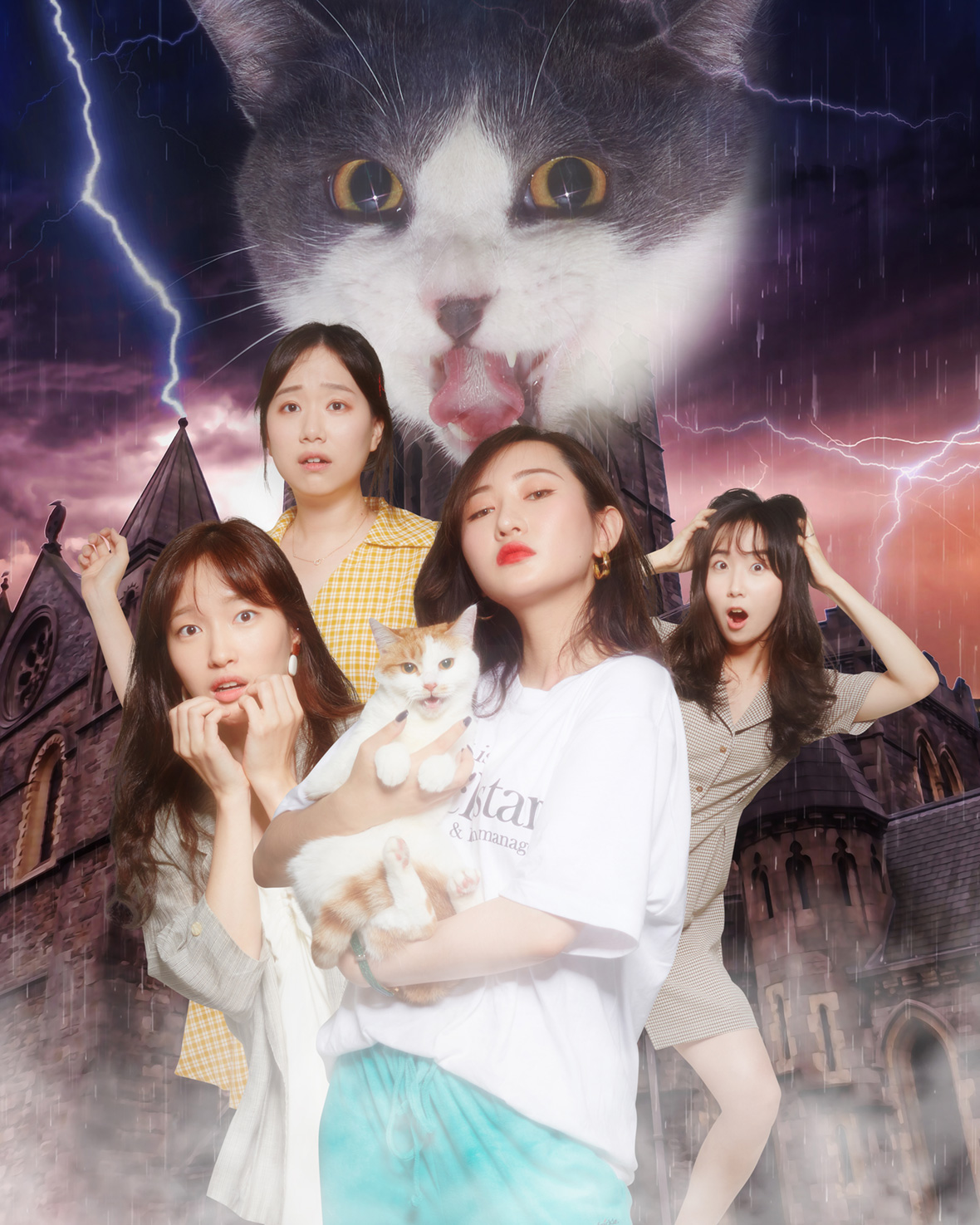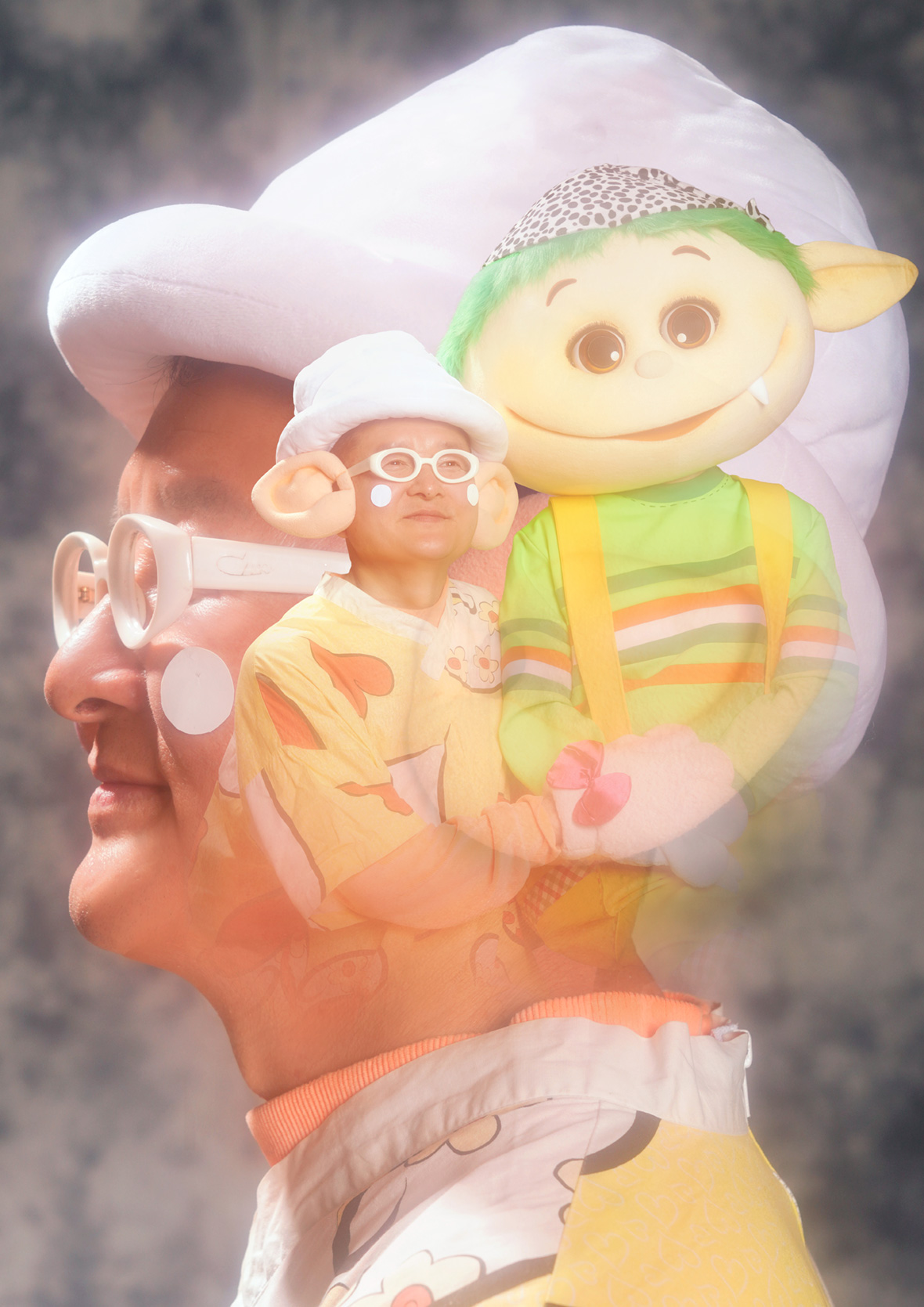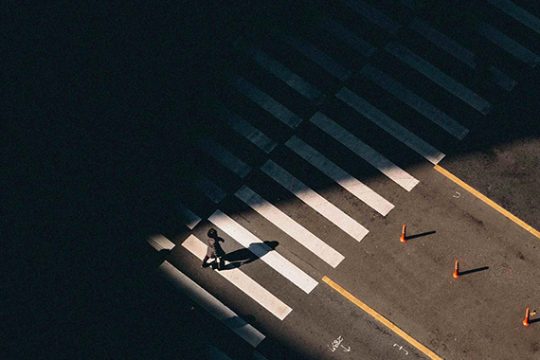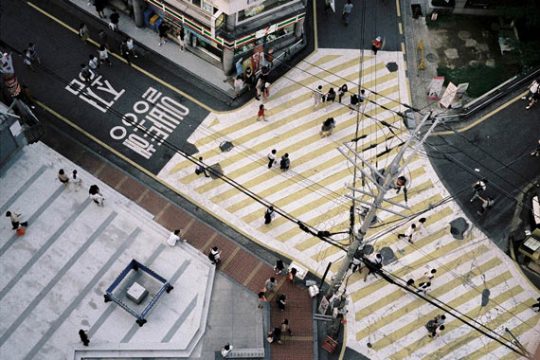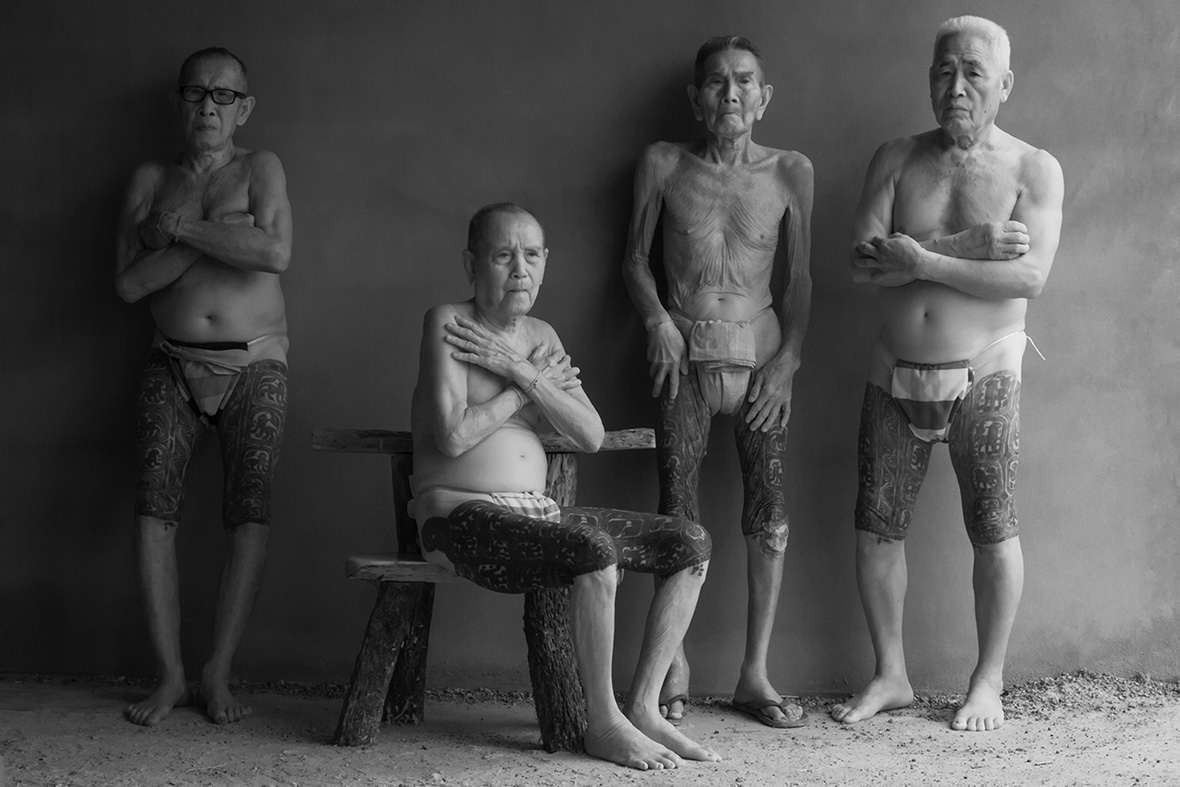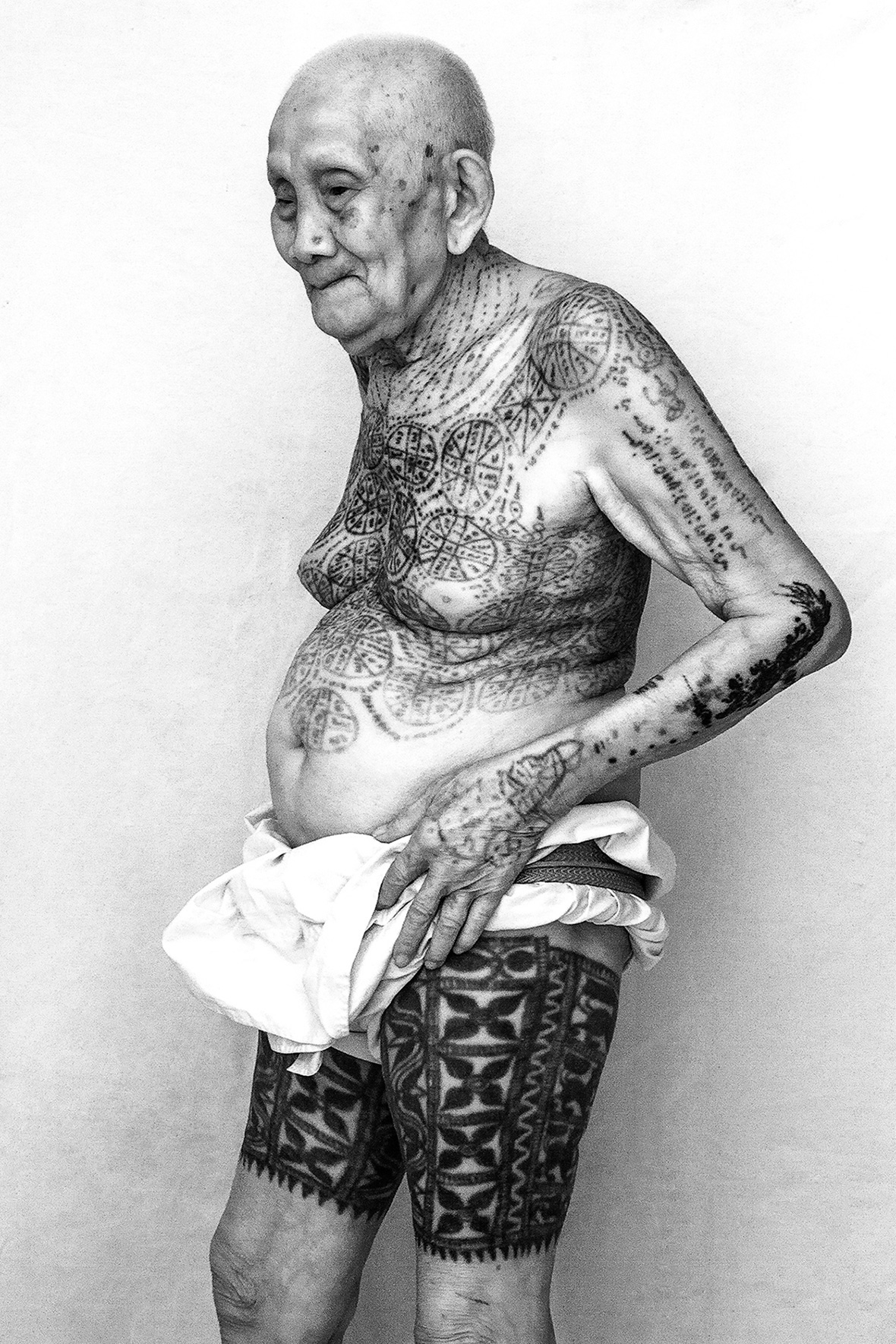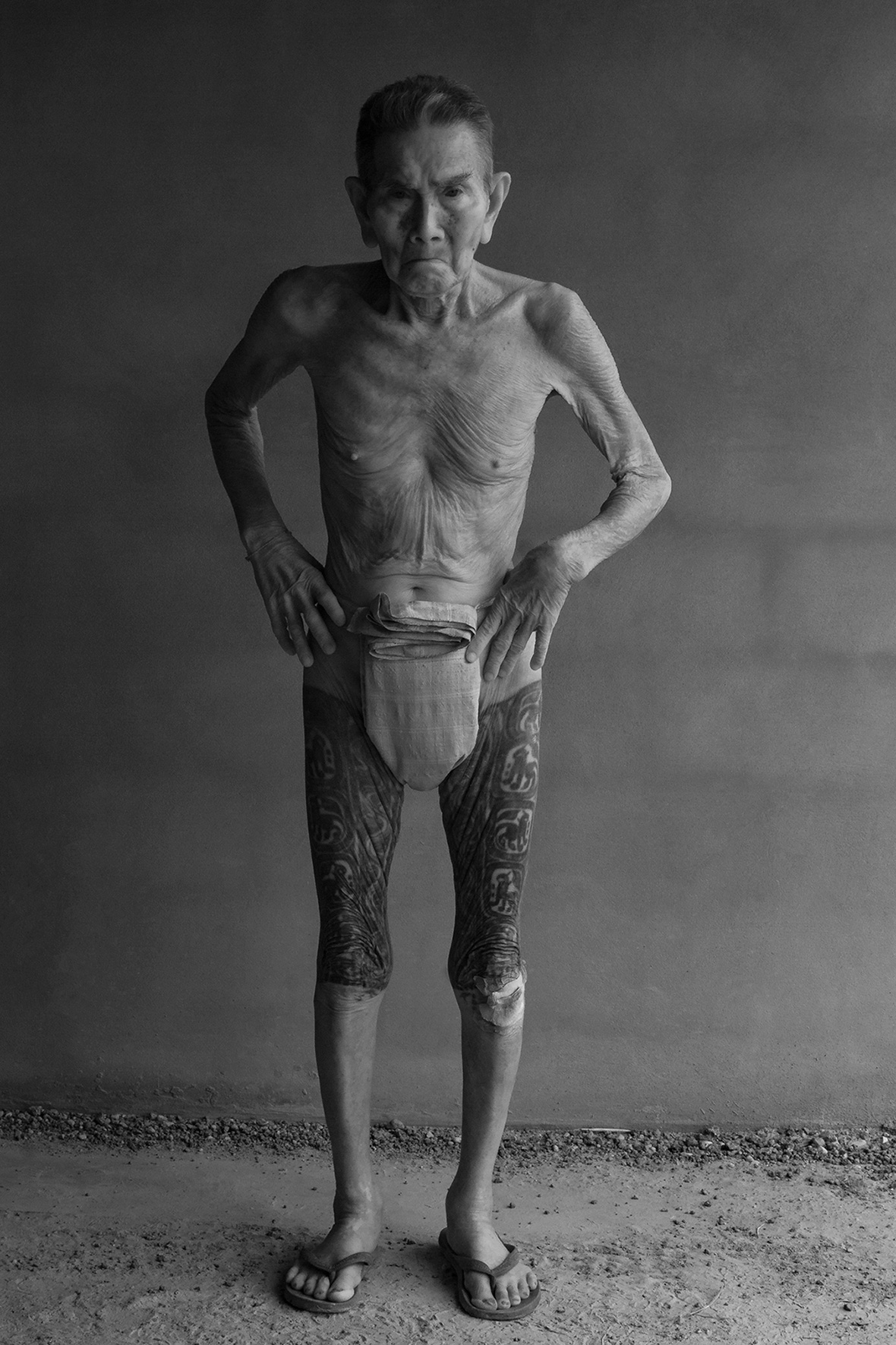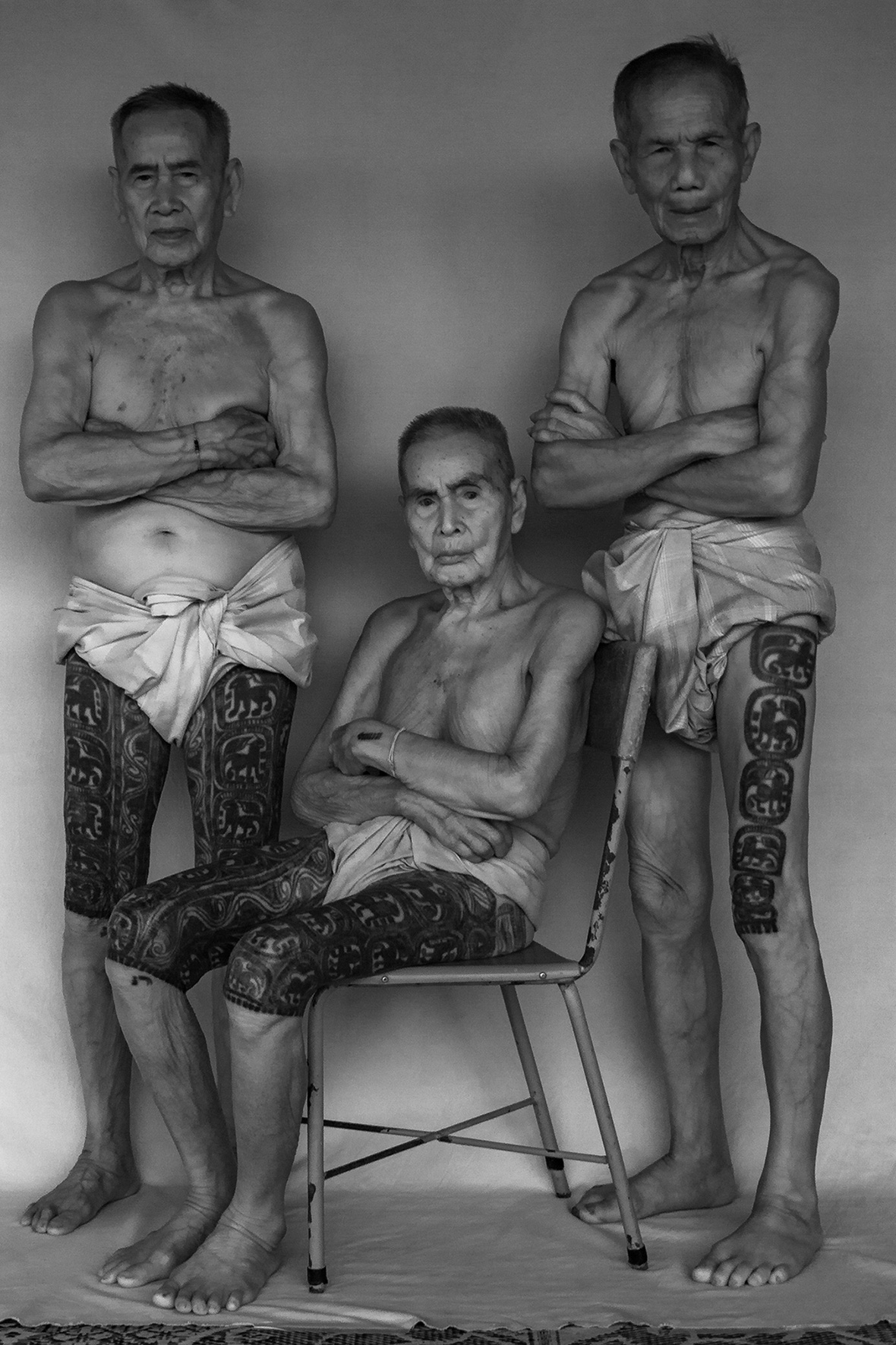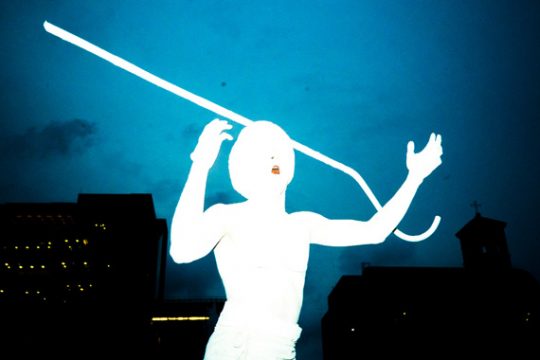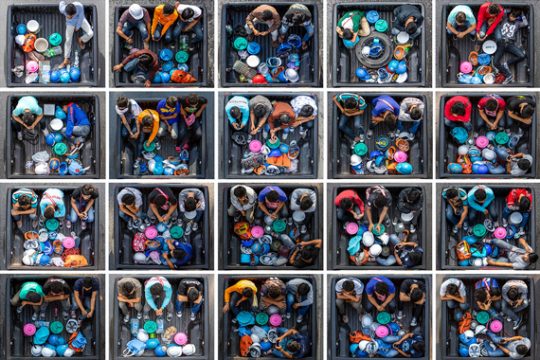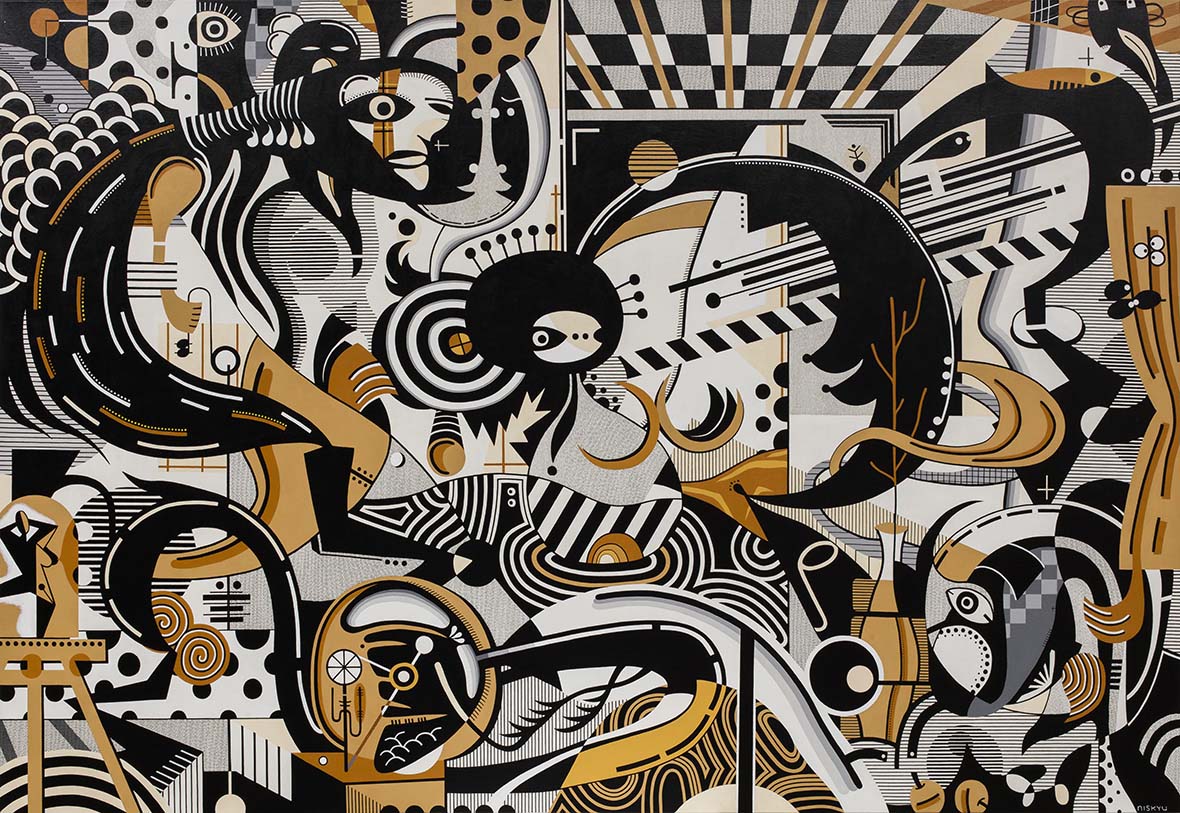
Even seen from the street, the riotous colors of Nisky Yu’s paintings, now on display at Shanghai’s Galerie Dumonteil, are enough to make you stop in your tracks and peer through the windows for a closer look.
This new series of works, titled Nisky, revisits the concept of “Metacollage,” an idea the Chinese painter first coined at his 2017 solo exhibition, Phosphenes. He defines a metacollage as art that taps into different cultural influences and artistic techniques, all of which, when synthesized together, forms something that’s bigger than the sum of its parts. In his latest exploration of this concept, he reaches into the past, referencing Han Dynasty petroglyphs, 18th-century chinoiserie, African tribal art, and more. By blending together these traditional arts and rendering them through his Cubist- and Futurist-inspired brushstrokes, Yu explores the flow of time and motion.
从巨大的落地玻璃窗看过去,Nisky Yu(俞杨)的作品悬在白墙之上,色彩缤纷繁芜、图形交错反复,你很难不就此驻足观望与遐想。
让我们把时间拨回 2017 年,Nisky 在展览“幻视”中首次应用“超拼贴”的观念,试图将不同艺术领域、文化背景下的两种或多种素材重构、整合,在一张画布上呈现出一种“更高层次的统一体”。非洲艺术、欧洲文艺复兴锡耶纳画派、立体主义、未来主义……这些曾让 Nisky 心驰神往的艺术流派,为他提供了一种全新的视角去看待时间与运动的方向。
This mash-up of cultural traditions and retro art styles serves as the foundation for the entire exhibition. For example, the lustrous blacks and oranges in Our Ancestors: Landscape Ensemble I call to mind the colors of ancient Greek pottery, while the human figures—with their elongated limbs and curved forms—evoke imagery of African woodcarvings. These unlikely influences are all braided together through contemporary aesthetics. Every element is intricately detailed, yet the overall composition has a powerful unity. In this regard, Yu is like a symphony conductor, folding together various elements—connected or irrelevant, similar or disparate—into a greater whole.
文化融合正是此次在杜梦堂画廊举办的“Nisky”同名展览一个非常重要的主题。在《我们的祖先:重奏山水》这幅作品里,Nisky 说画面的基调灵感来源于古希腊瓶画,但在具体的人物形象上却加入了非洲木雕和当地艺术等的元素,而作为抽象代表的几何图形则贯穿了他所有的作品。画面元素细末繁复,整体却显得磅礴大气,Nisky 比起传统画家,更像是交响乐的指挥家,他把种种有关的、无关的、相似的、相悖的所有元素揉杂,用来呈现更宏观的内容。
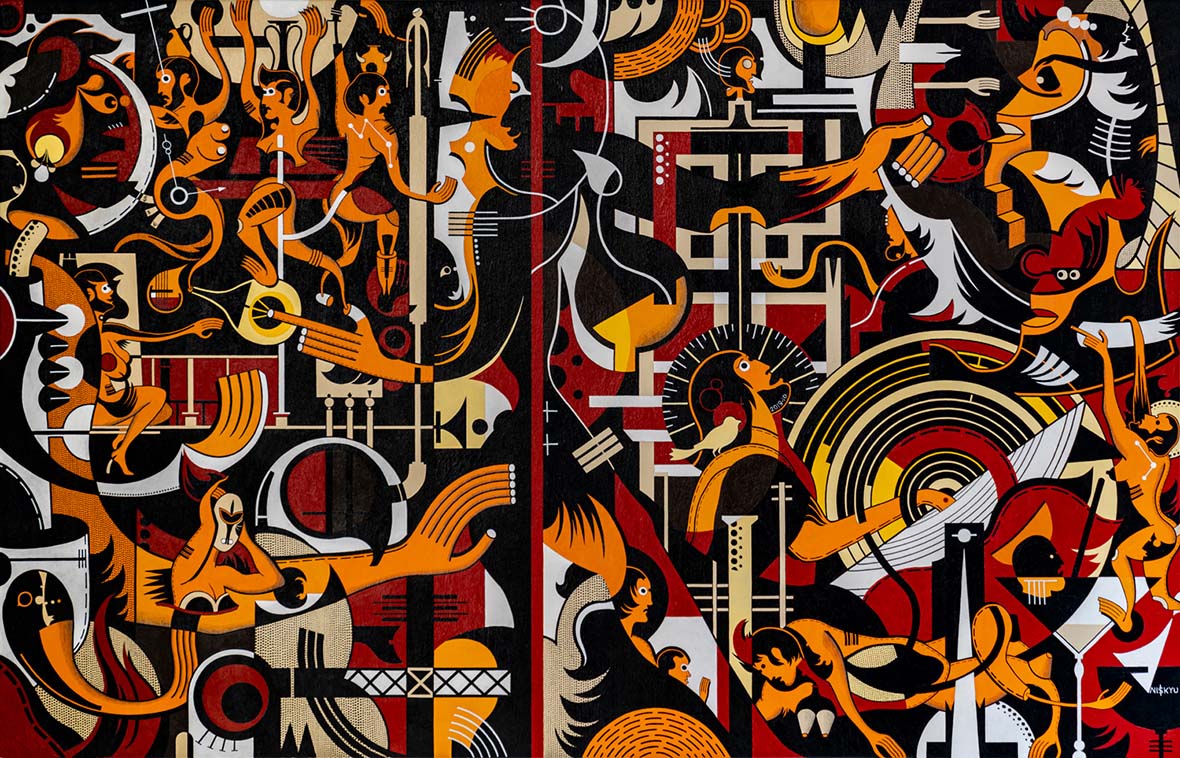
Aside from style and subject matter, Yu’s fondness for fusing together different cultures is evident in the title of his paintings. That’s the case in Surfer Rococo, which pays homage to two sources of inspiration far removed from one another: surf rock and 18th-century chinoiserie. “Surfer Rococo was originally the name of a song I made,” he says. “But it felt like a fitting title for this painting as well.”
“‘Surfer Rococo’是我一首编曲的名字,我发现用它来概括这个主题还蛮确切的。” Nisky 说,上世纪五六十年代的流行文化对他影响颇深,“冲浪摇滚”曾风靡一时,是故用“冲浪”二字表达他对那个时代的致敬;而 18 世纪在欧洲宫廷盛兴的“中国风”更是给了他非常多的灵感,所以用“洛可可”来表达他心中融合创造之美的代名词。
Within these cultural composites, Yu looks to evoke a certain nostalgia by choosing subject matter familiar to viewers from their previous knowledge and experiences. A distant familiarity allows them to connect with art.
These sources of inspiration are often altered beyond recognition in the final version of the paintings, yet a few glimmers are still visible. “For example, the ‘flower notes’ in Overlapped Aspects II are, in fact, neither musical notes nor any flower we’d see in real life,” says Yu. “Yet from the overall composition, we can see vague shadows of the notes and flowers we’re familiar with. This feeling is the ‘nostalgia’ that I’m trying to convey.”
而在这样文化大融合之中,Nisky 试图讲述的故事,却是关于“乡愁”的:这种“乡愁”基于观者的知识与个人见闻,随后对作品产生的“共鸣”。
在 Nisky 笔下成型的最终画面上,很多原始的“素材”可能已被改变的无法辨认,但还是会闪现其原来的一些特征,“比如贯穿《重相位II》的‘音符花束’,老实说这个形象既不算音符也不是我们生活中见到的花朵,但我们从它的整体与构成上还是能依稀窥见‘音符’与‘花束’那似曾相识的影子。而这种感受就是我想传达的‘乡愁’。”Nisky 补充道。
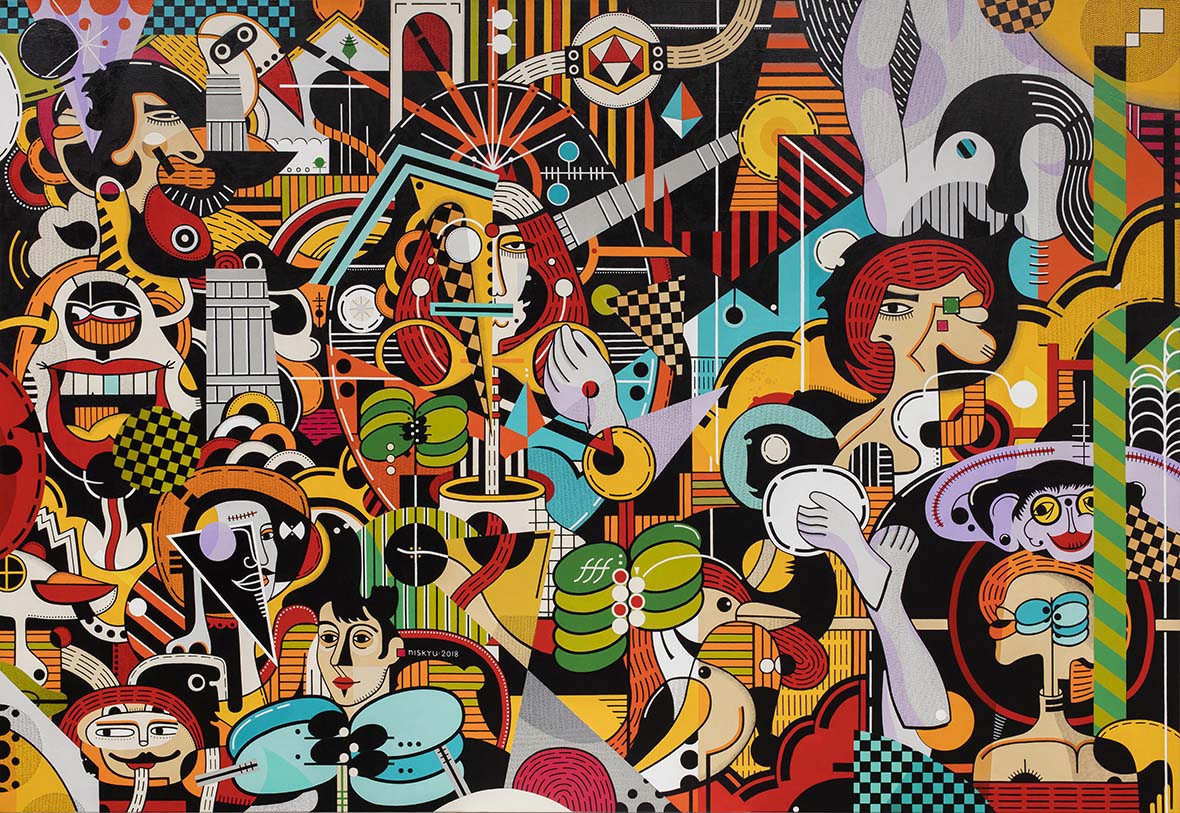
In Overlapped Aspects II, among the fantastic creatures, made-up musical notations, flora, and highly rhythmic colors, there’s a unique ‘musicality’ that’s linked to his interest in music production.
For over two years now, Yu has been writing music to pair with his paintings. Just as in the “grand synthesis” of cultures and periods that his work seeks to achieve, the interpenetration of painting and music—of form and feeling—creates a new whole.
With the proliferation of ‘cloud’ exhibitions in the wake of the pandemic, Yu is especially mindful of the value of offline experiences. So for this exhibition, he composed 16 original songs that are only available to be listened to in person. “This exhibition has a ‘jukebox’ segment, and one of the songs is called Waiting Until You’re Here, which I wrote during the pandemic,” he says. “If those listening can take even the slightest bit of comfort and strength from it, then that would be hugely encouraging for me.”
在《重相位II》中,在各类奇幻生物、音符、花束和极具韵律的色彩中, Nisky 的作品具有一种其独特的“可视化音乐”风格。这和他在绘画创作时同时进行着的音乐创作不无关系。在“云看展”成为了业内一种普遍现象存在的时候,Nisky 也为这次的线下空间准备了他原创和参与编曲的 16 首音乐作品,让大家在观赏画作的同时也浸润在音乐的空间里,和音乐互动。过去两年多的时间里,Nisky 的绘画创作和音乐创作是同步进行的,和他作品所想传递给大家的“大融合”信息一样,绘画与音乐互渗,形与感便就此共通。
“这次展览特别设立了一个点歌环节,其中有一首叫《等你在》,是我在疫情期间写的,如果大家在听完后能得到哪怕一点点安慰与力量的话,也是对创作者最大的鼓励了。”Nisky 如此回应道。
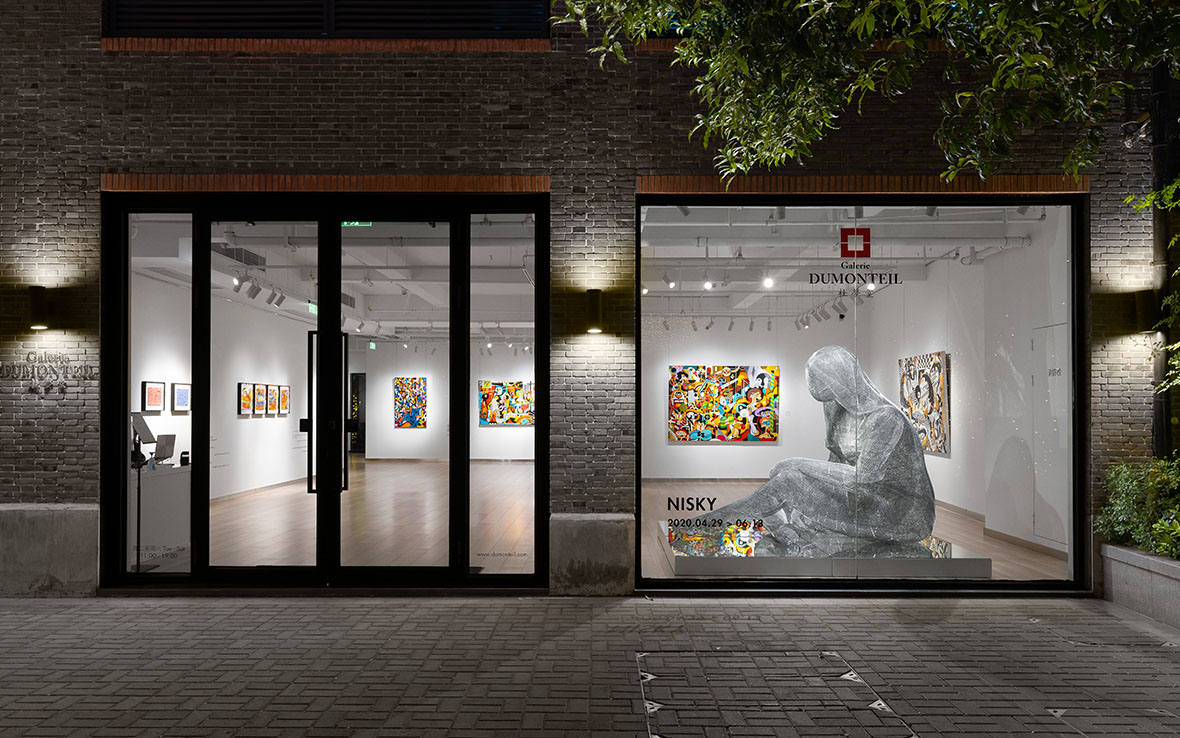
Exhibition:
Nisky
Dates:
April 29th, 2020 ~ June 13th, 2020
Address:
Galerie Dumonteil
199 Hengshan Road, Bldg. 105
Xuhui District, Shanghai
Hours:
Tuesday ~ Saturday, 11 am ~ 7 pm
Like our stories? Follow us on Facebook and Instagram.
Contributor: Chen Yuan
Images Courtesy of Galerie Dumonteil & Nisky Yu


